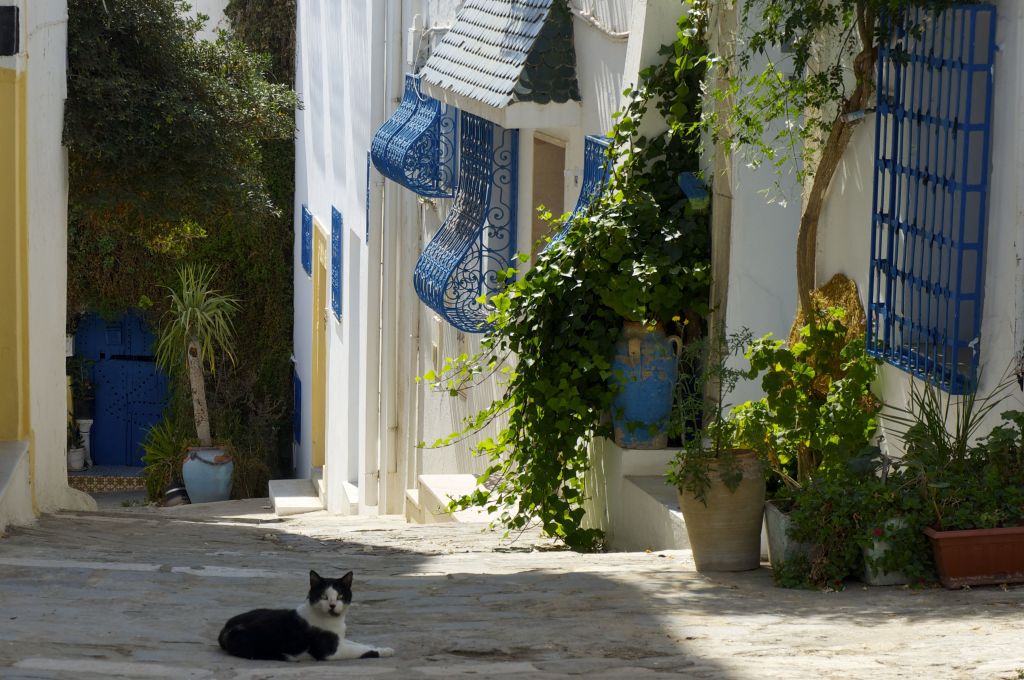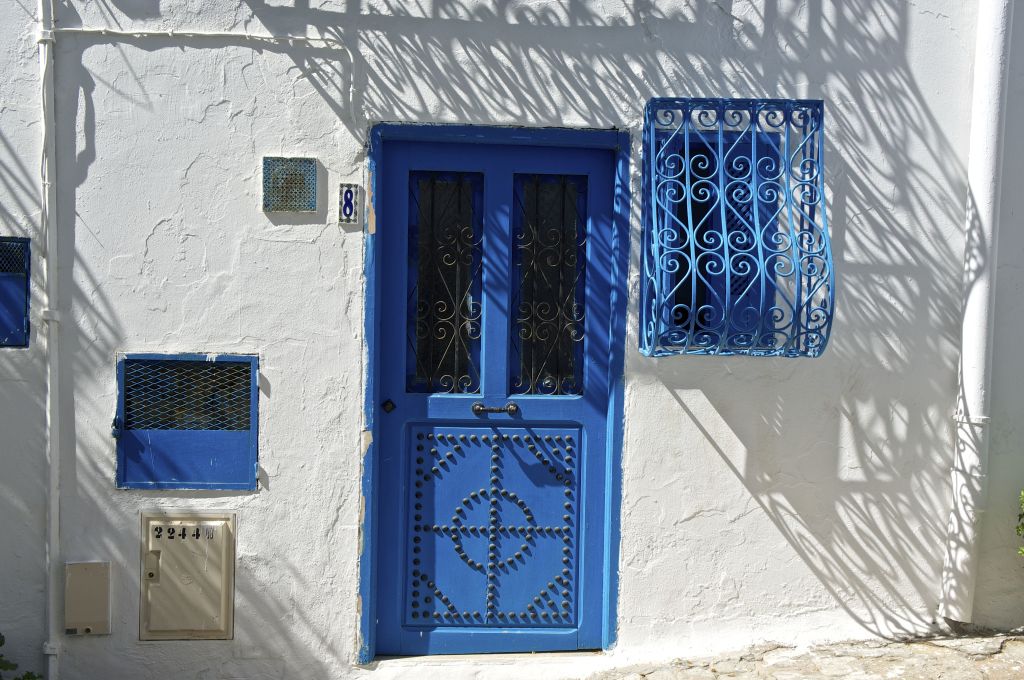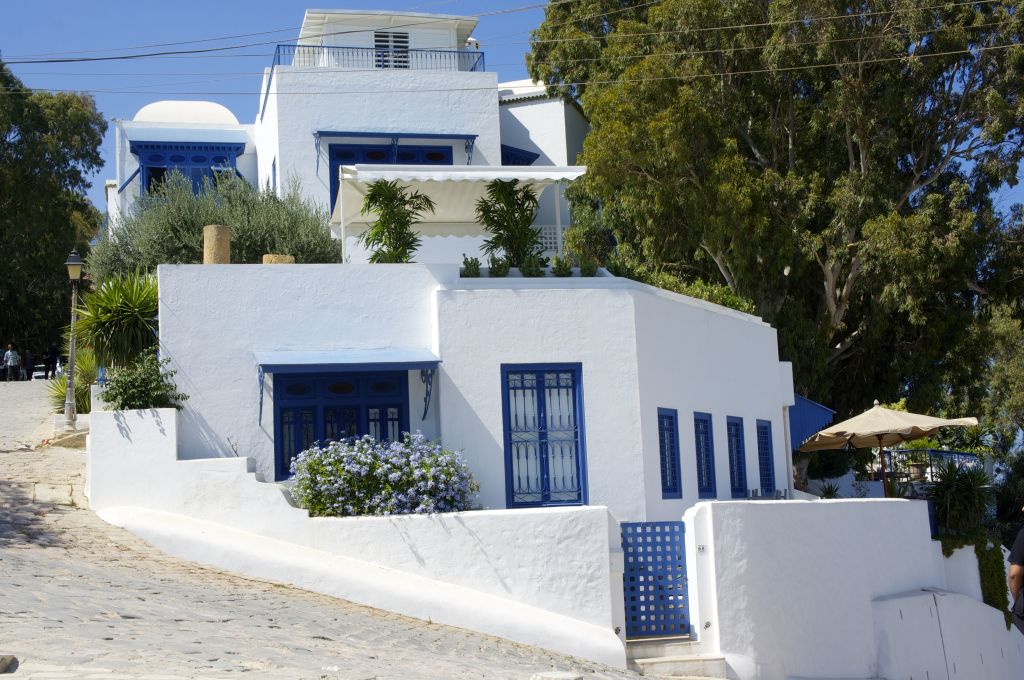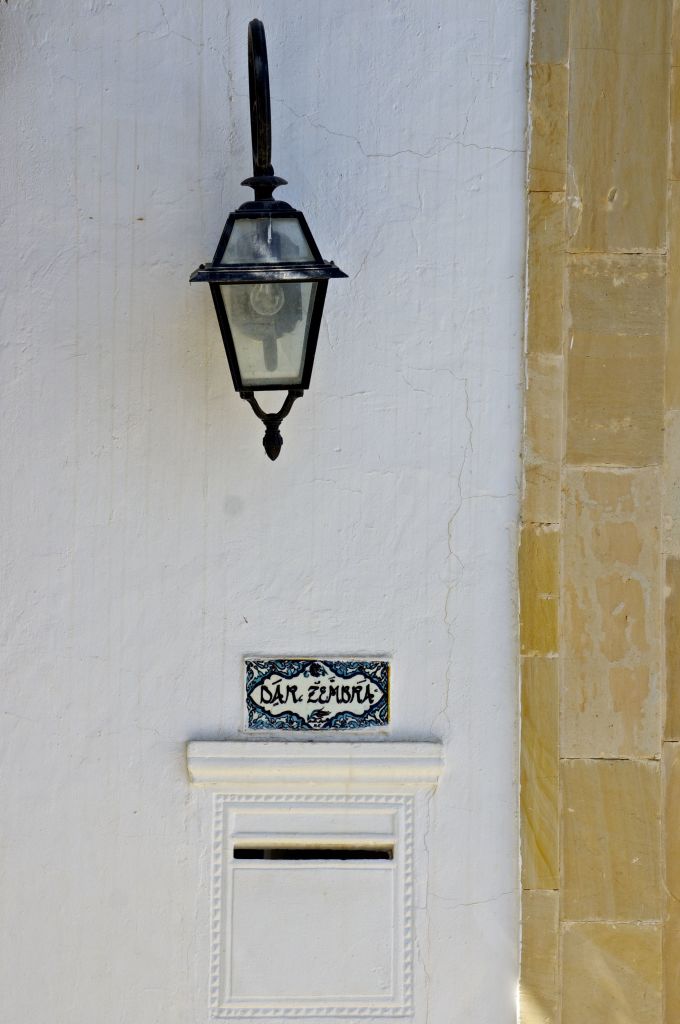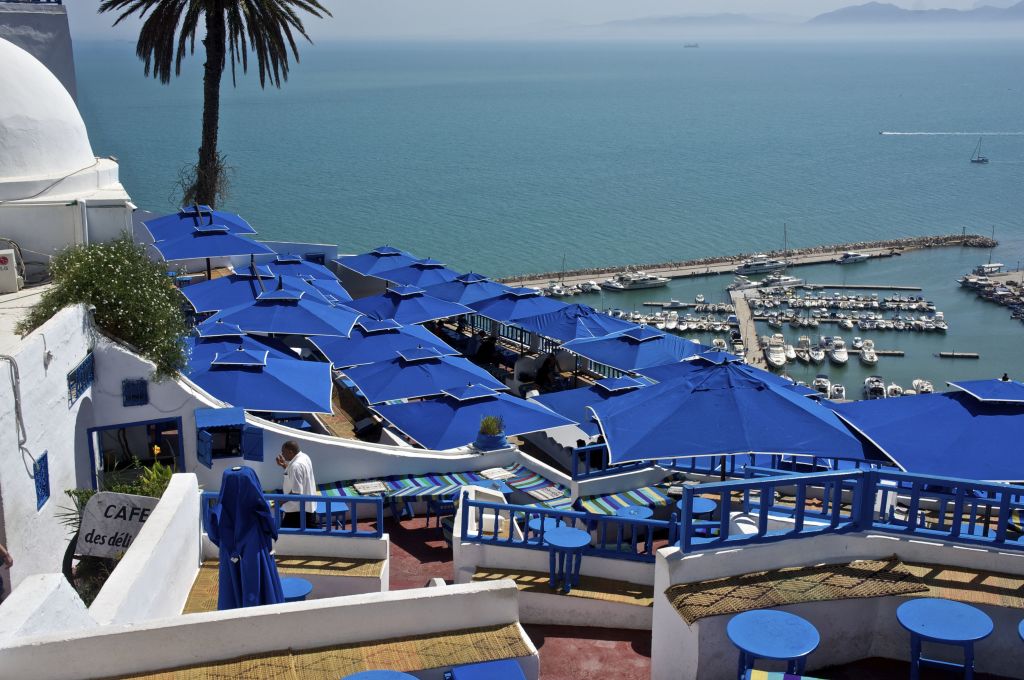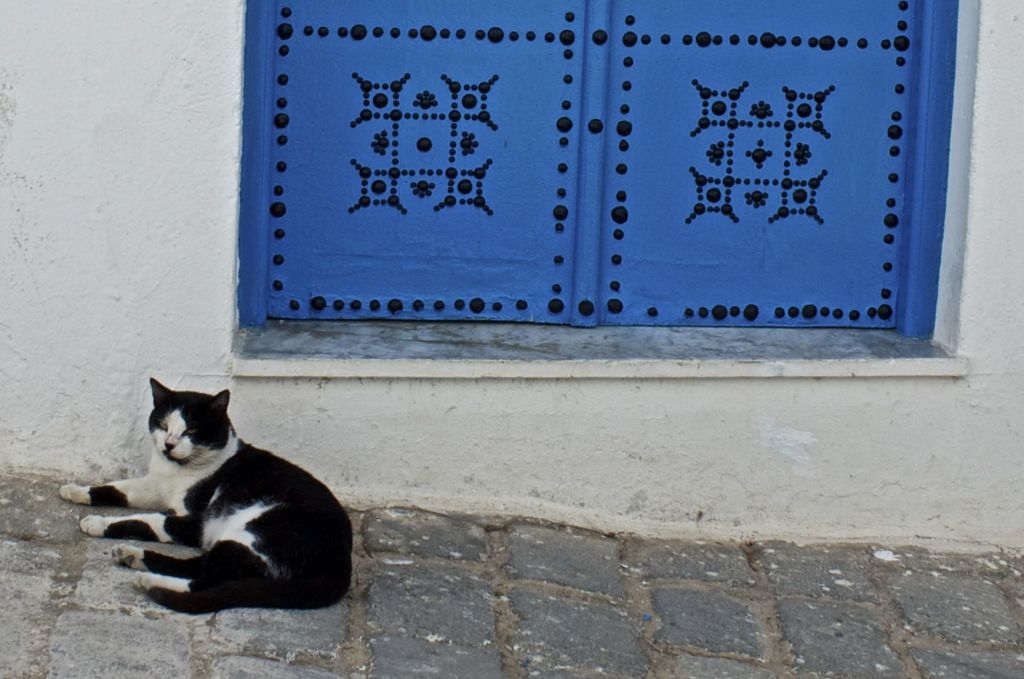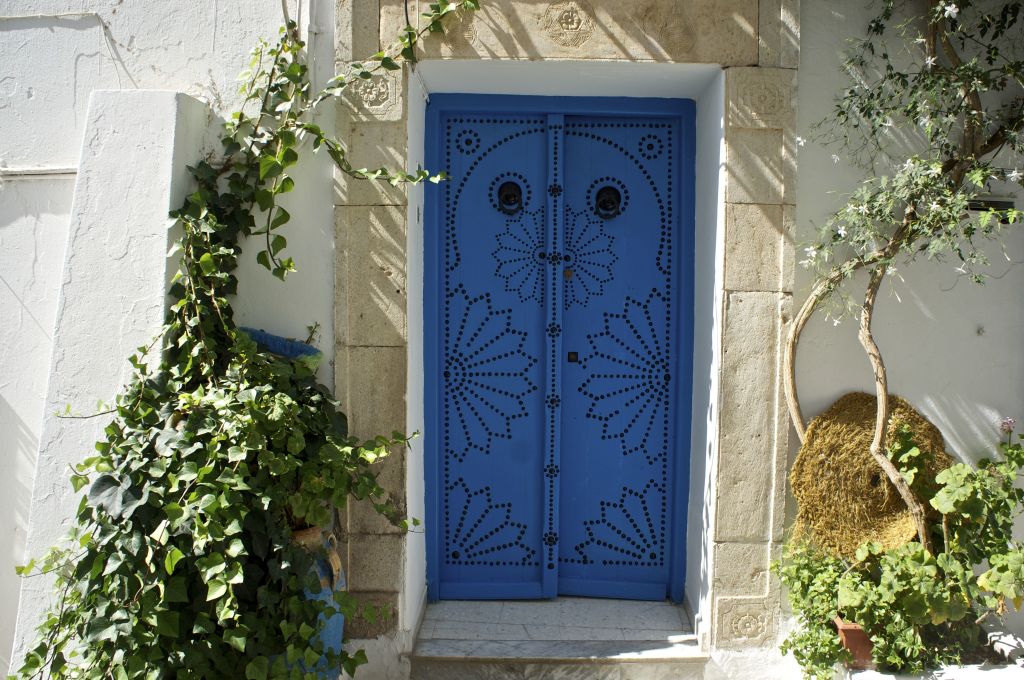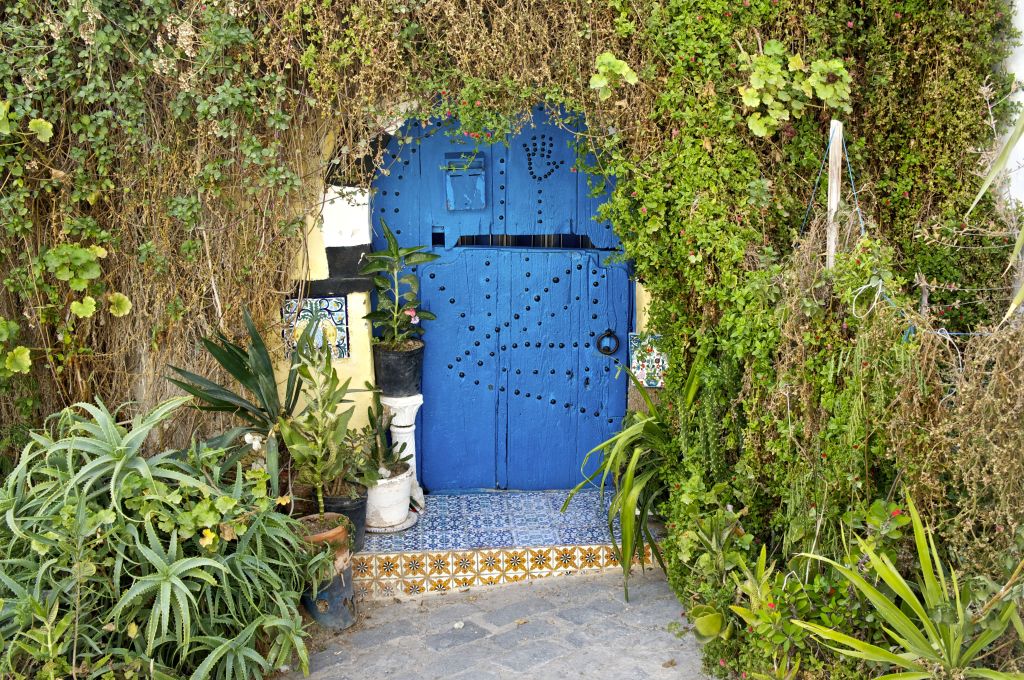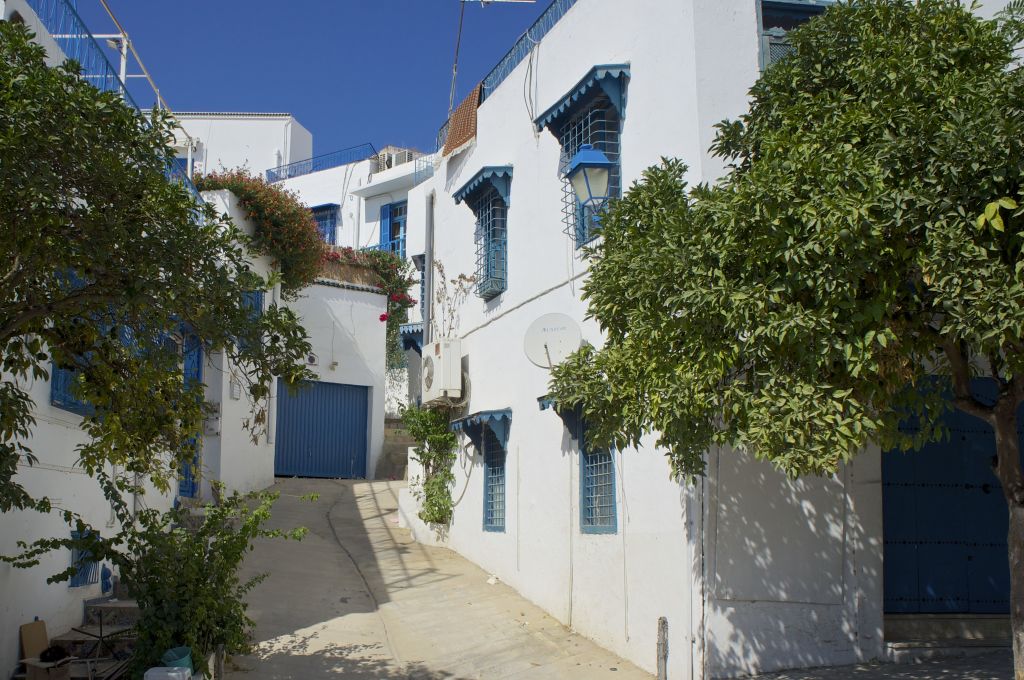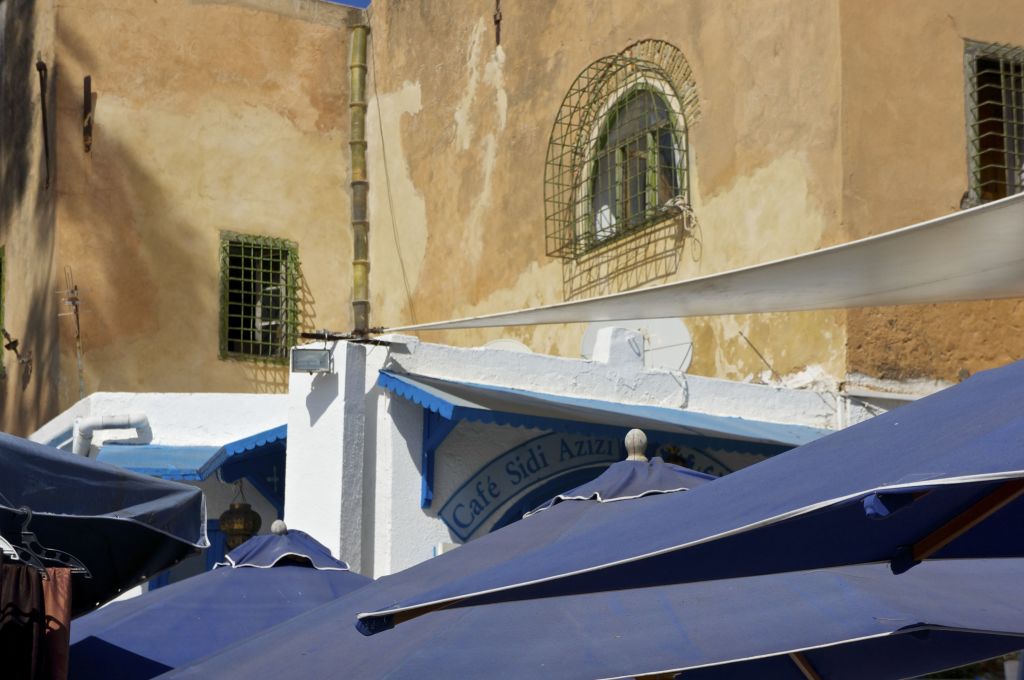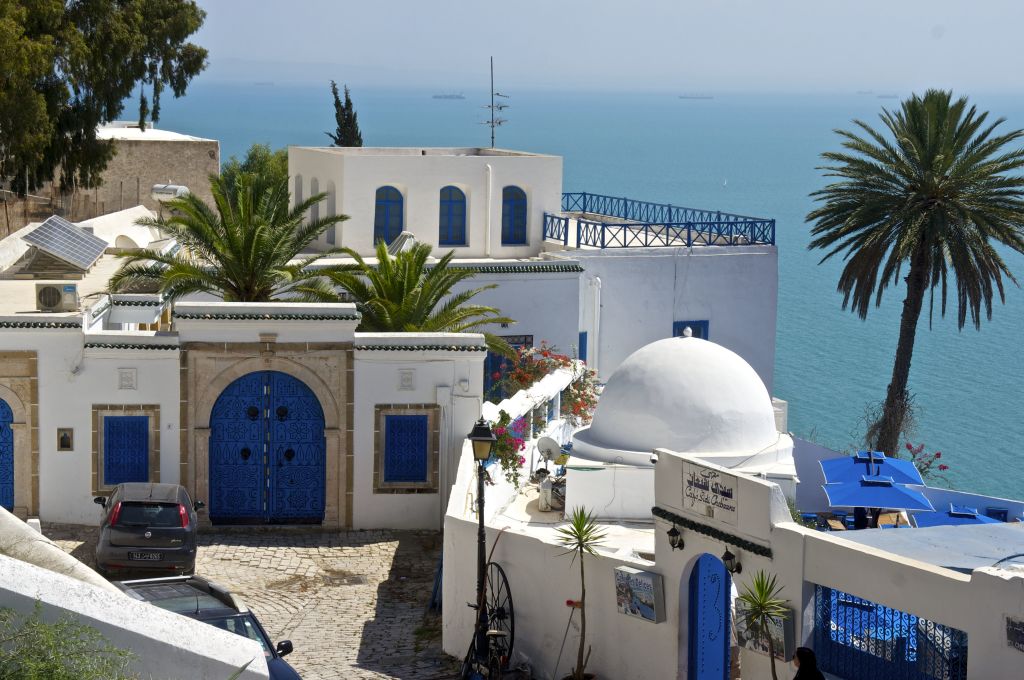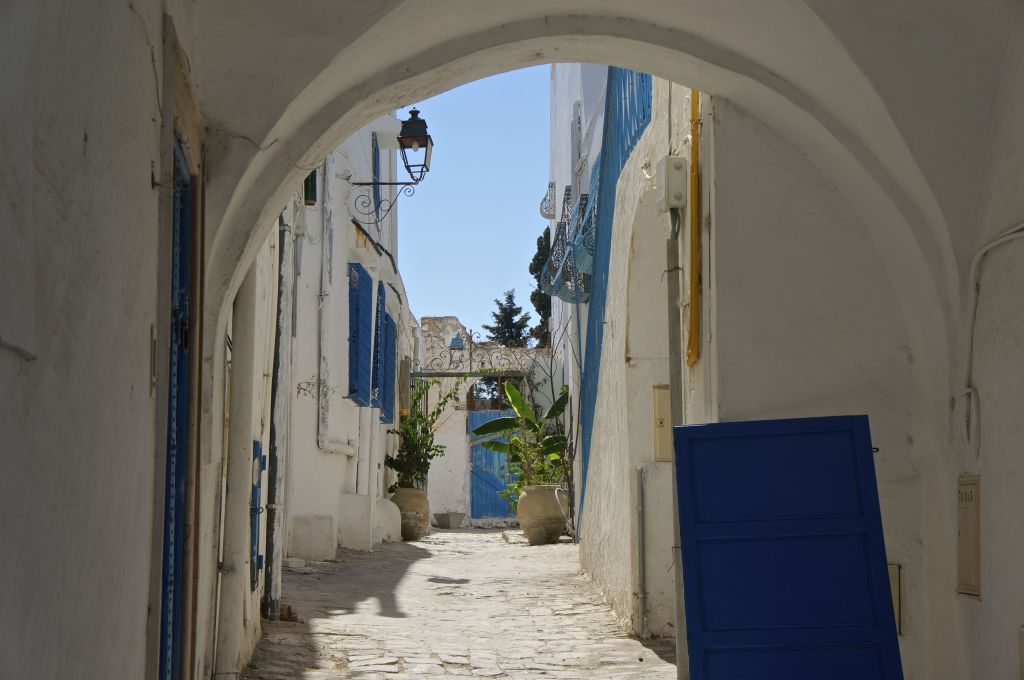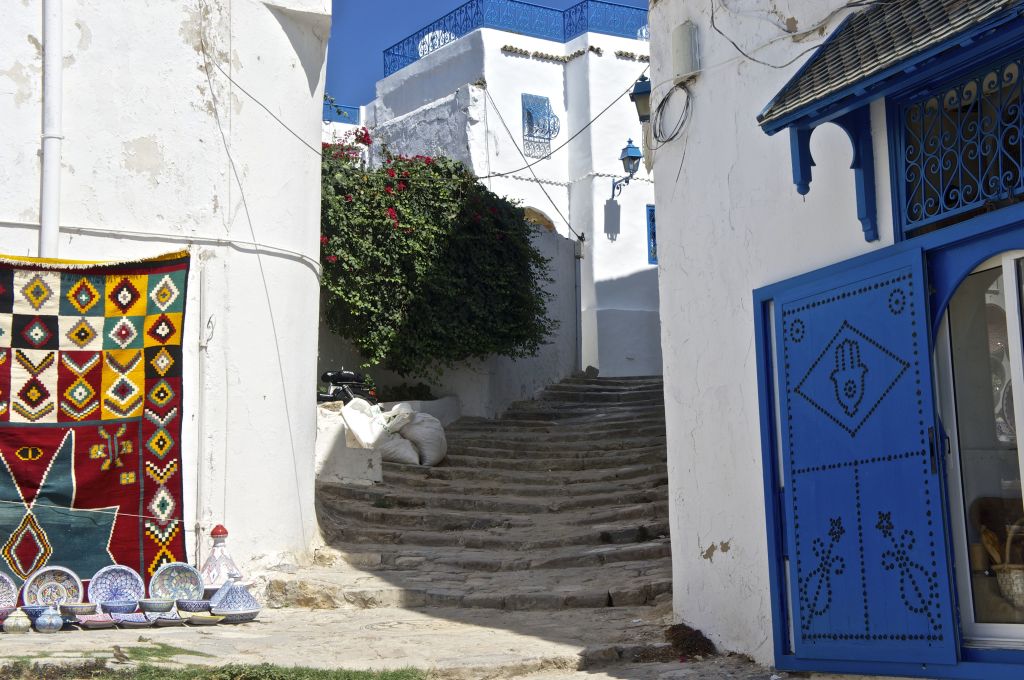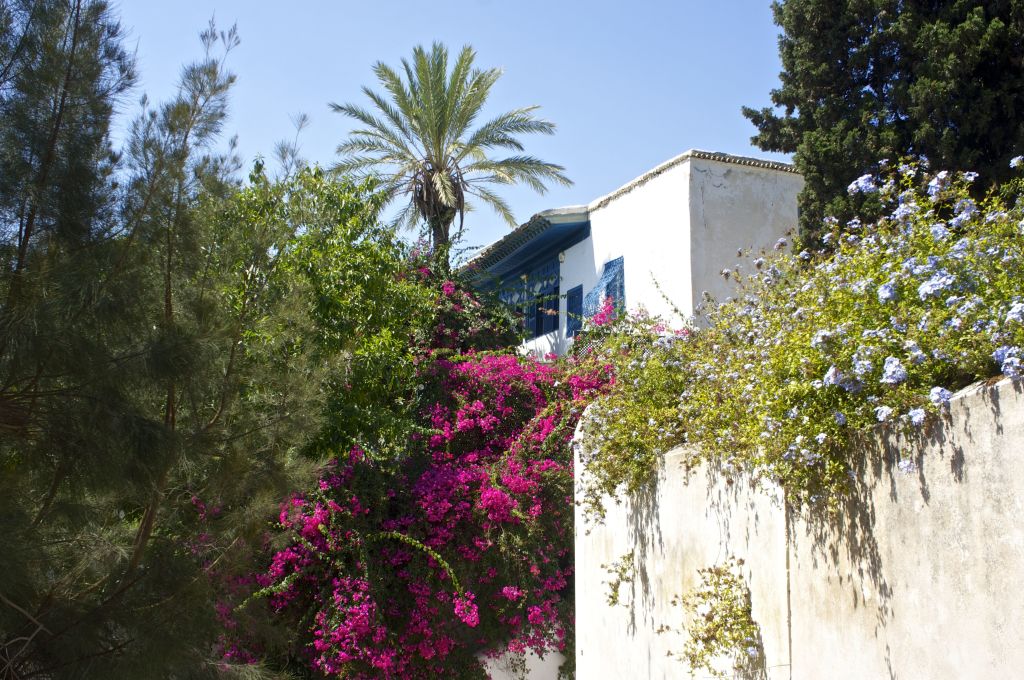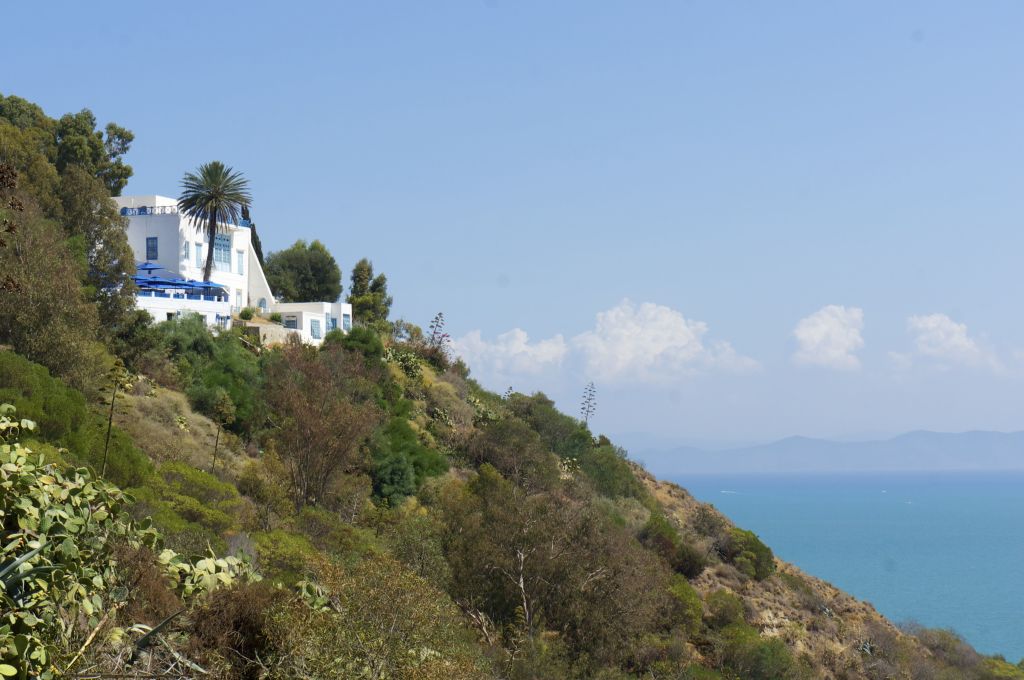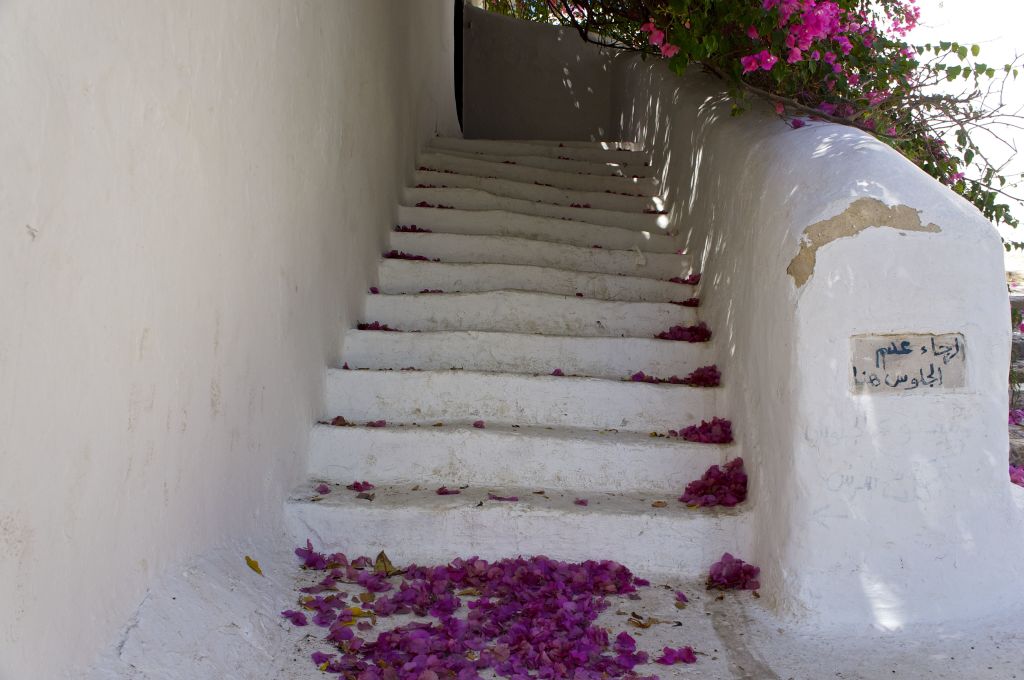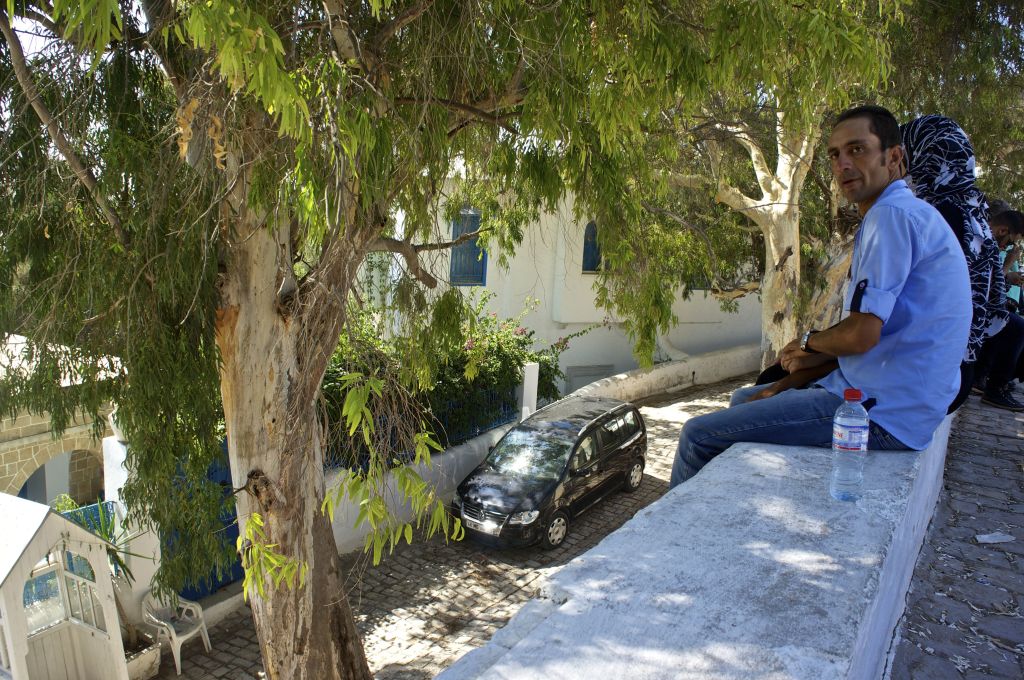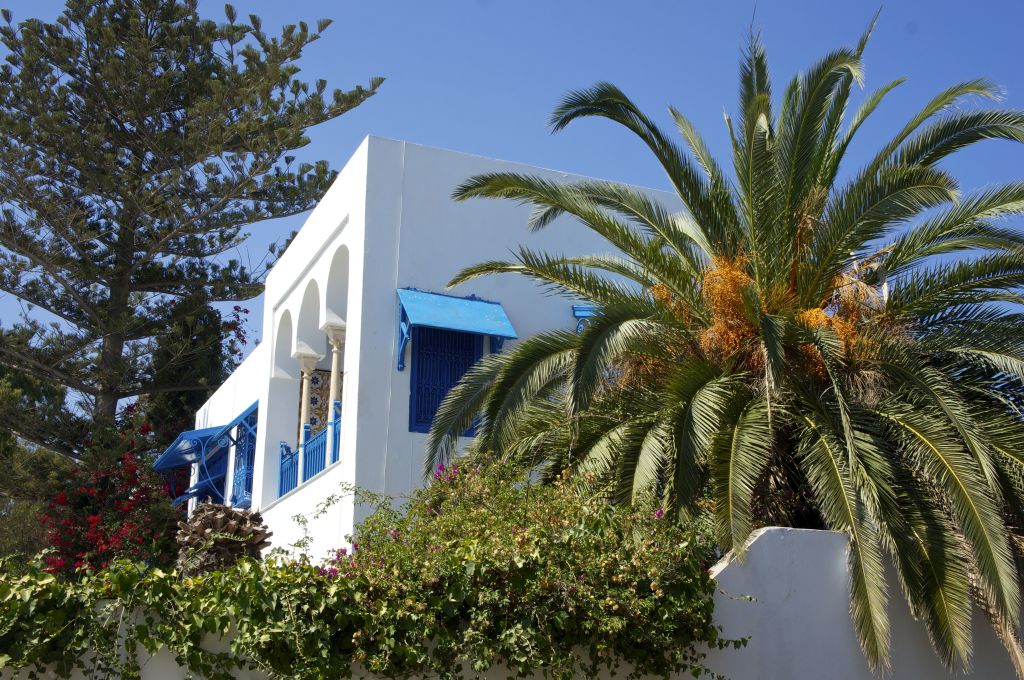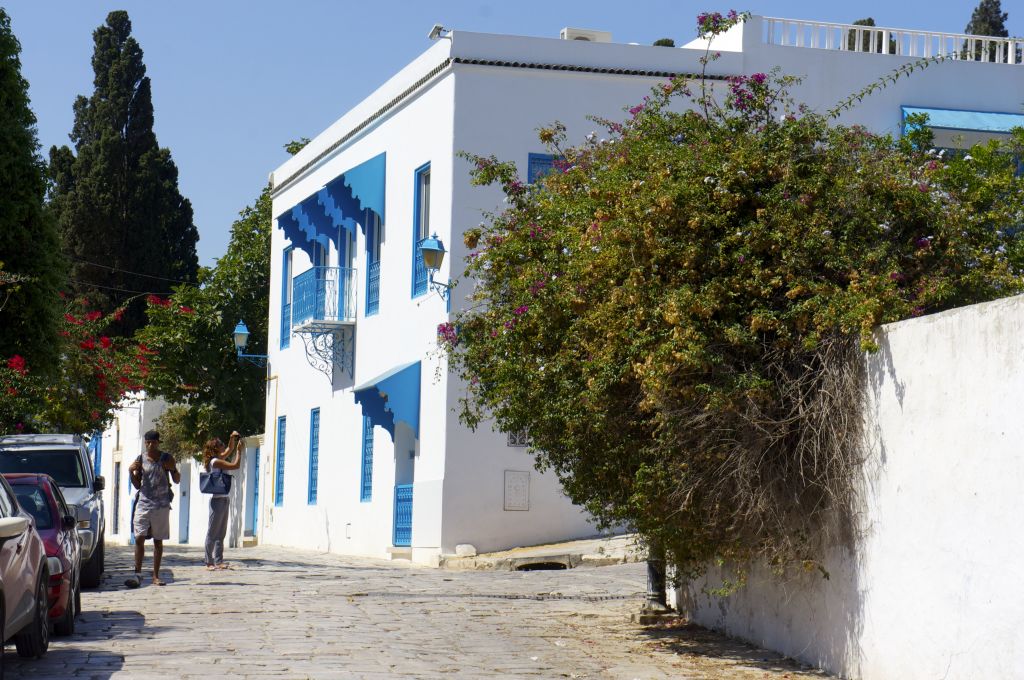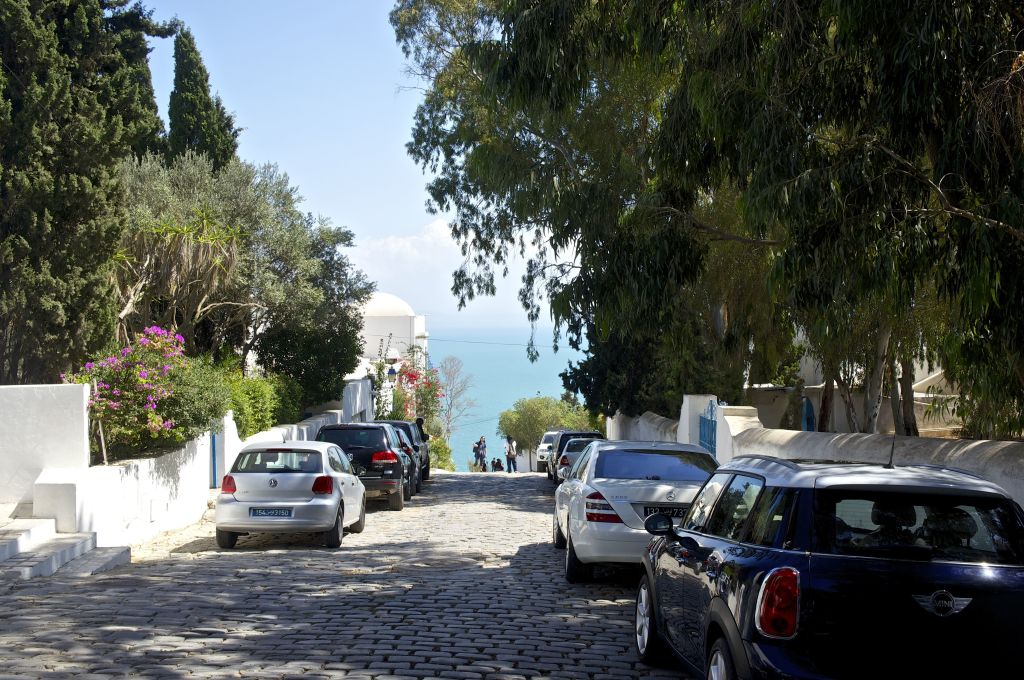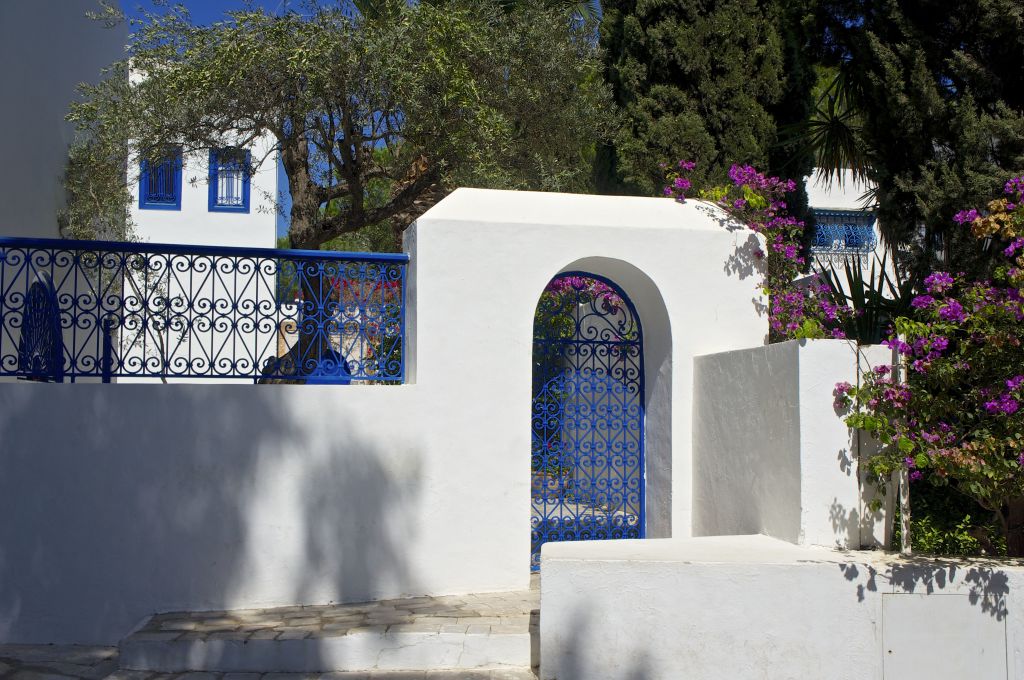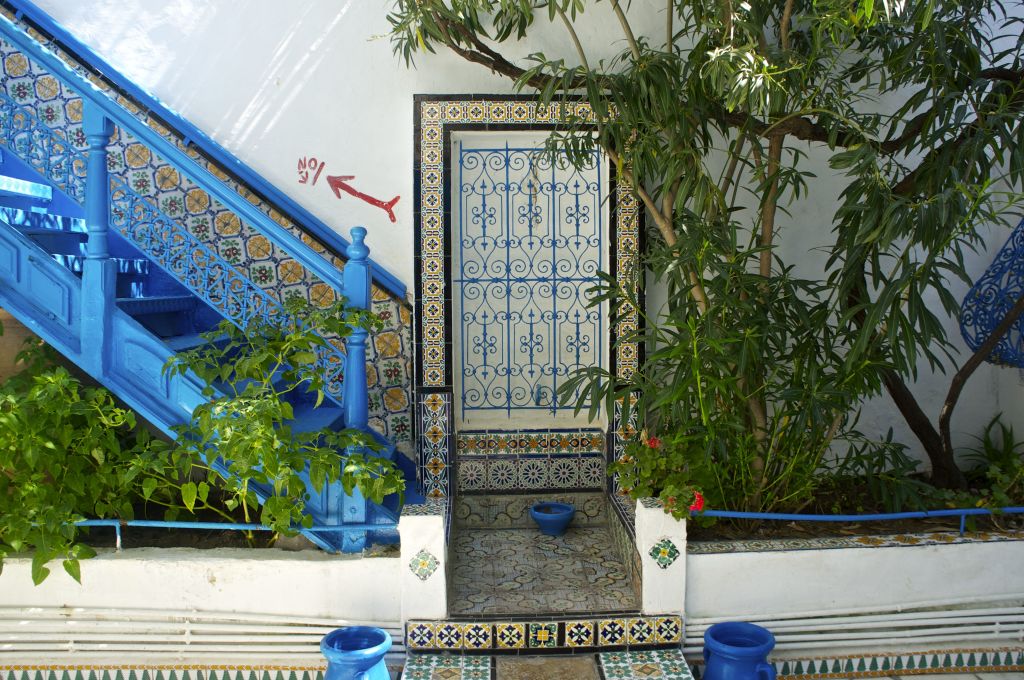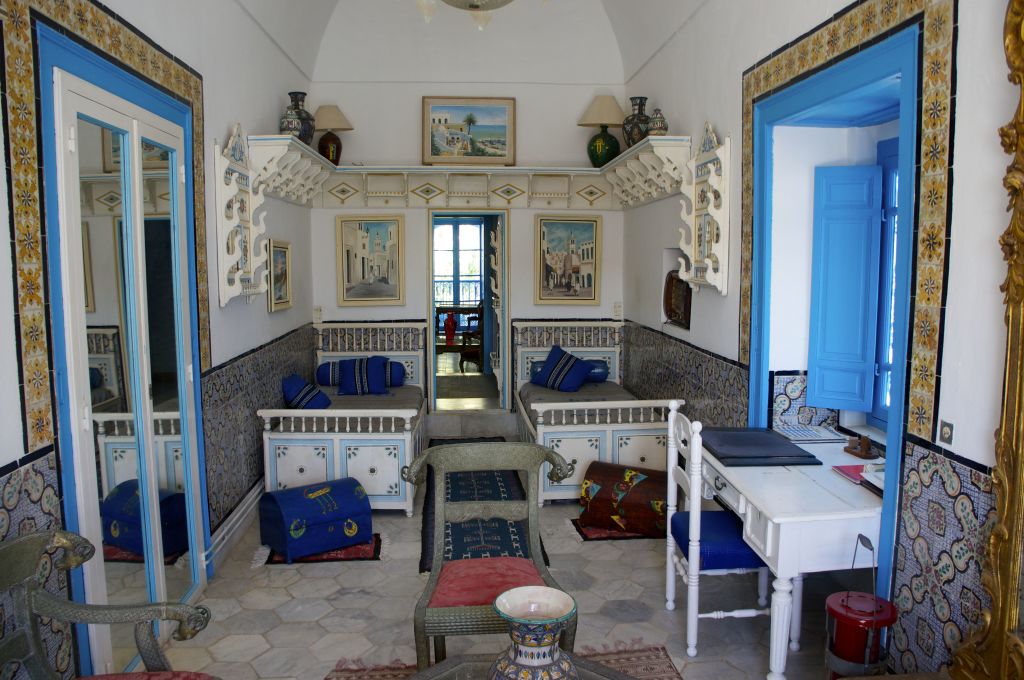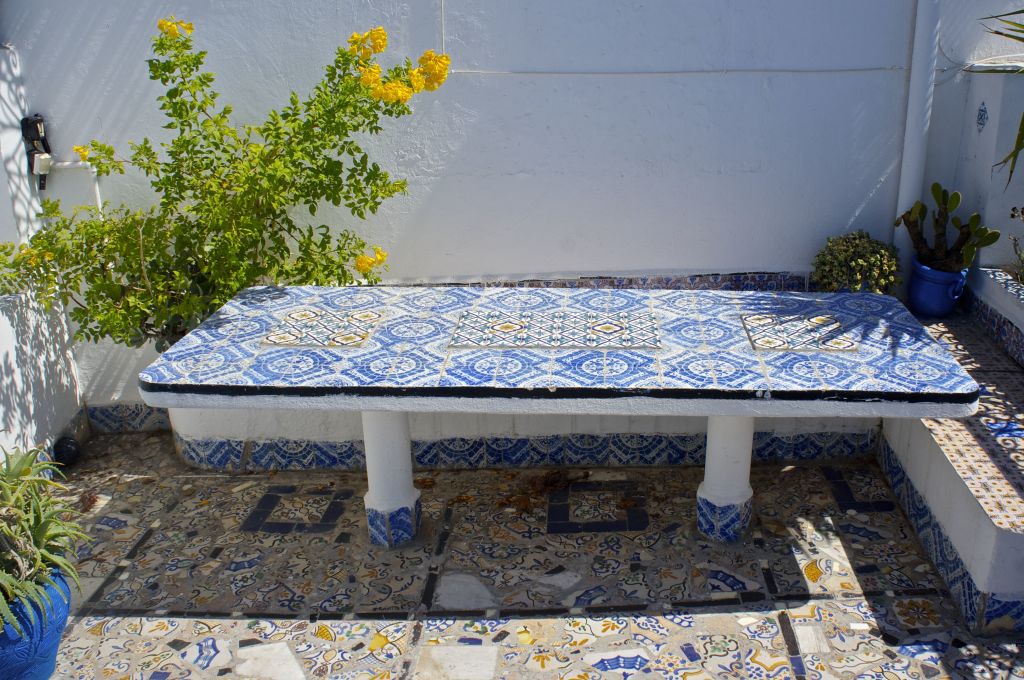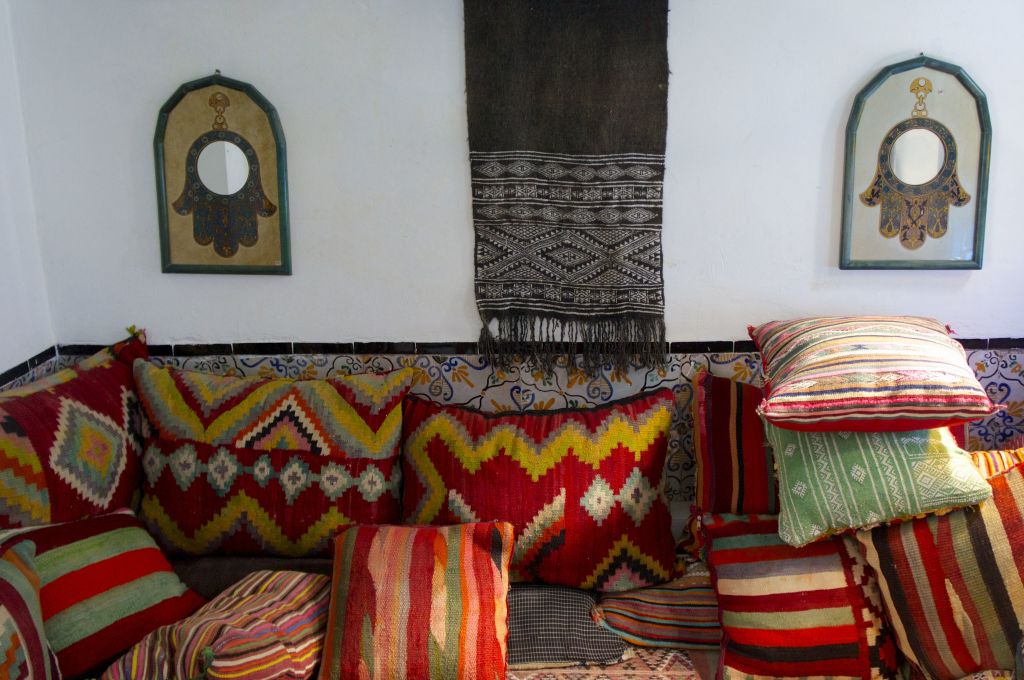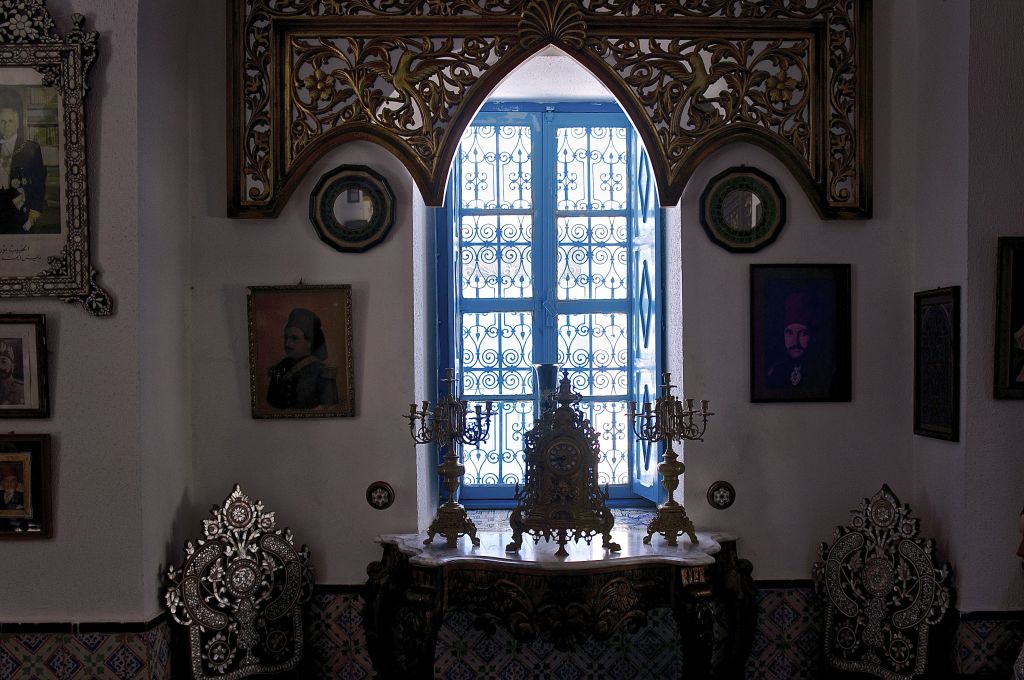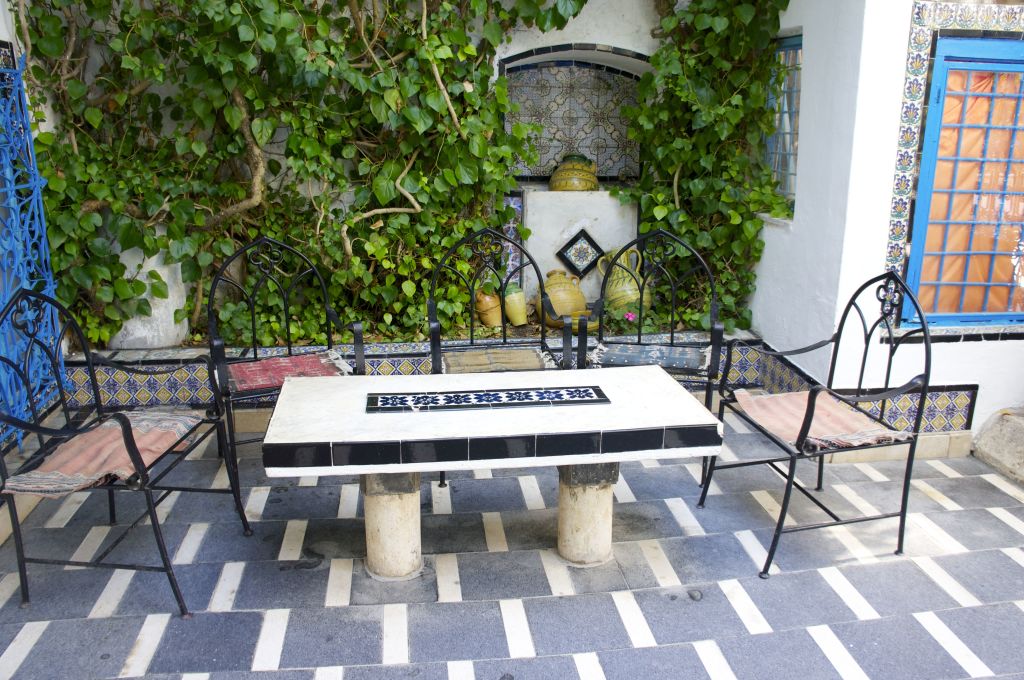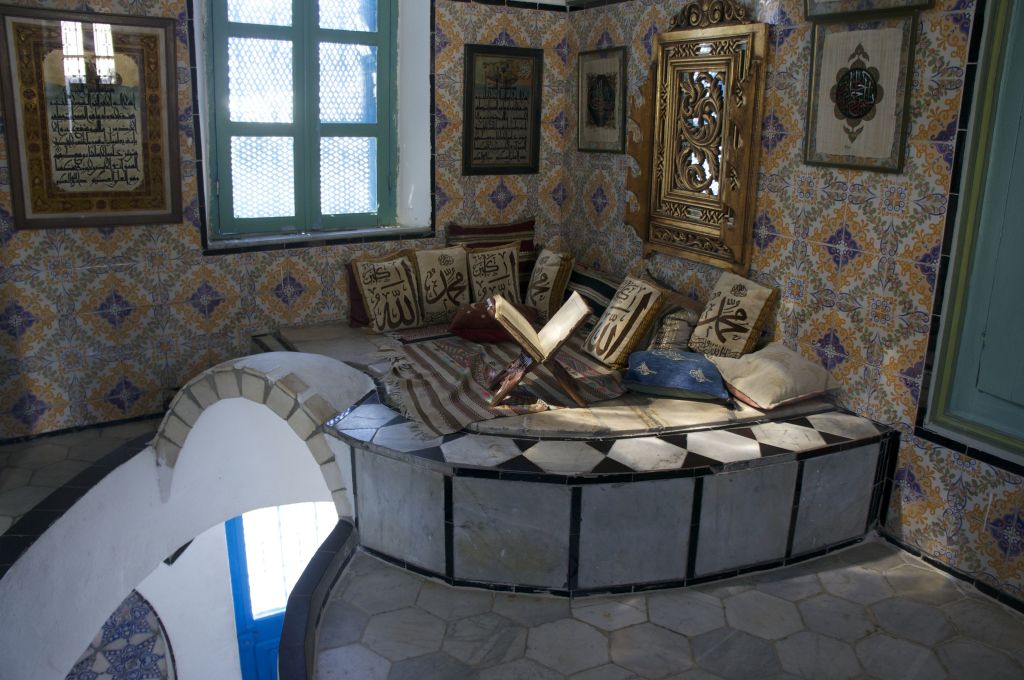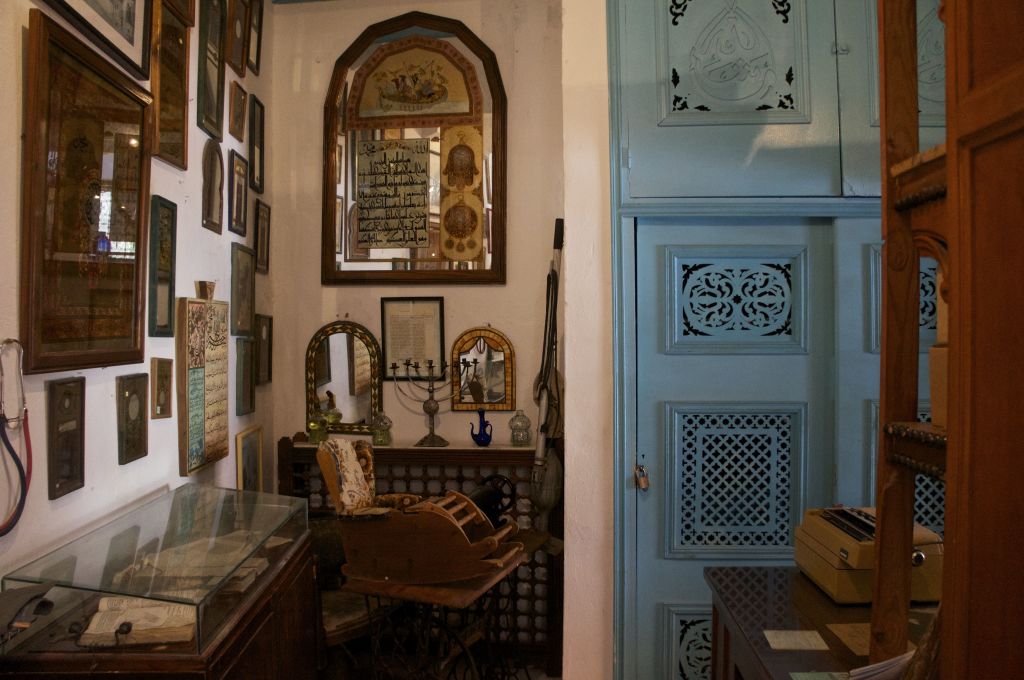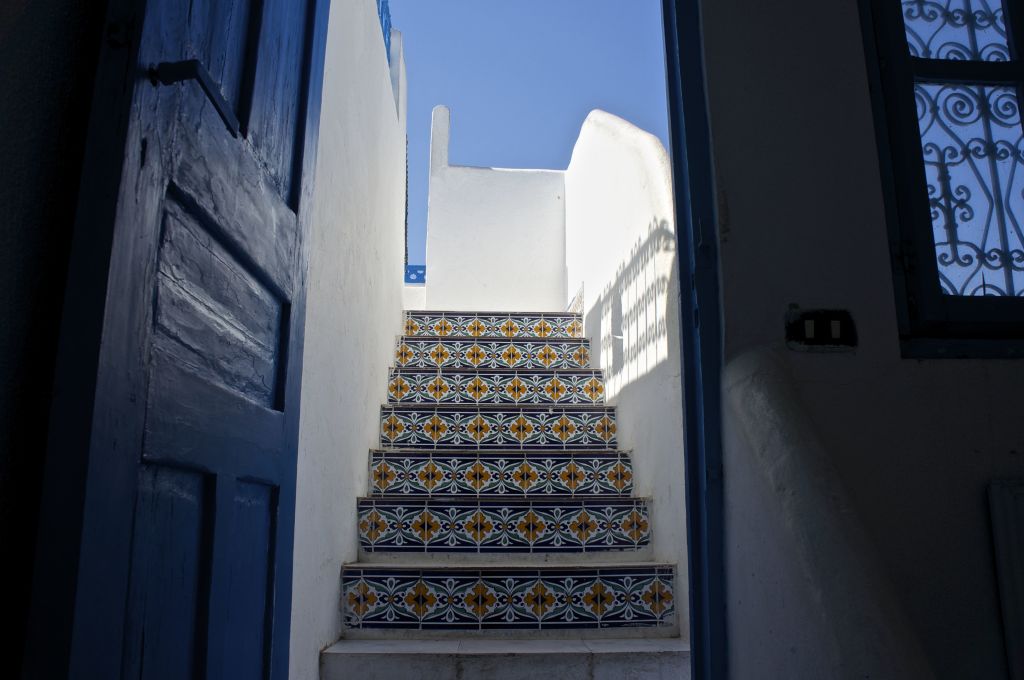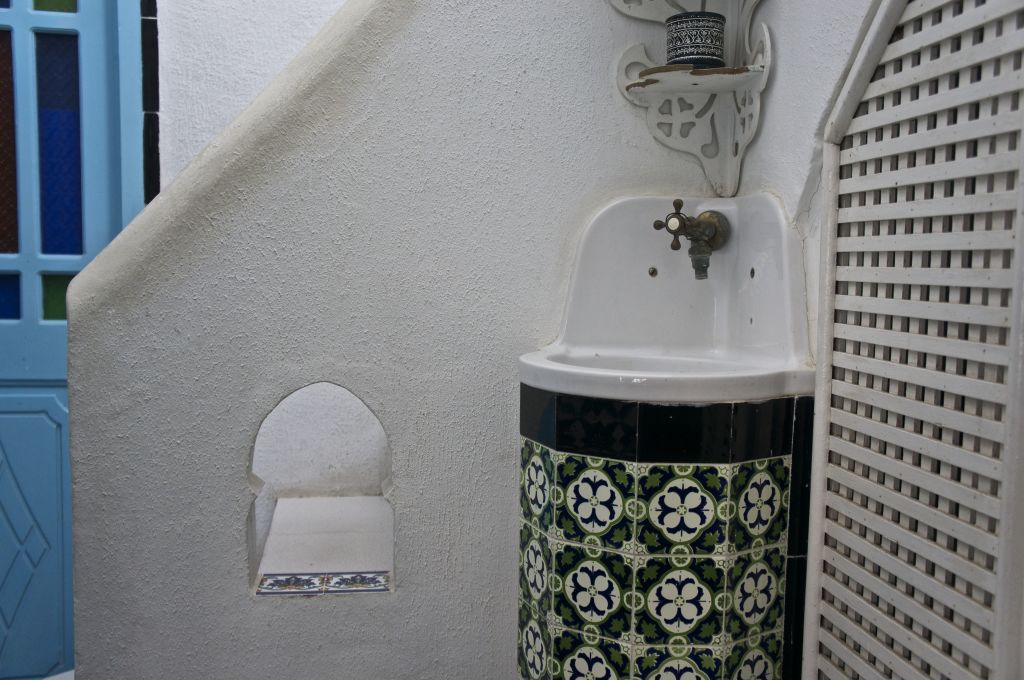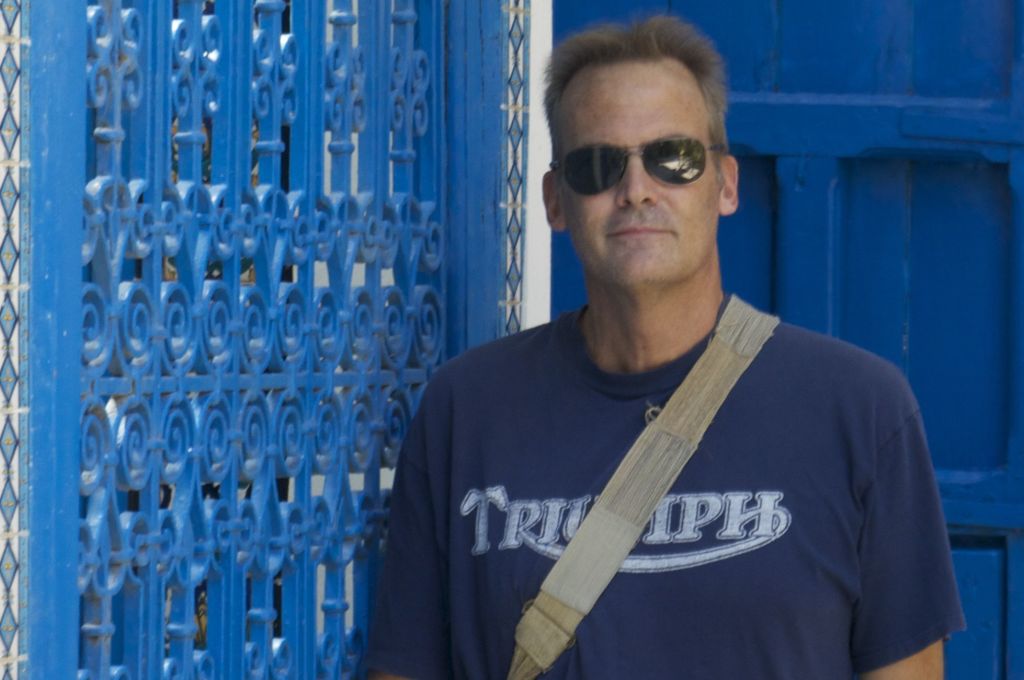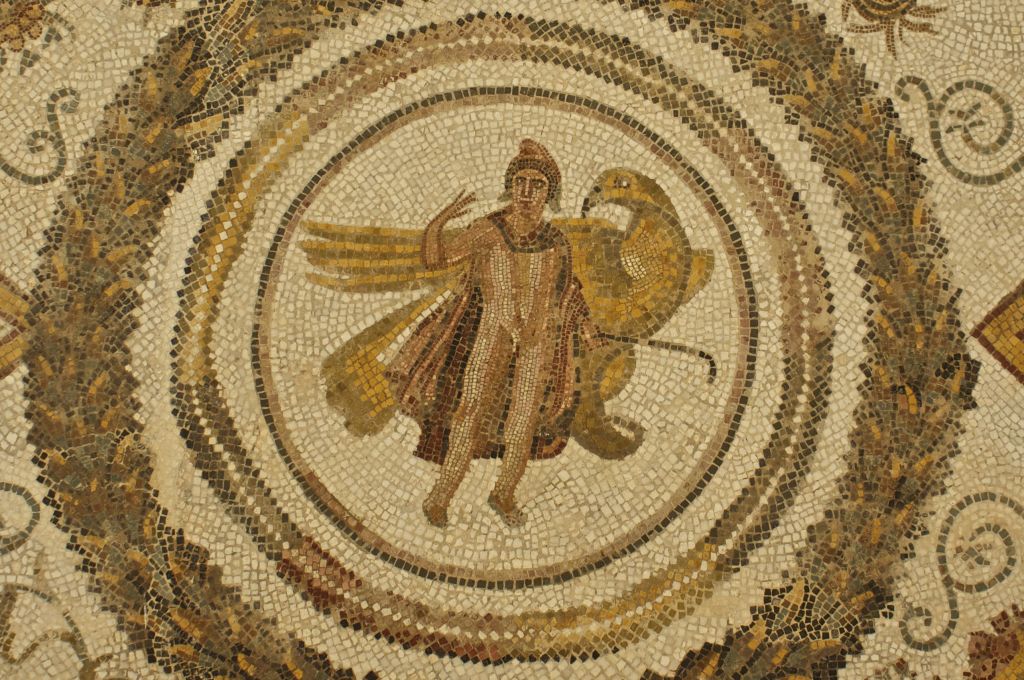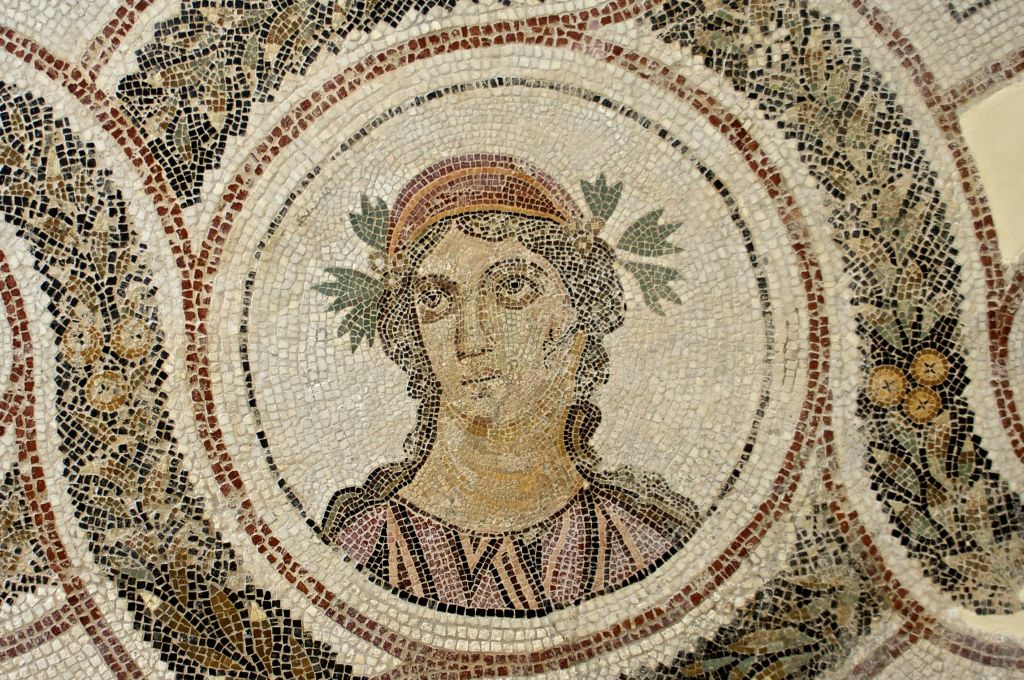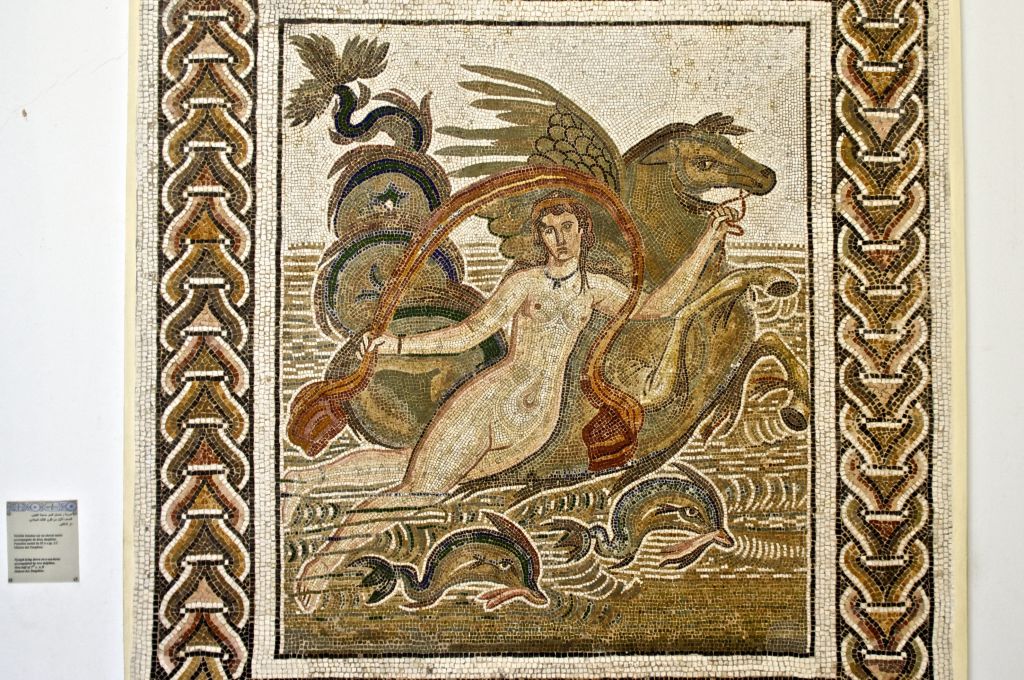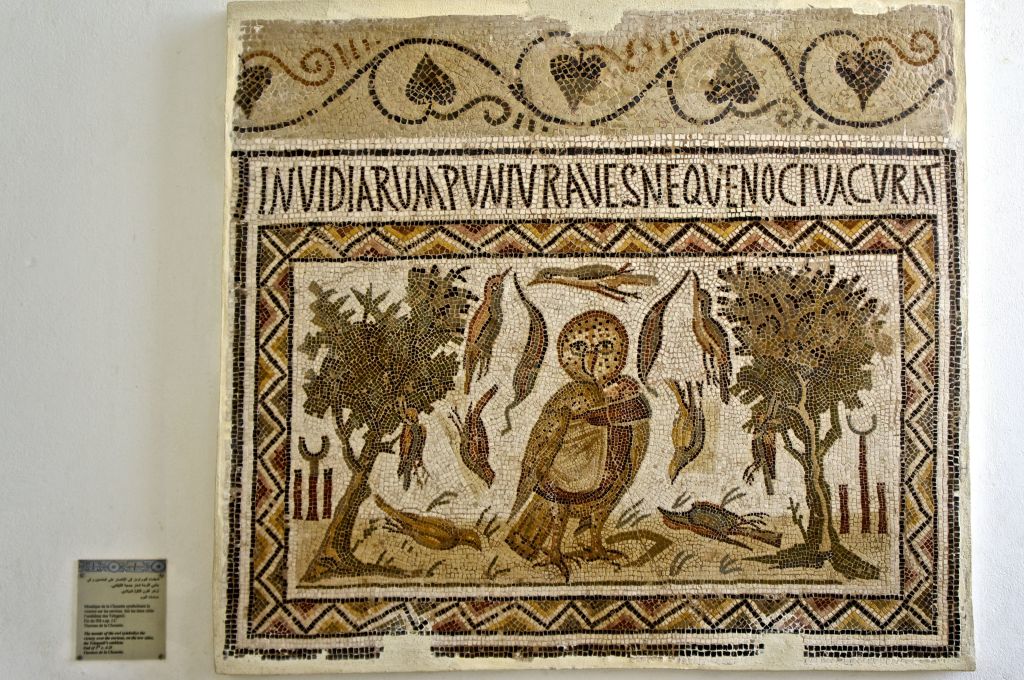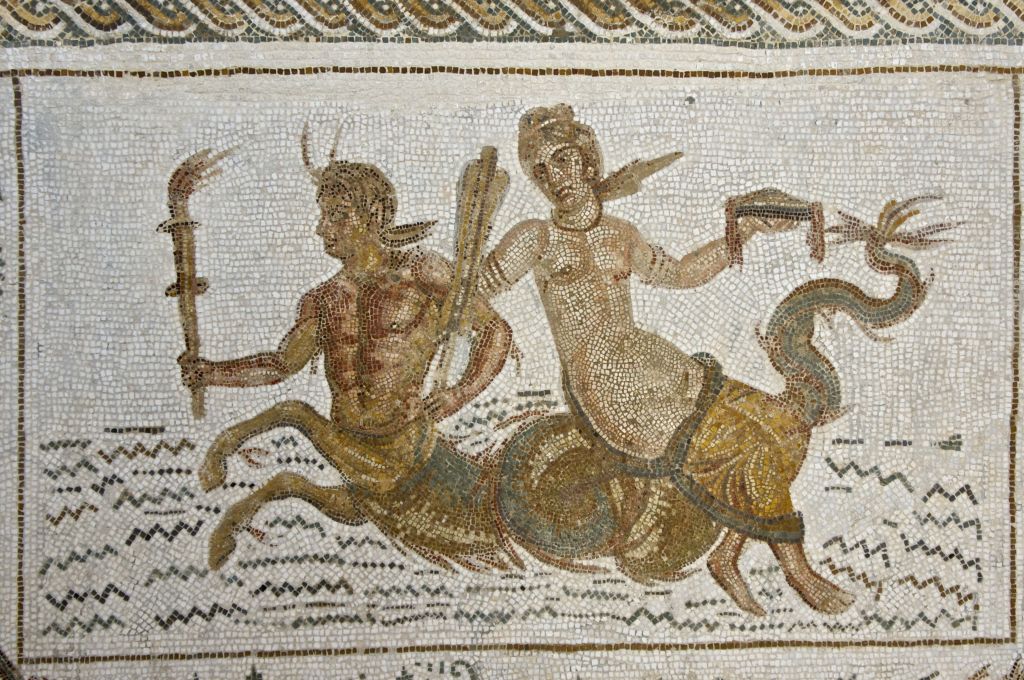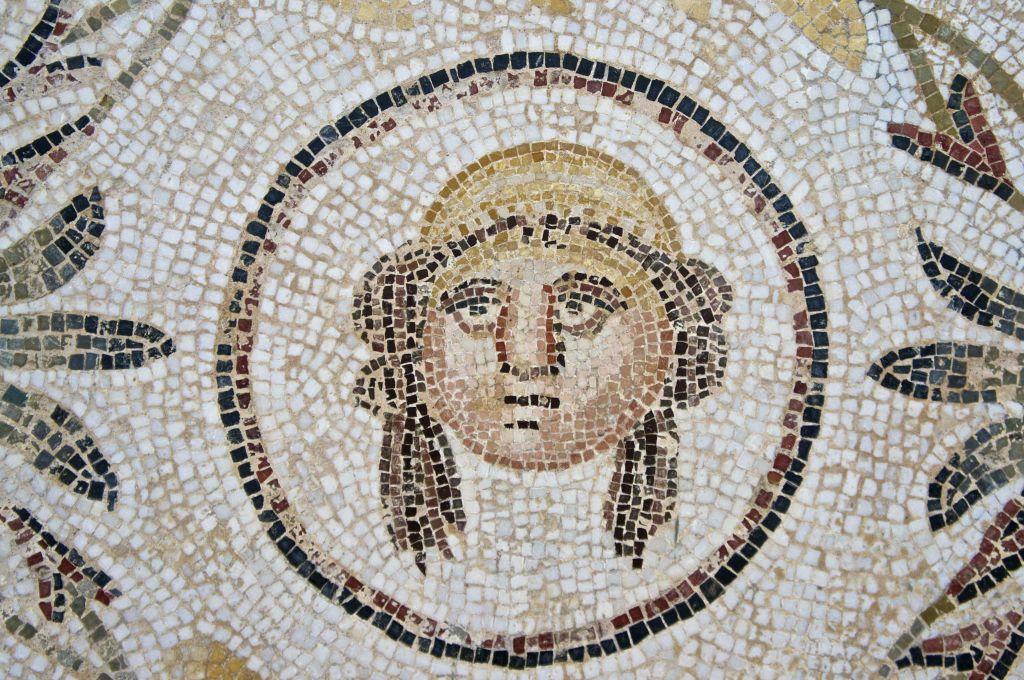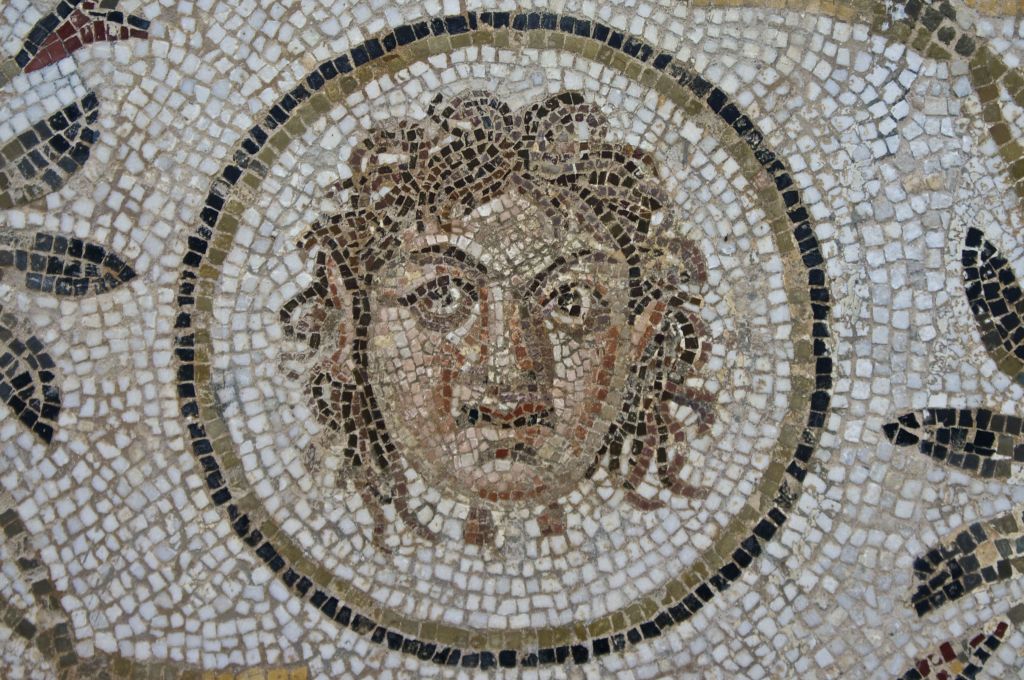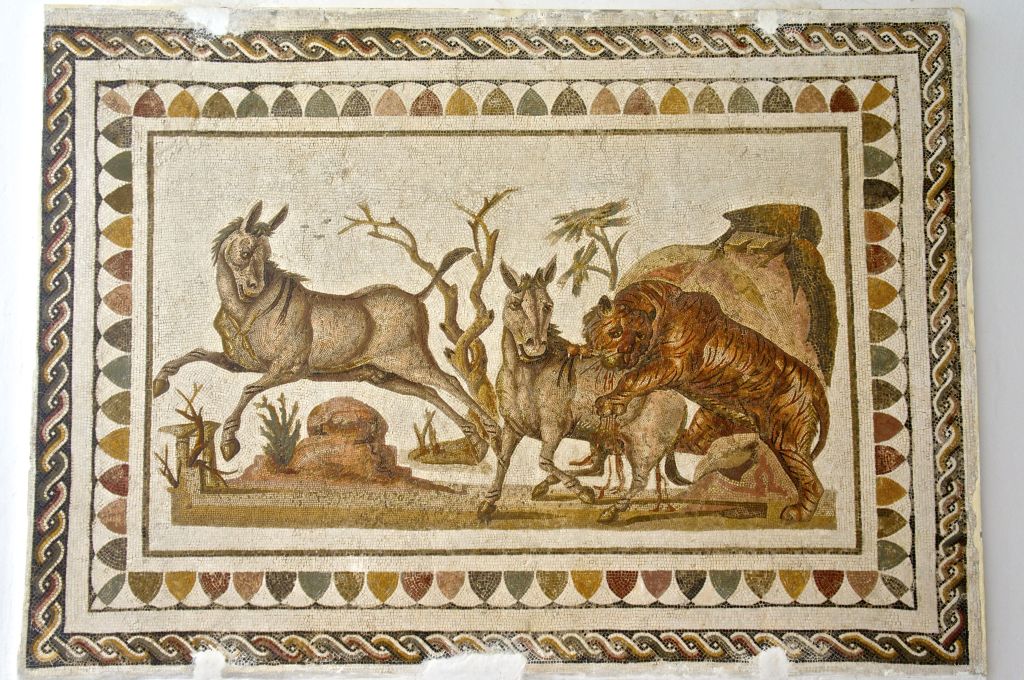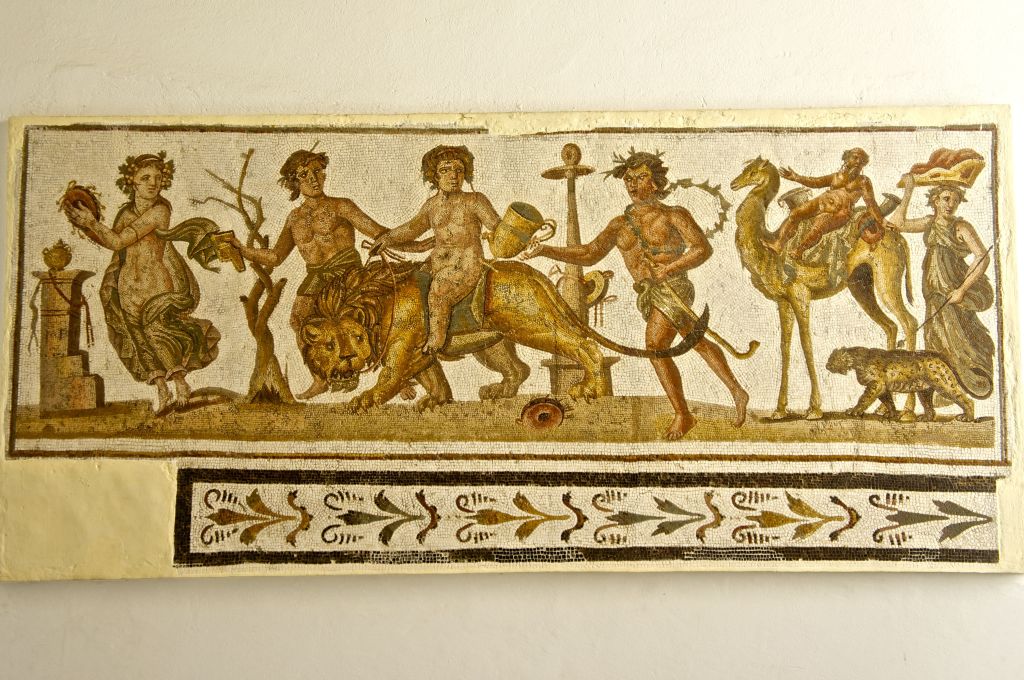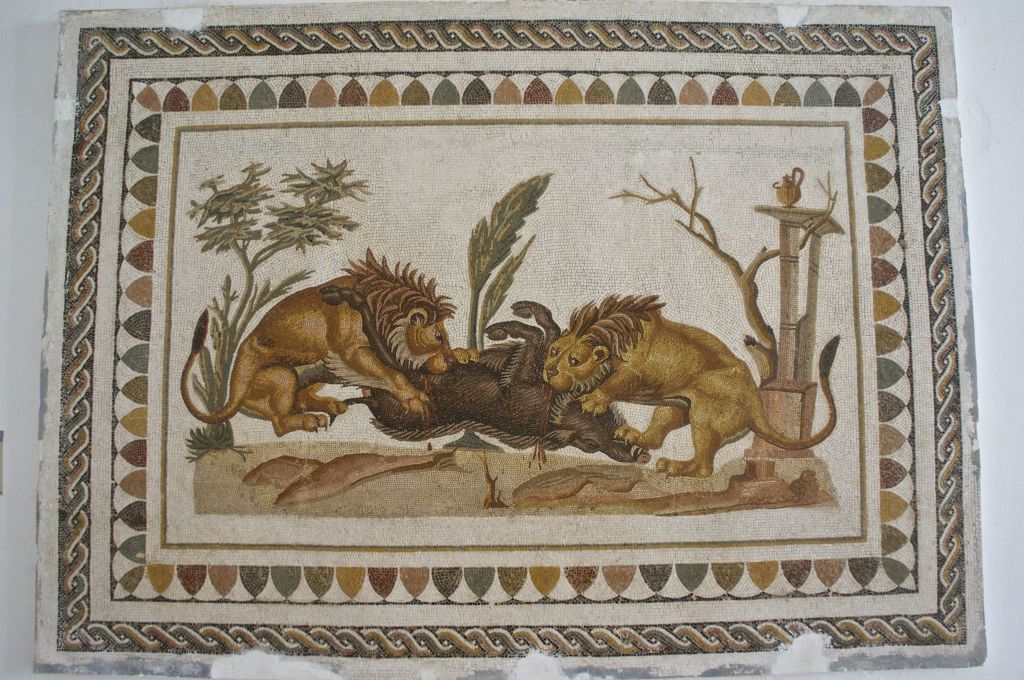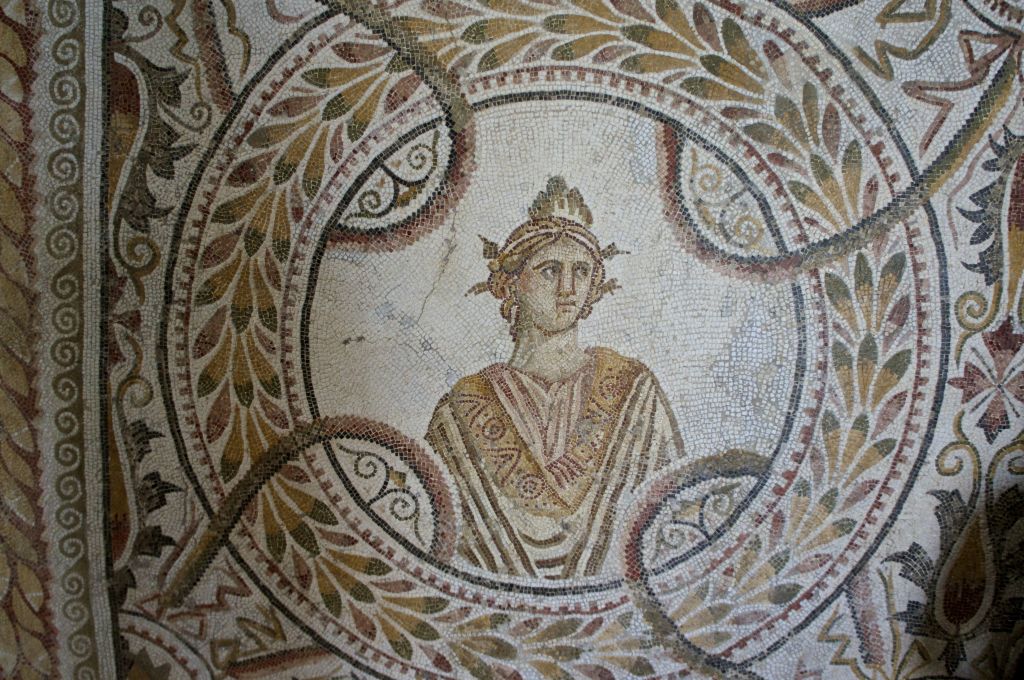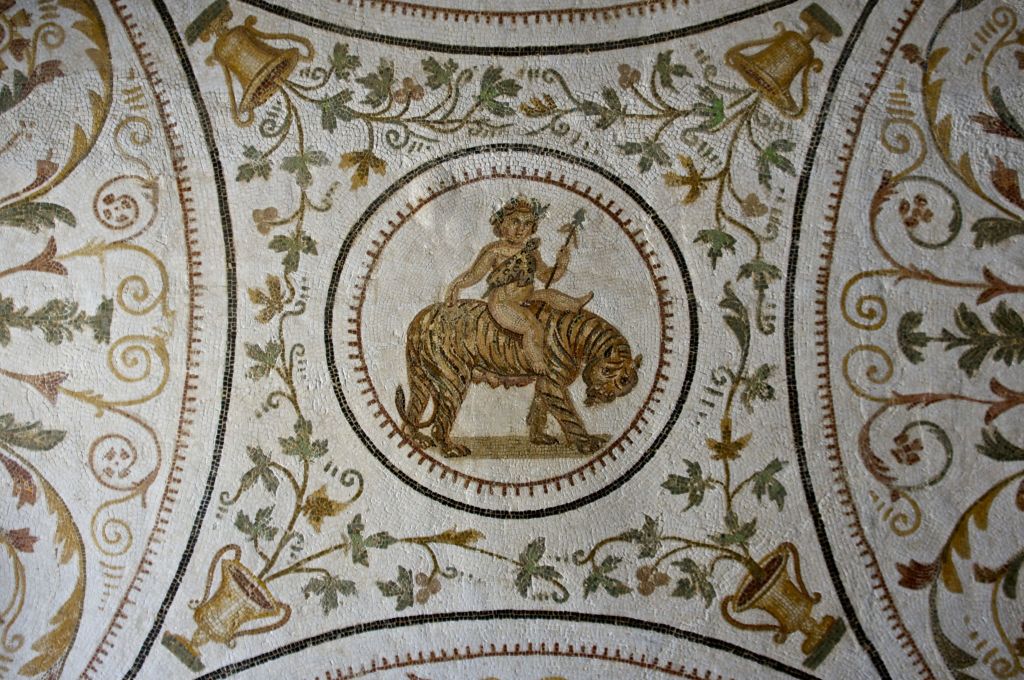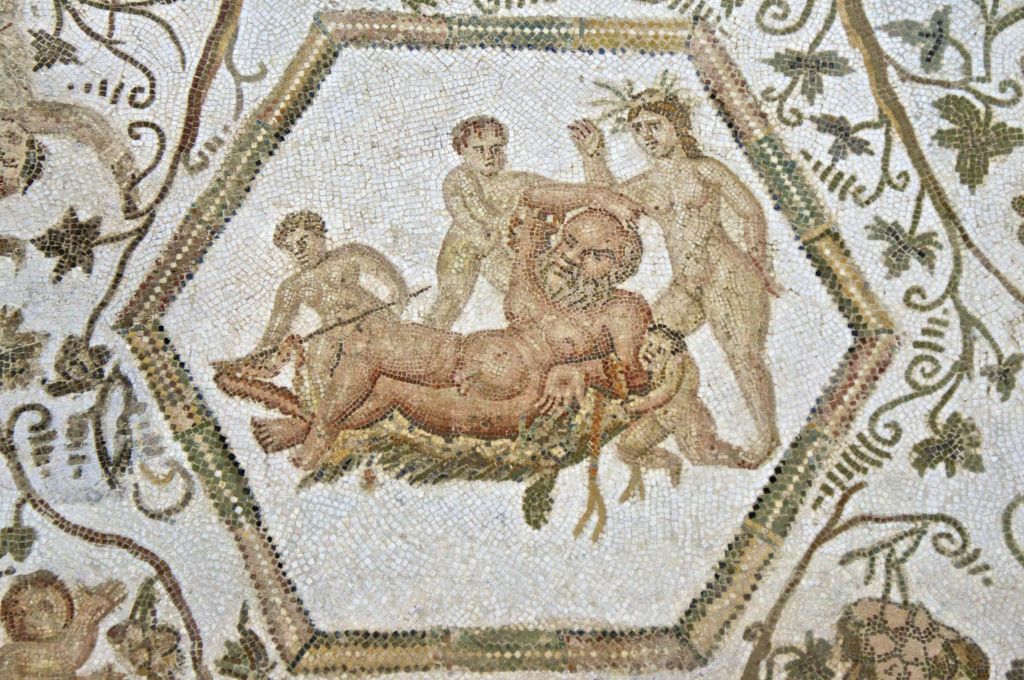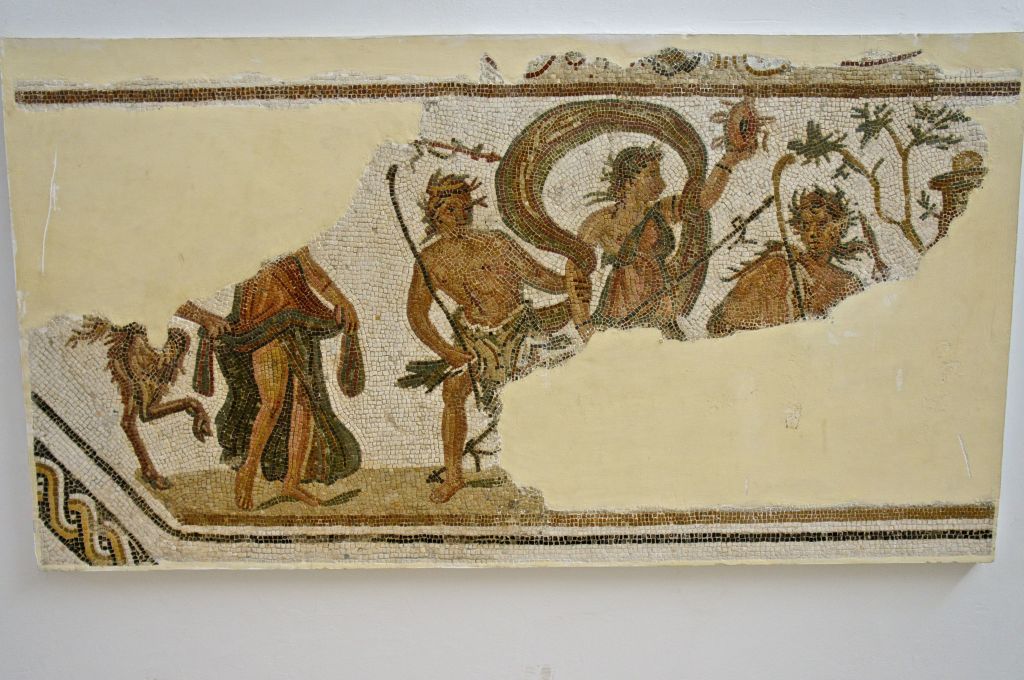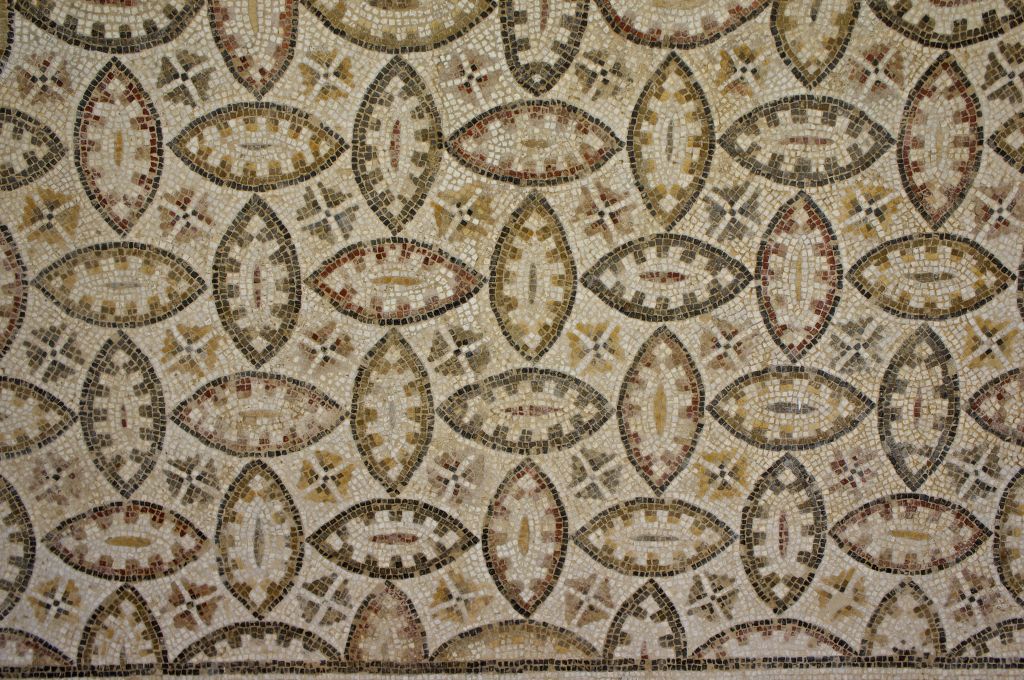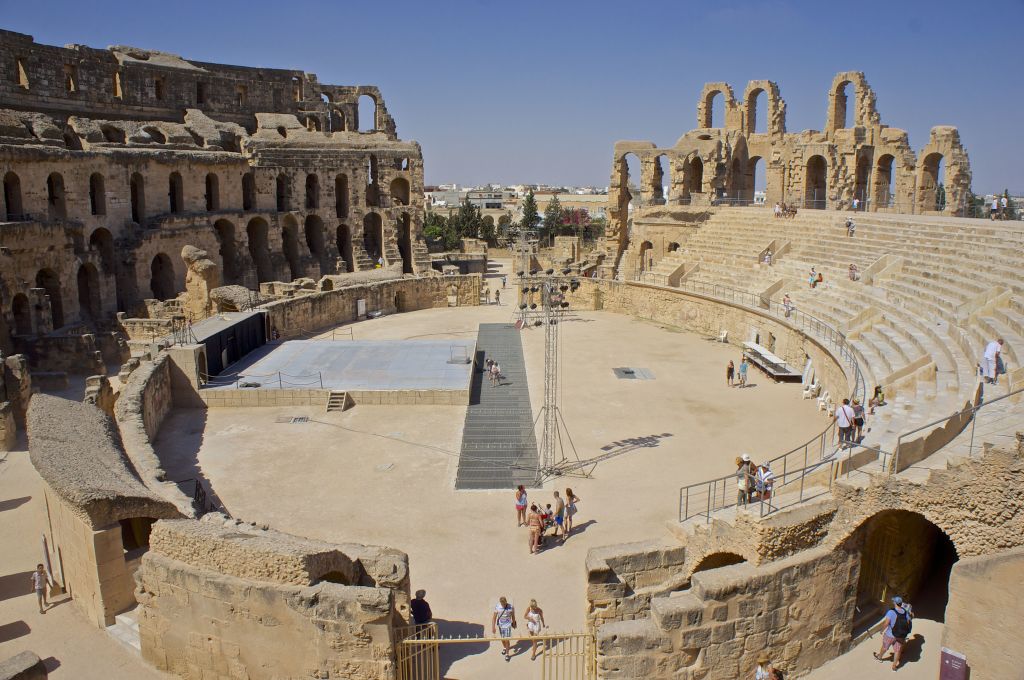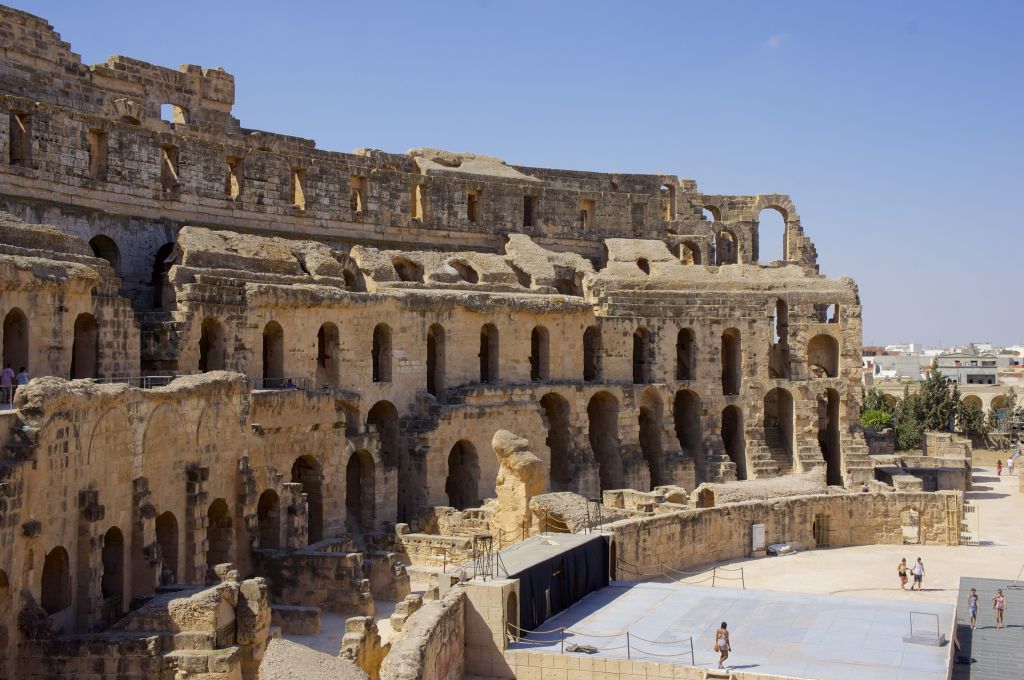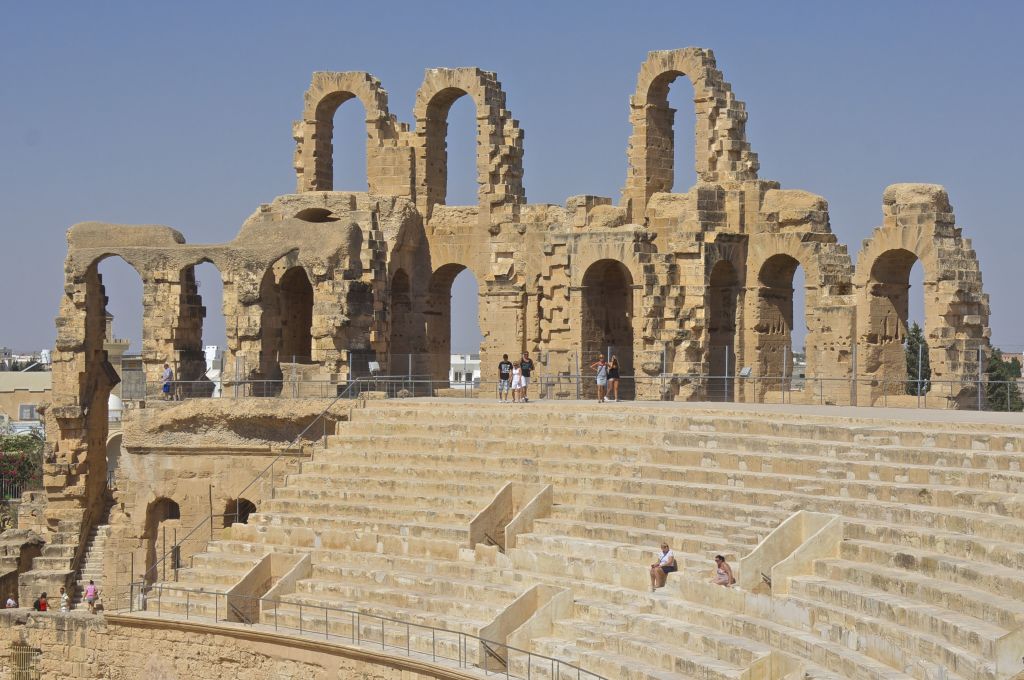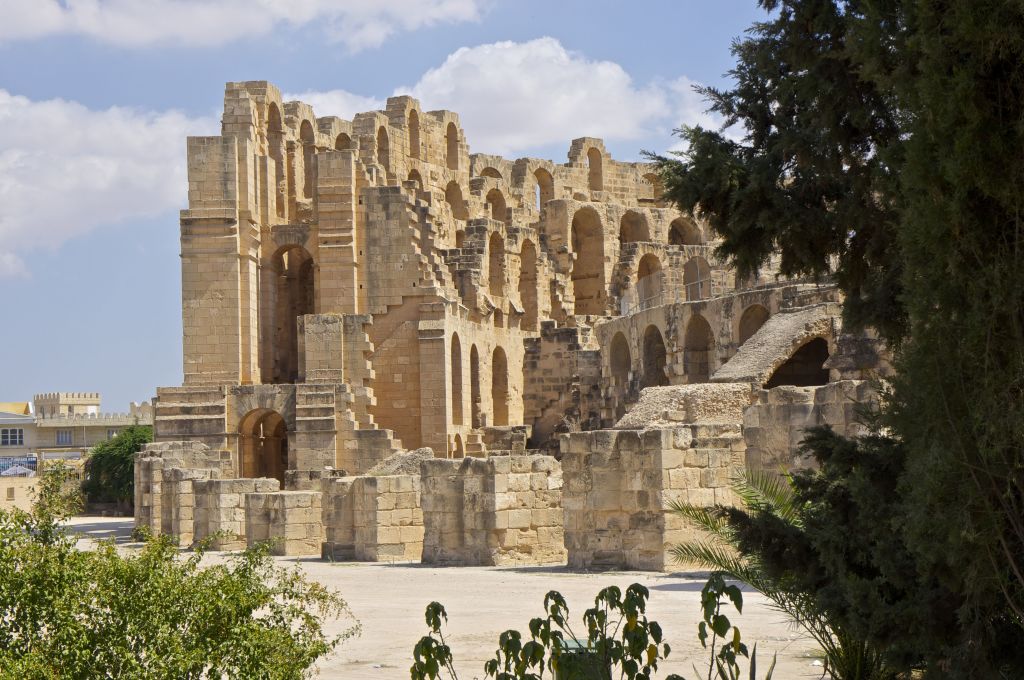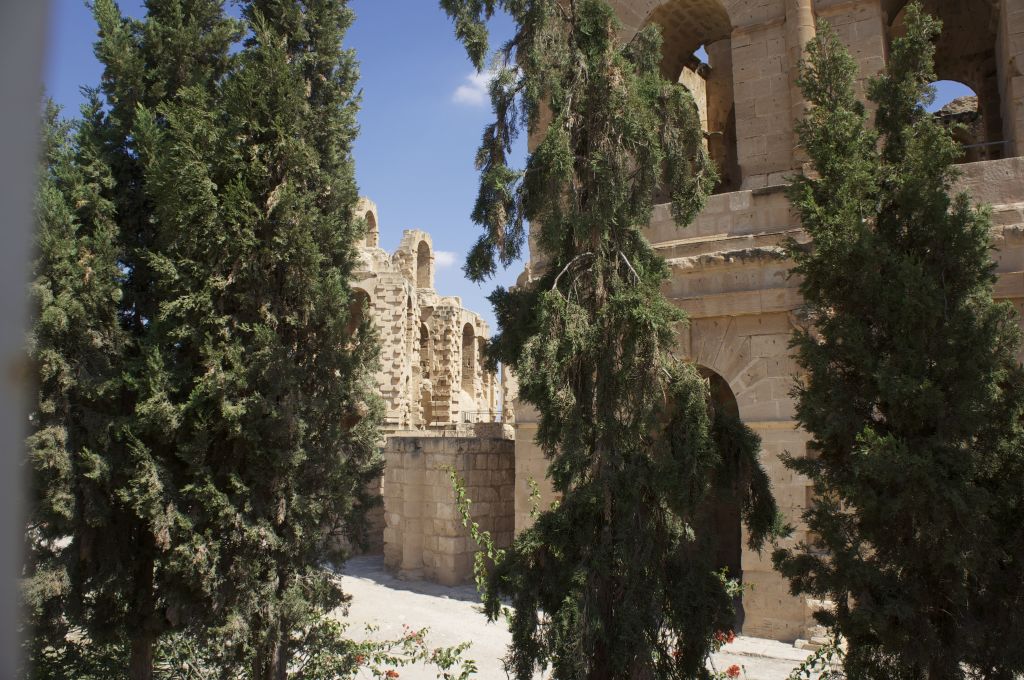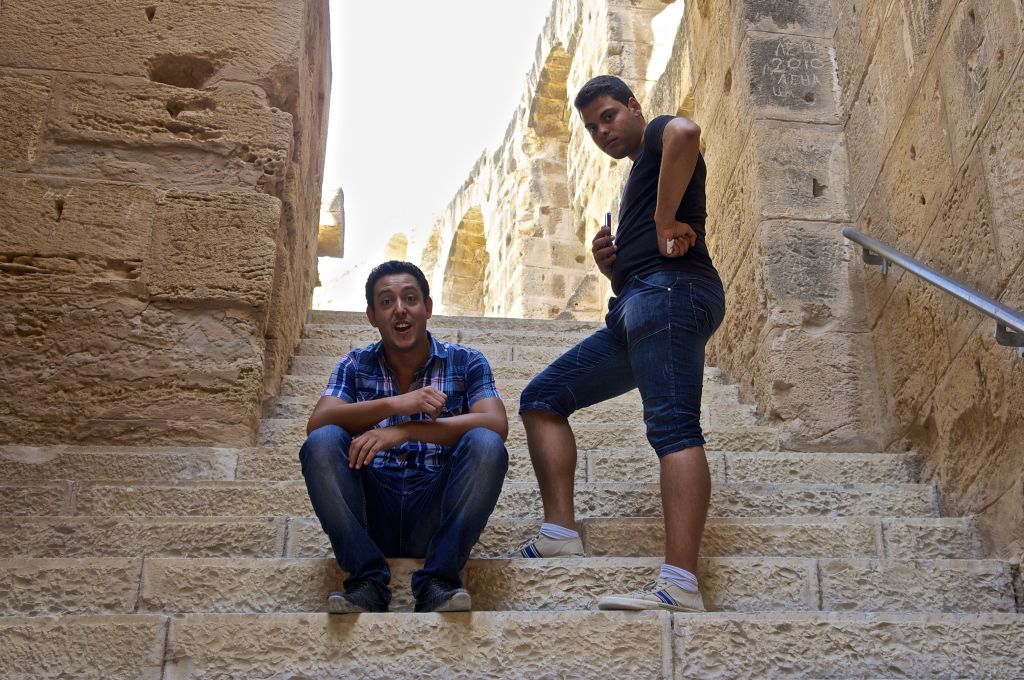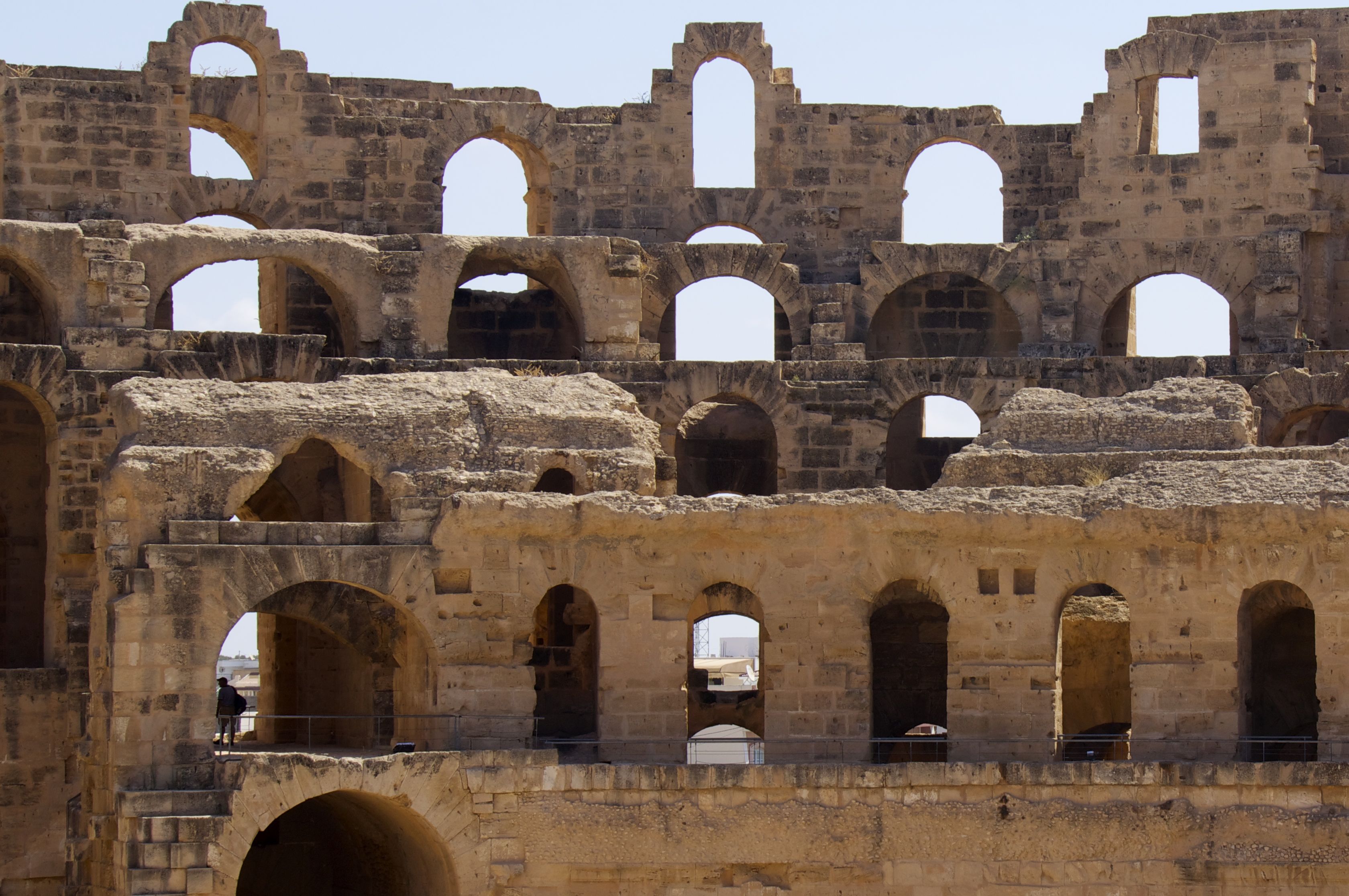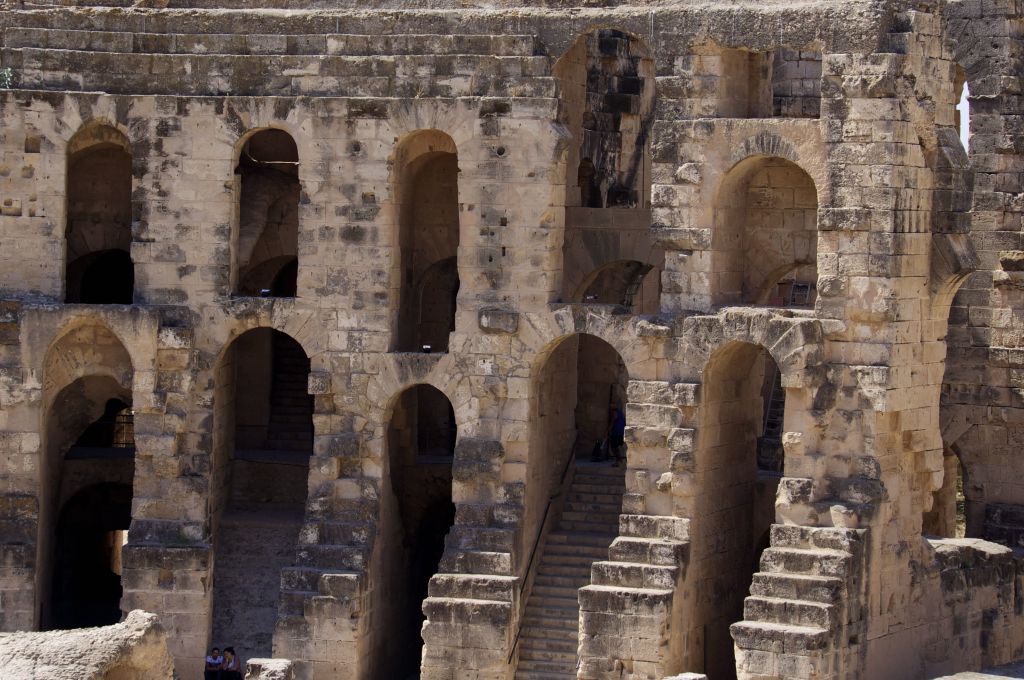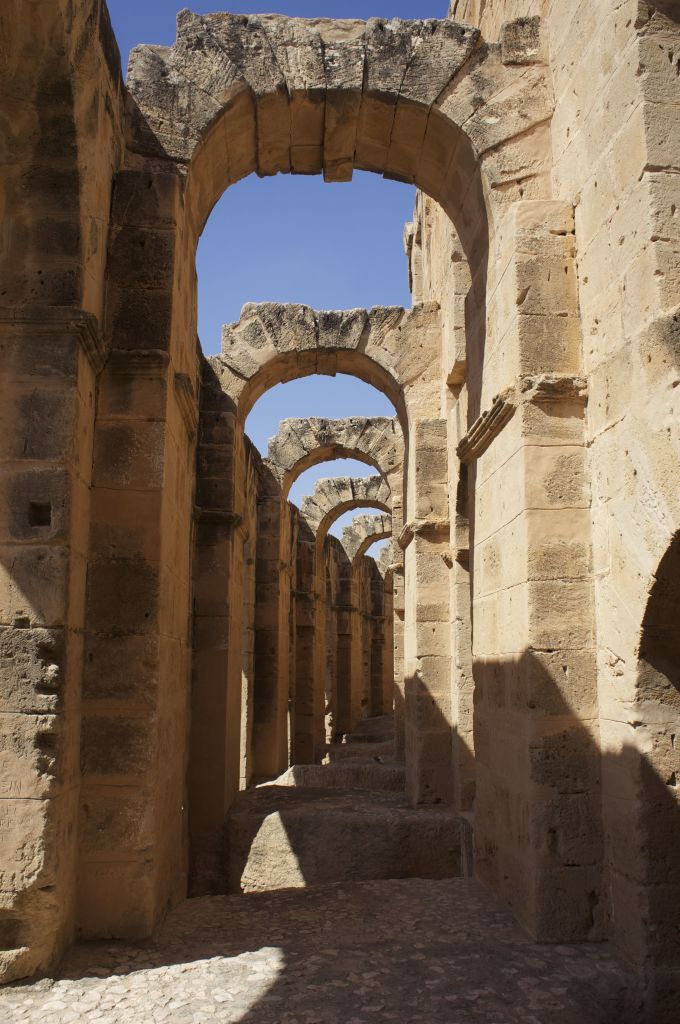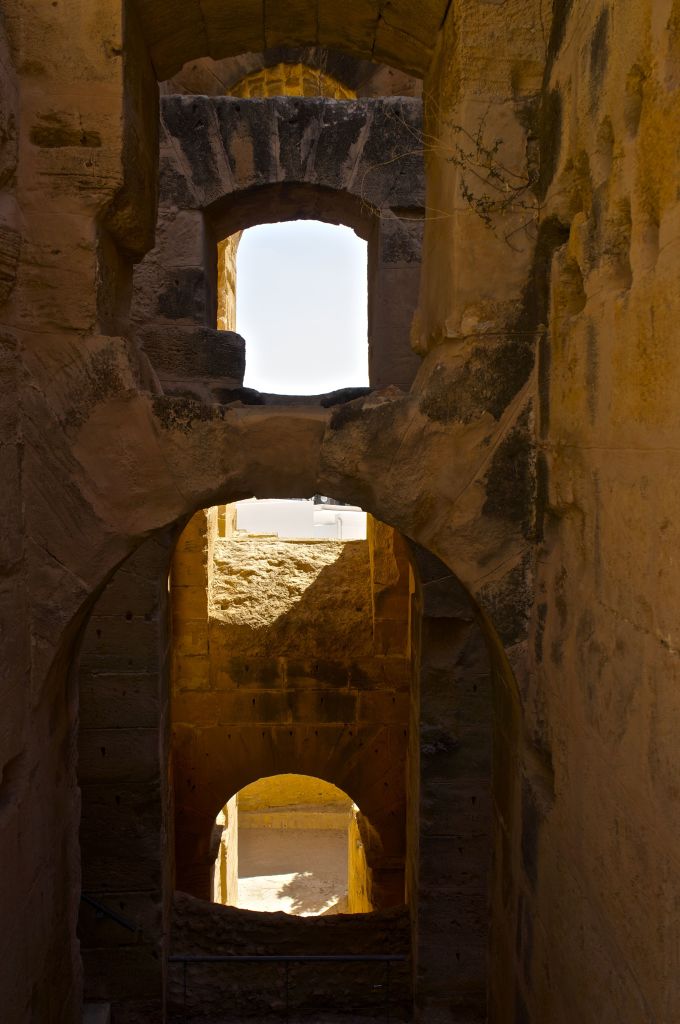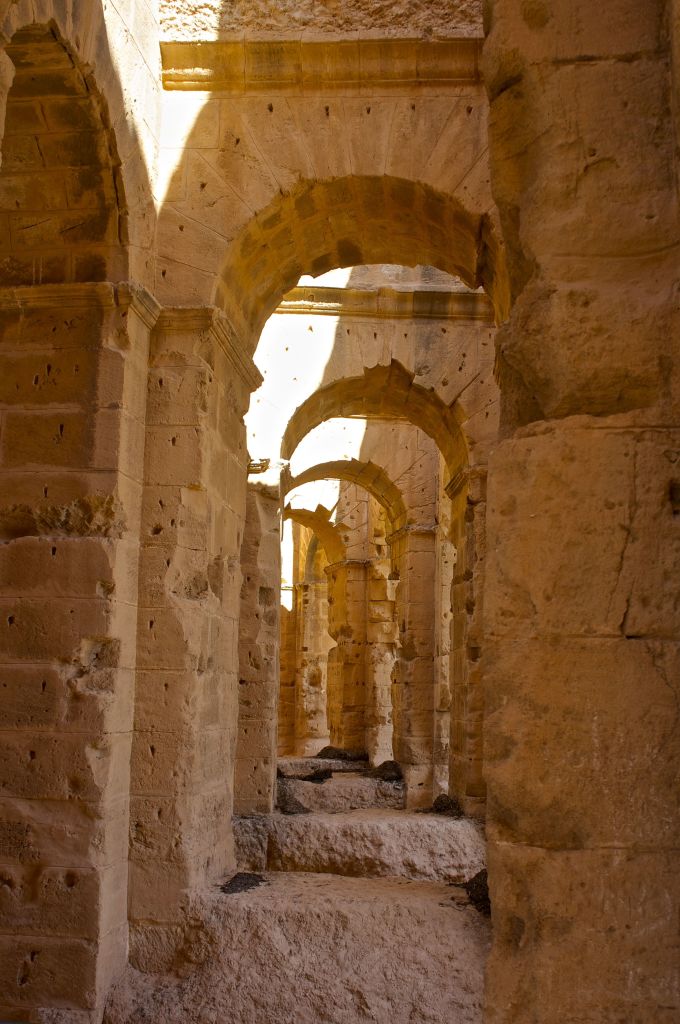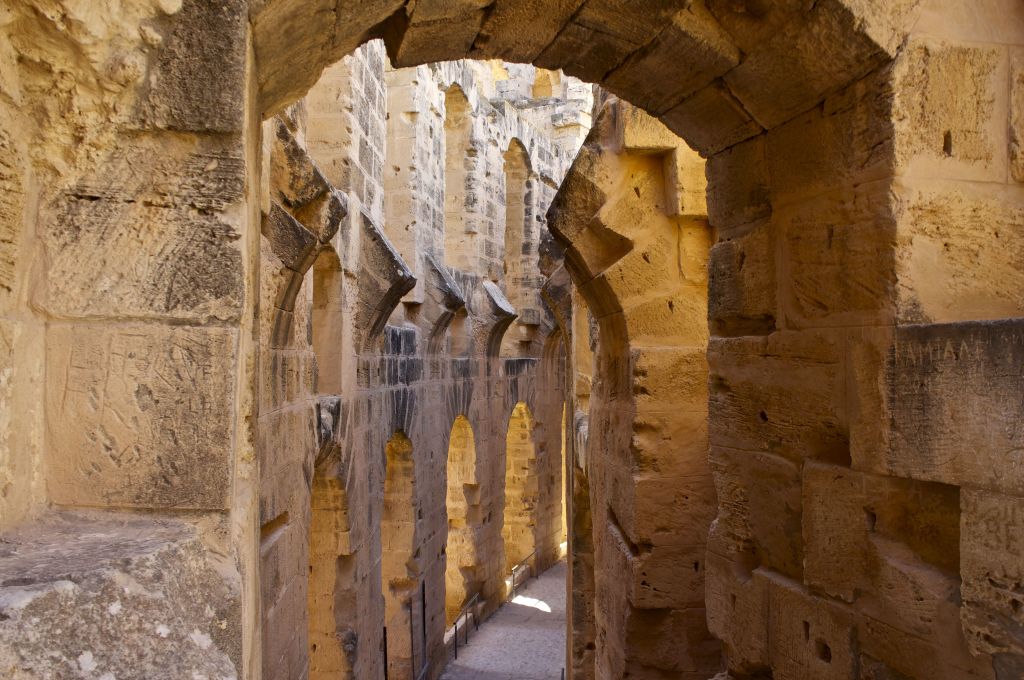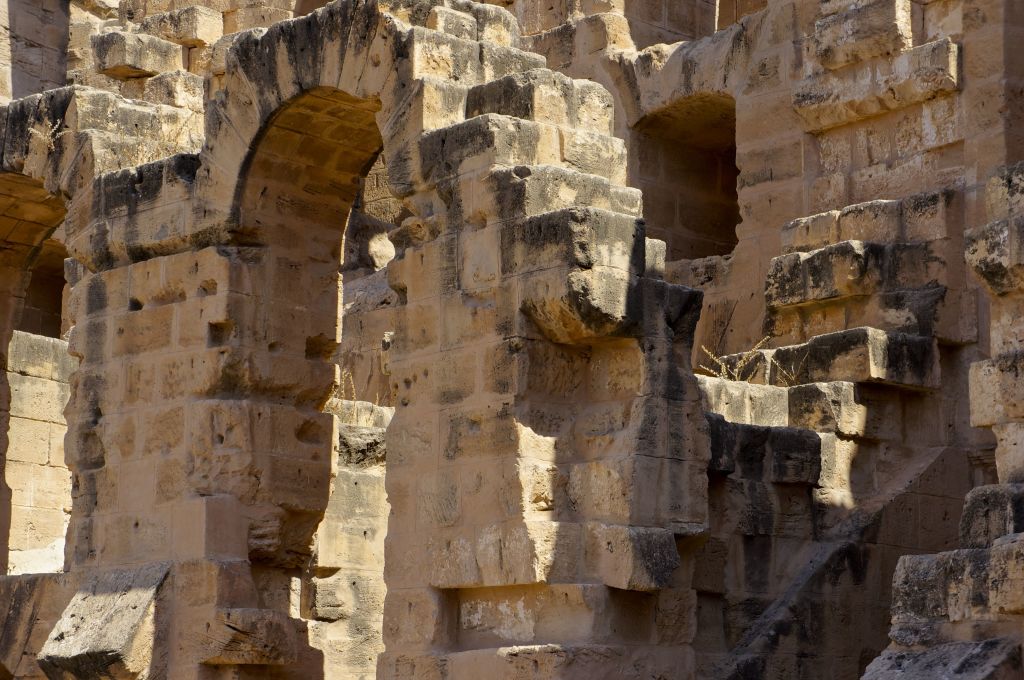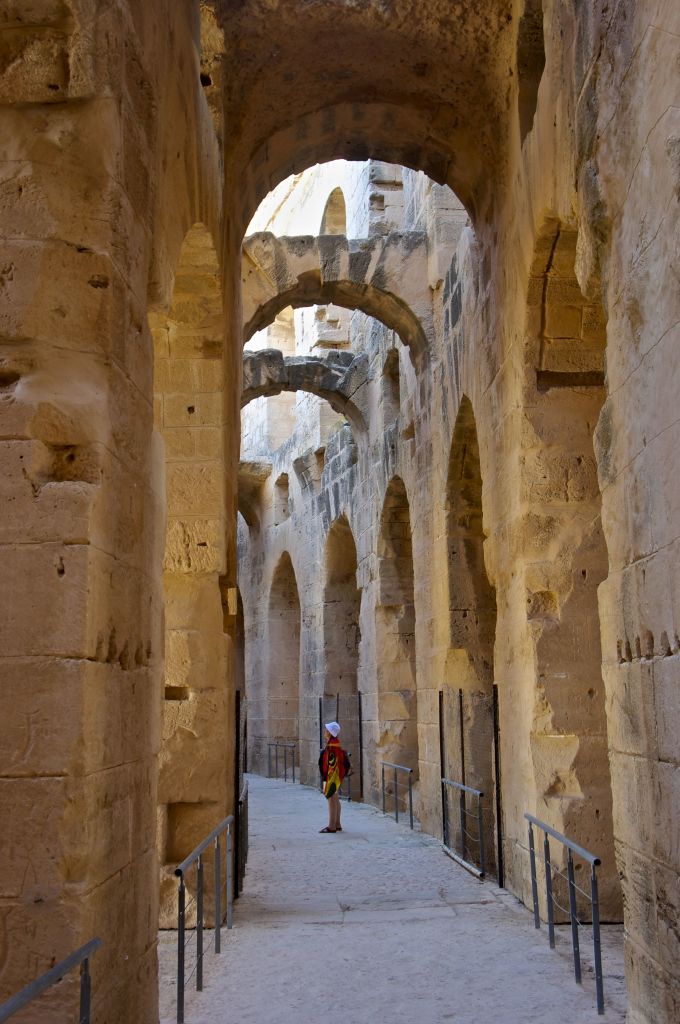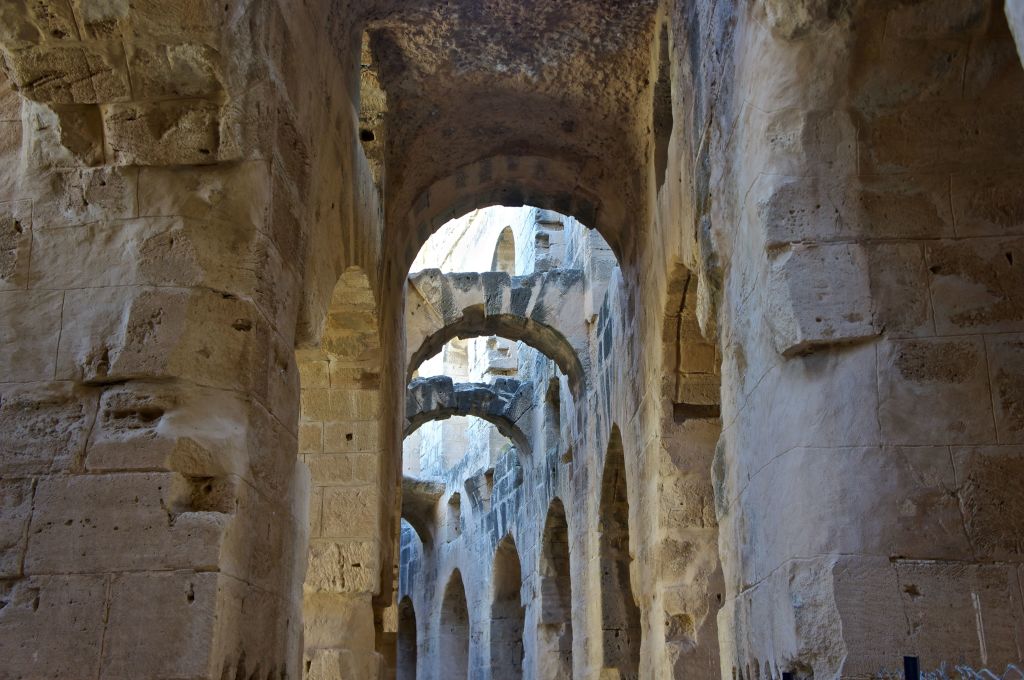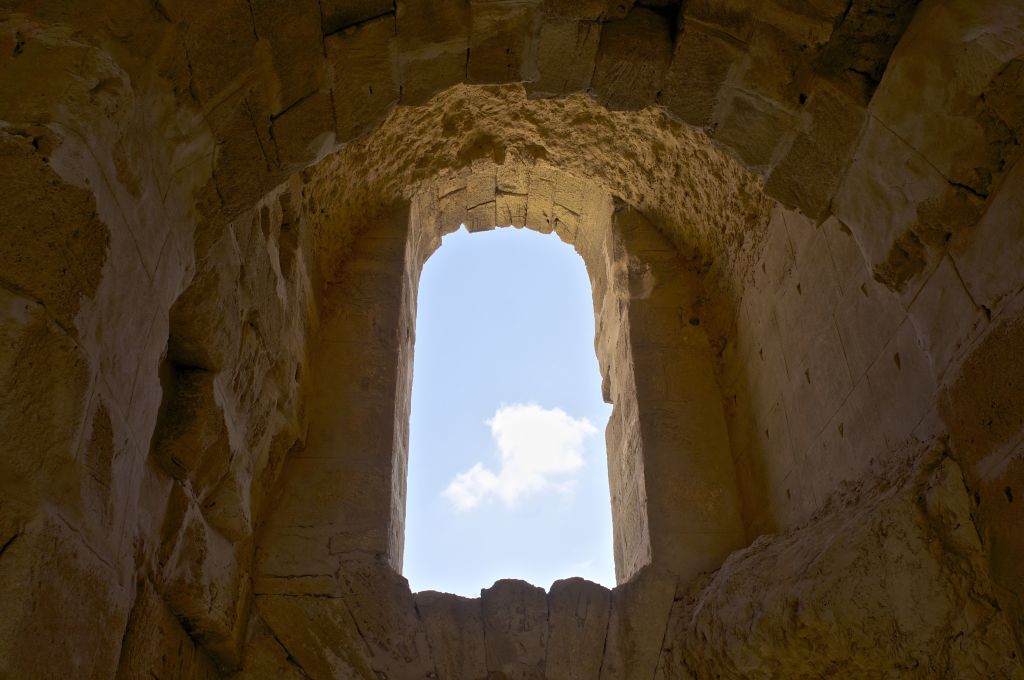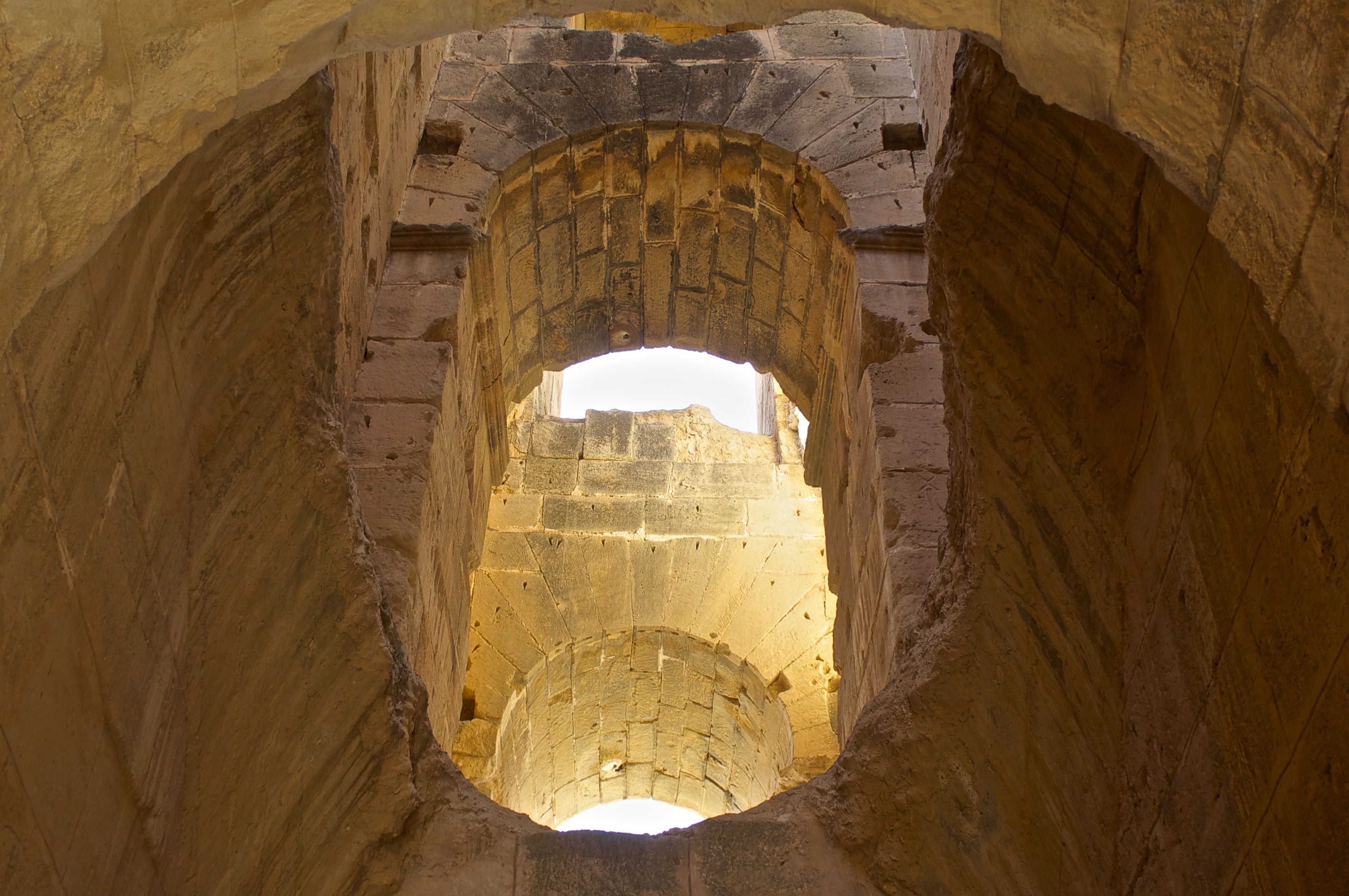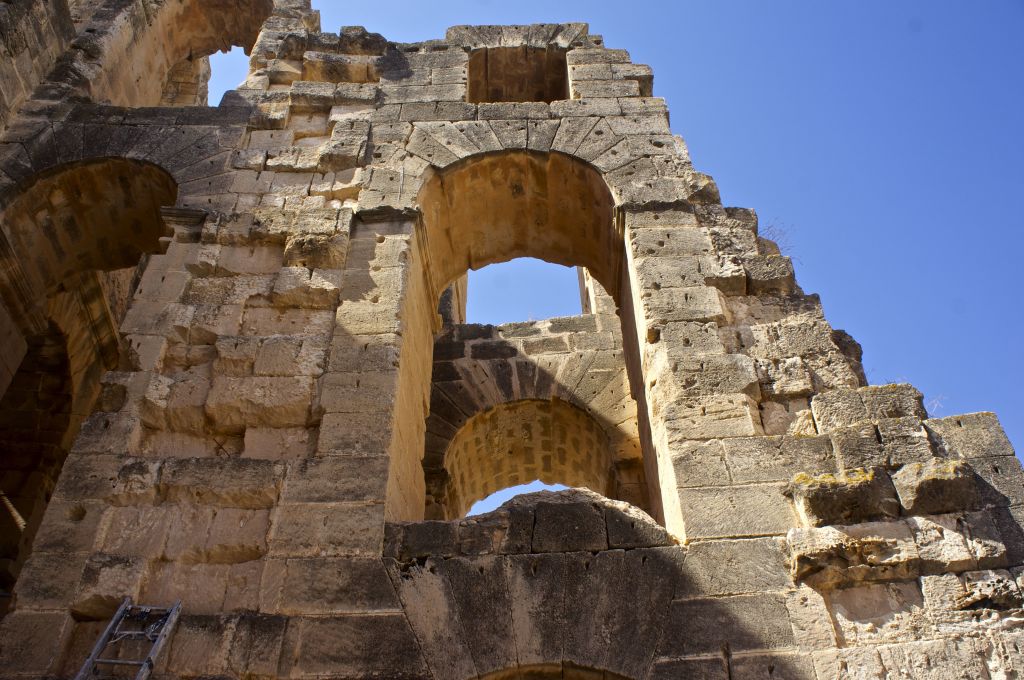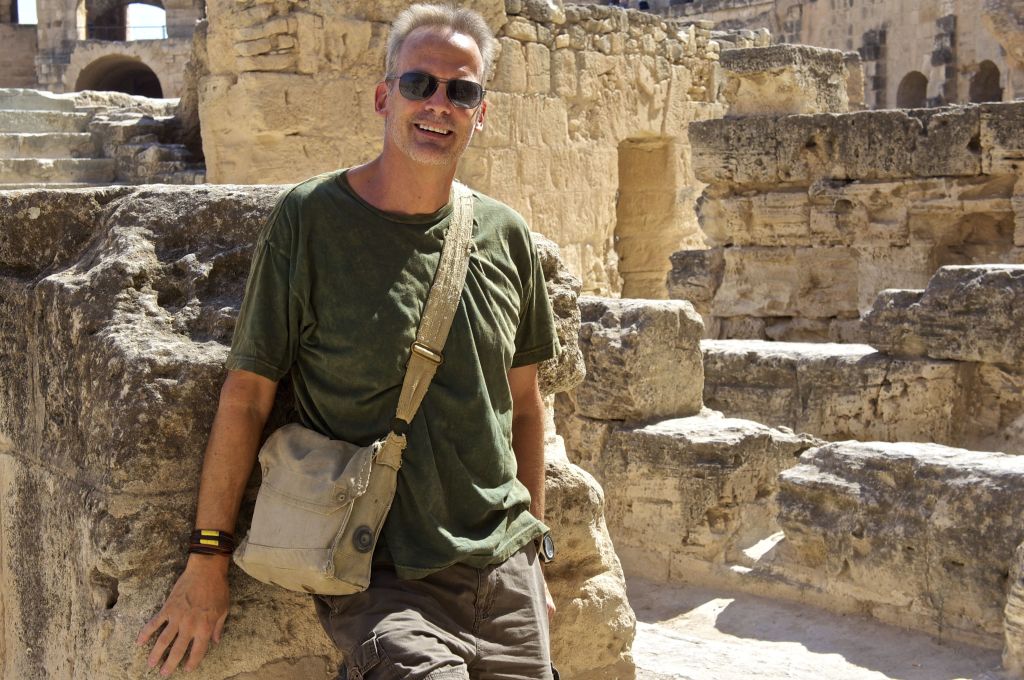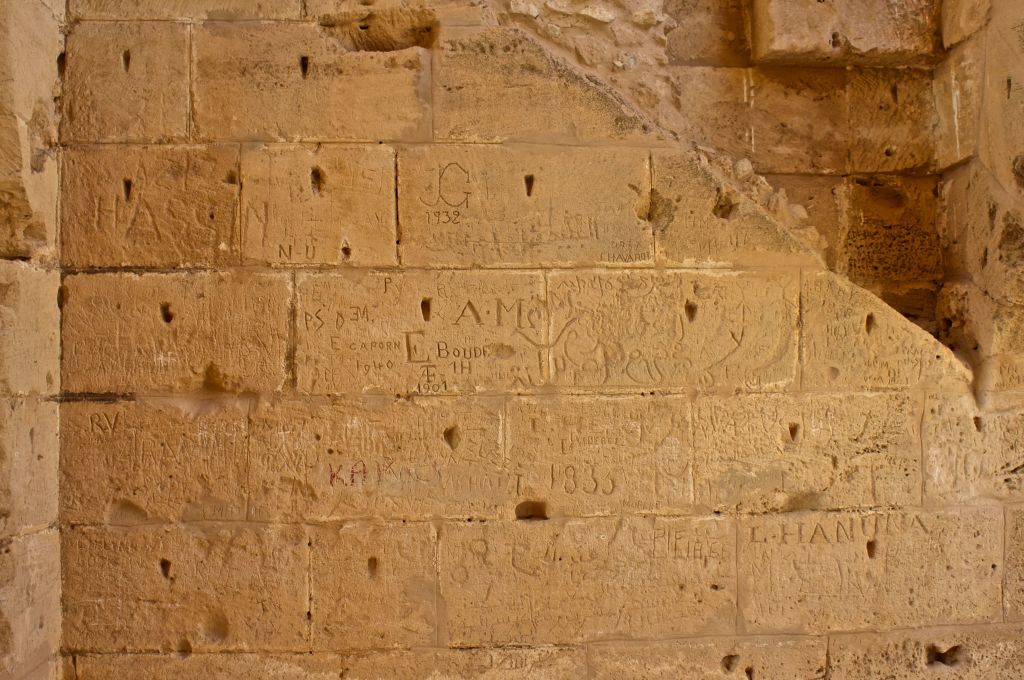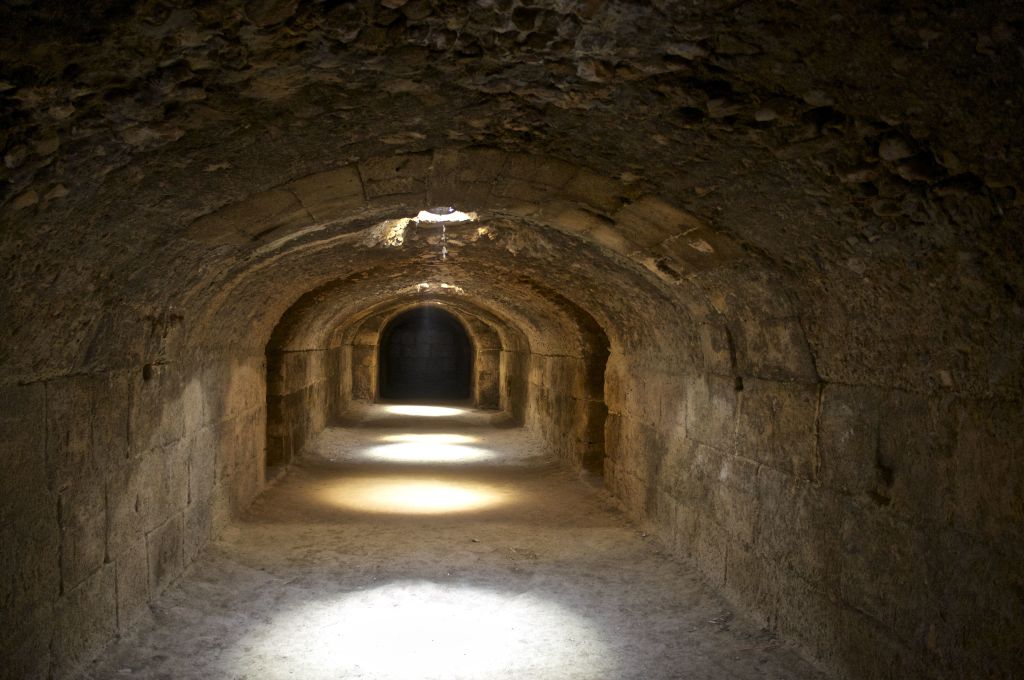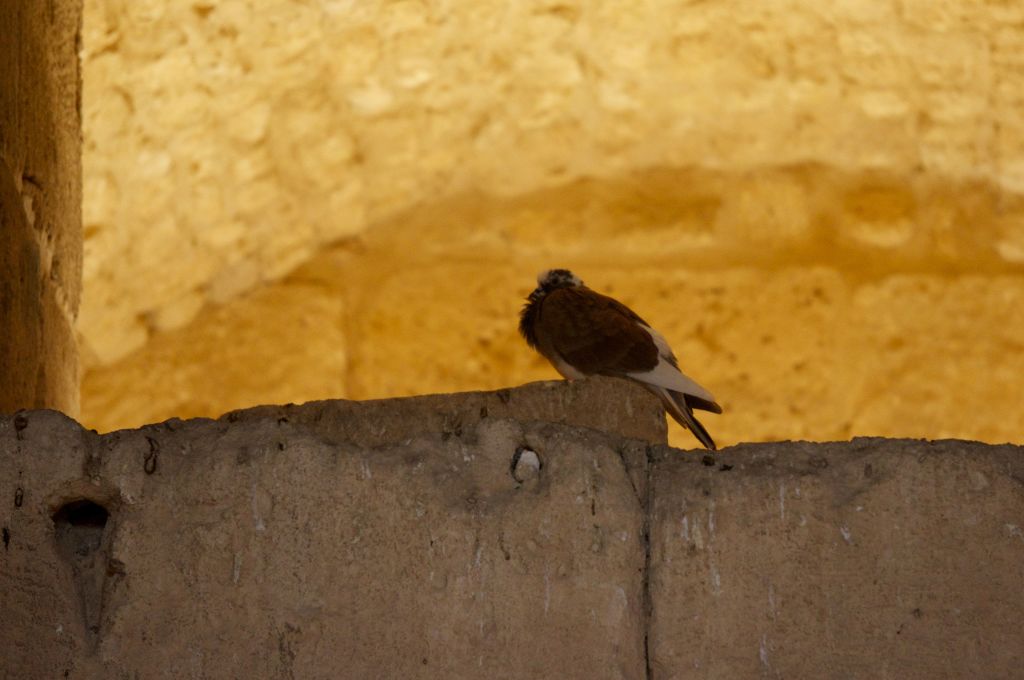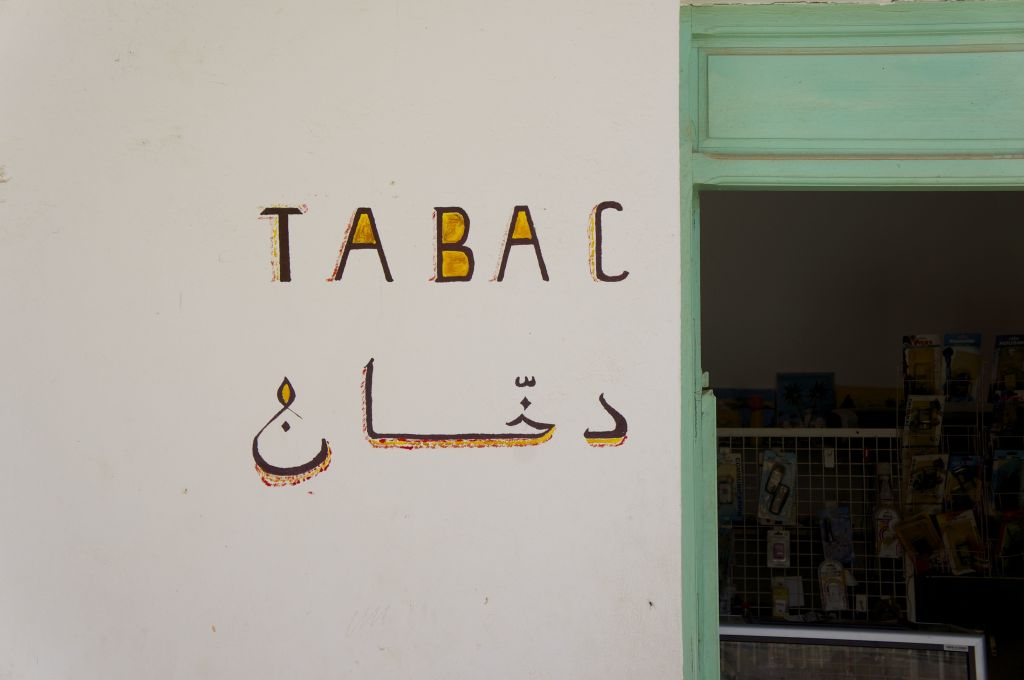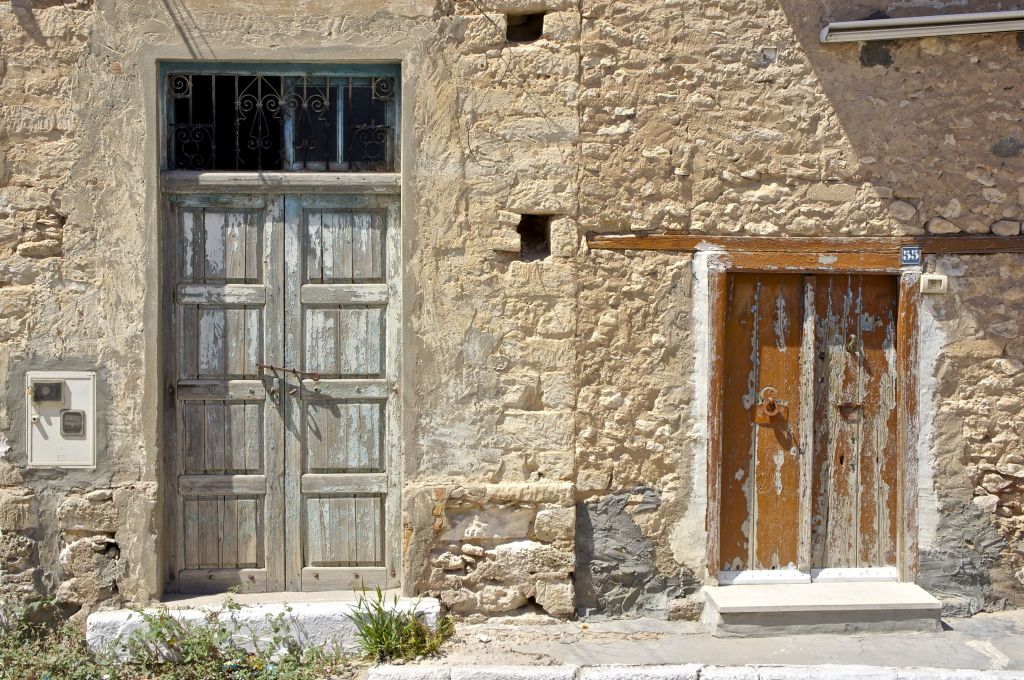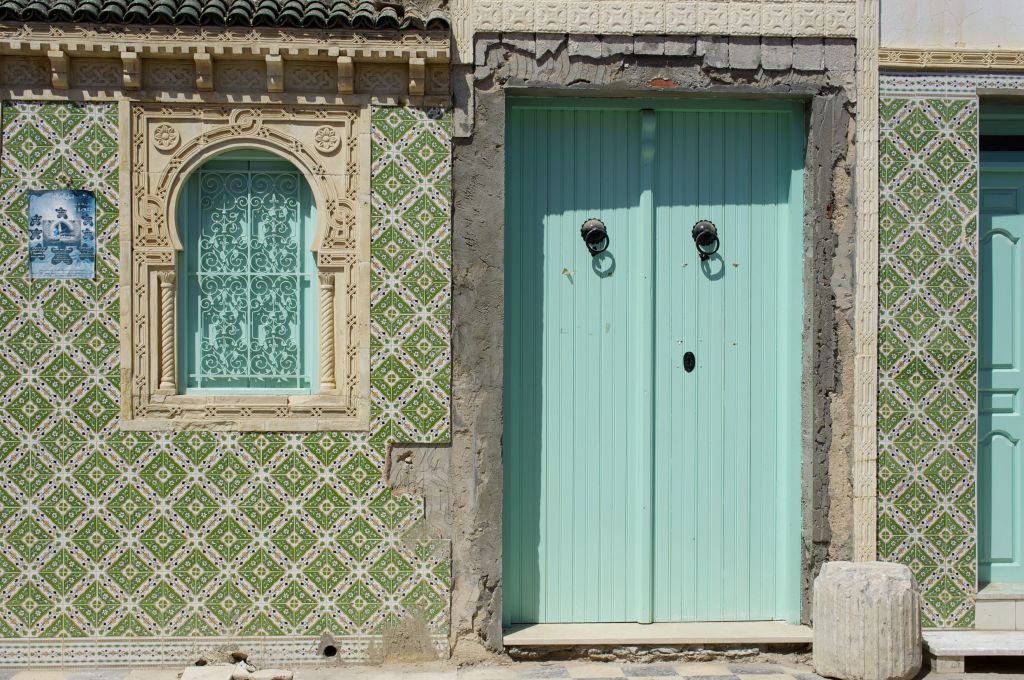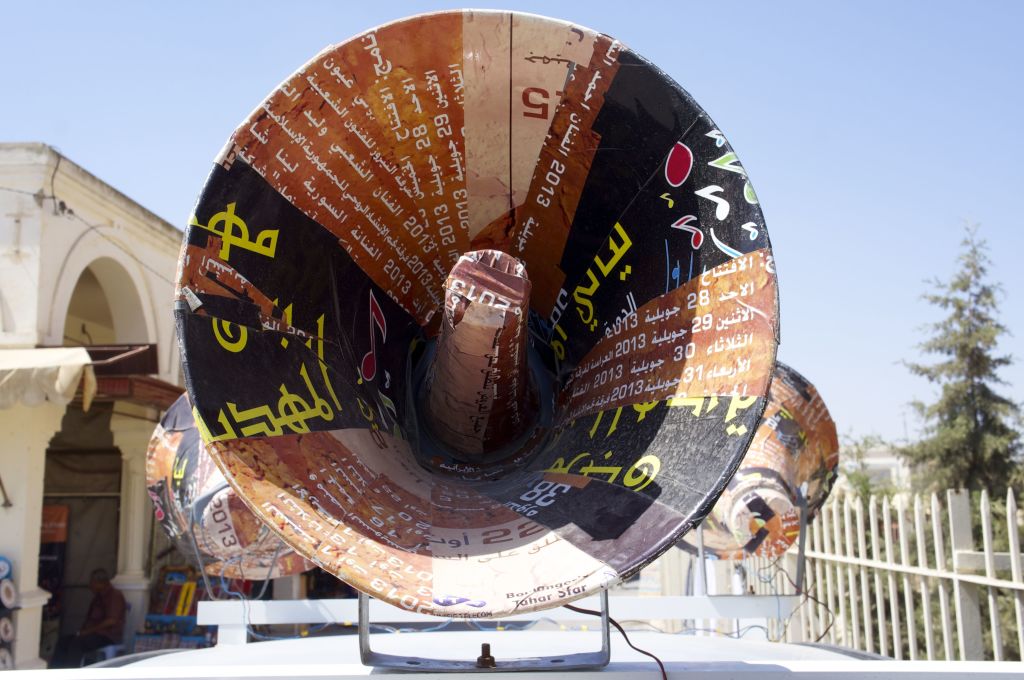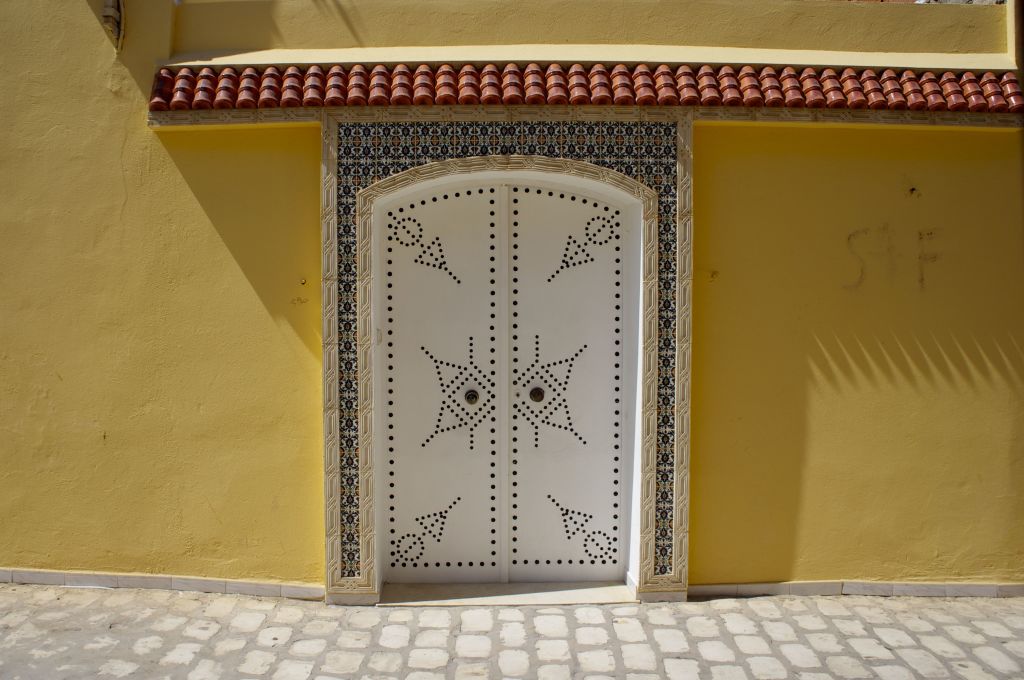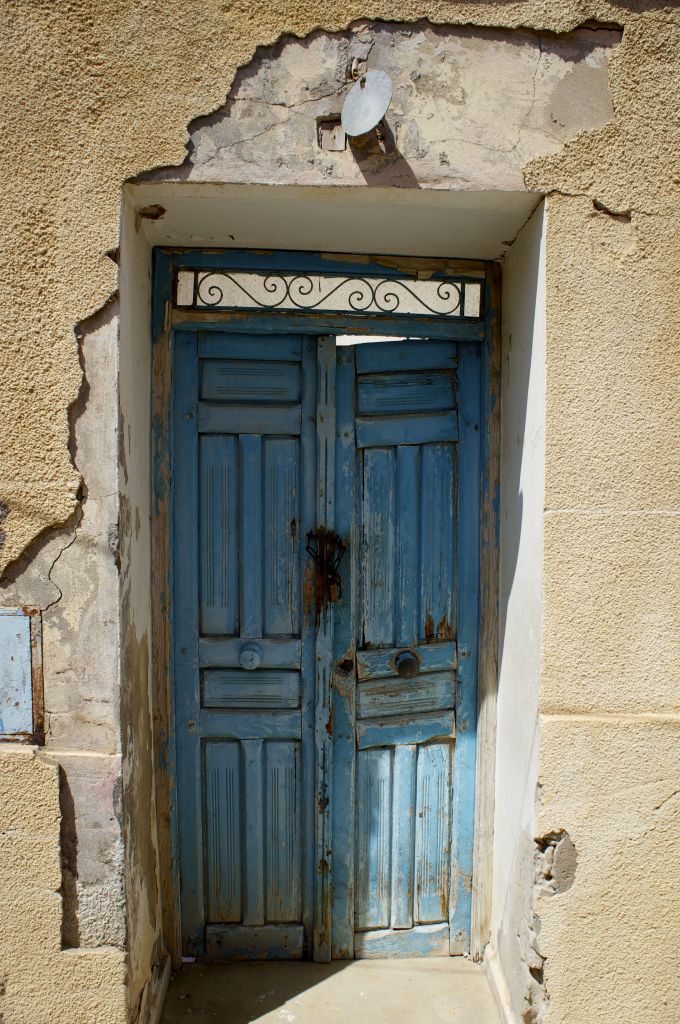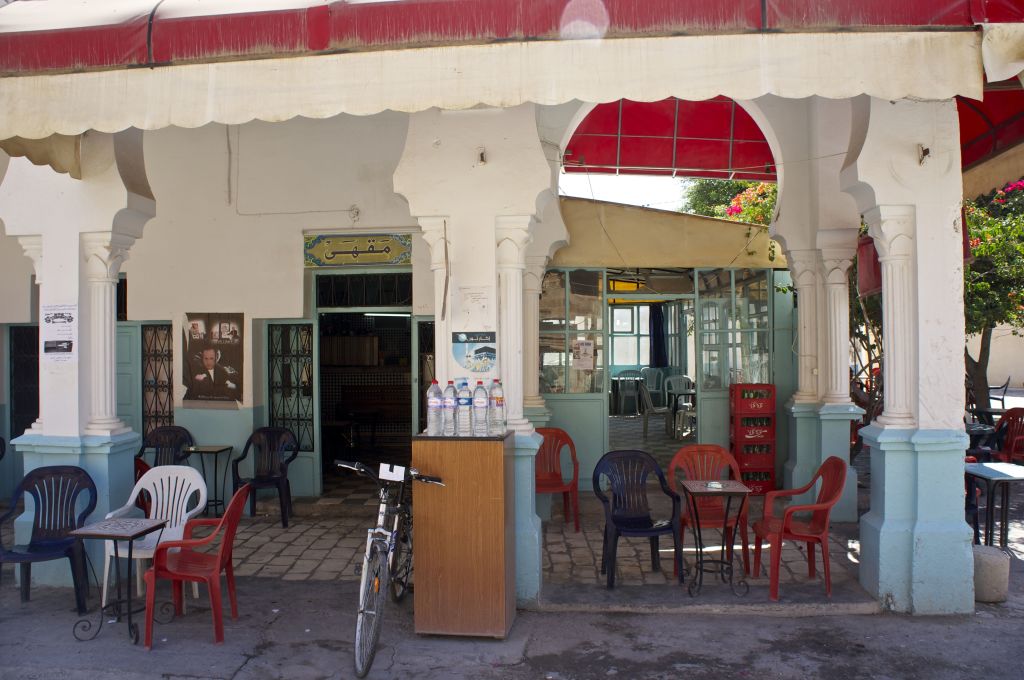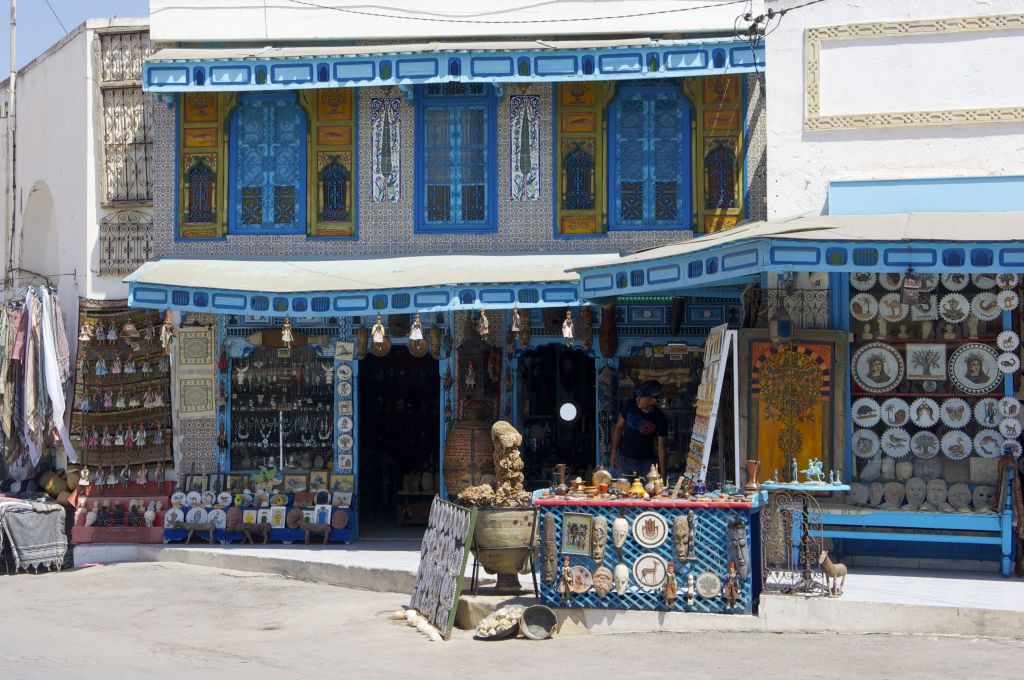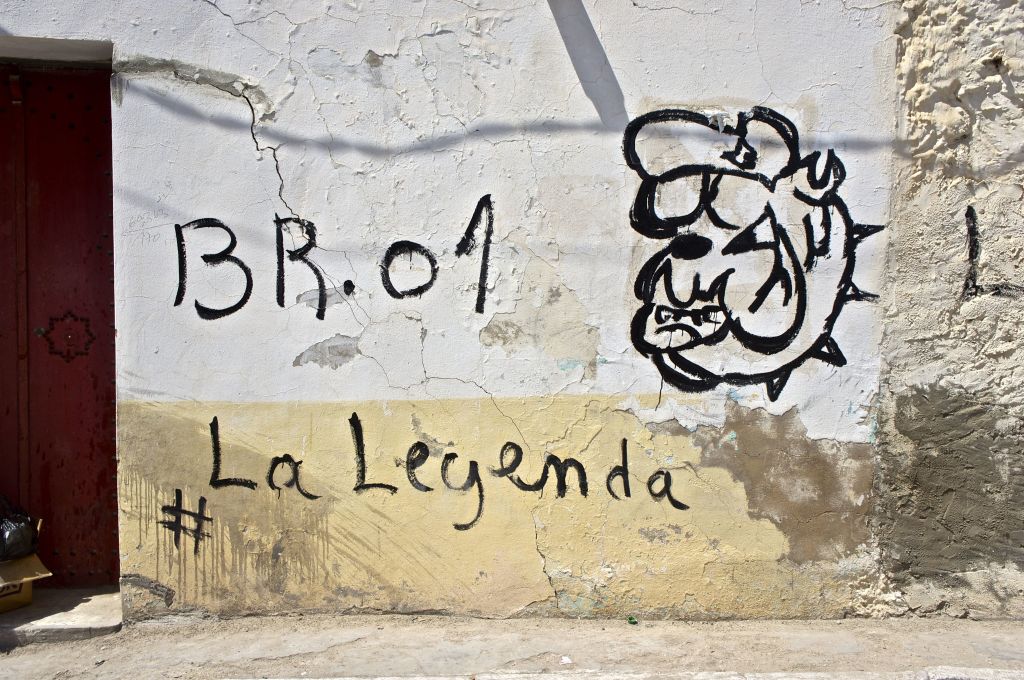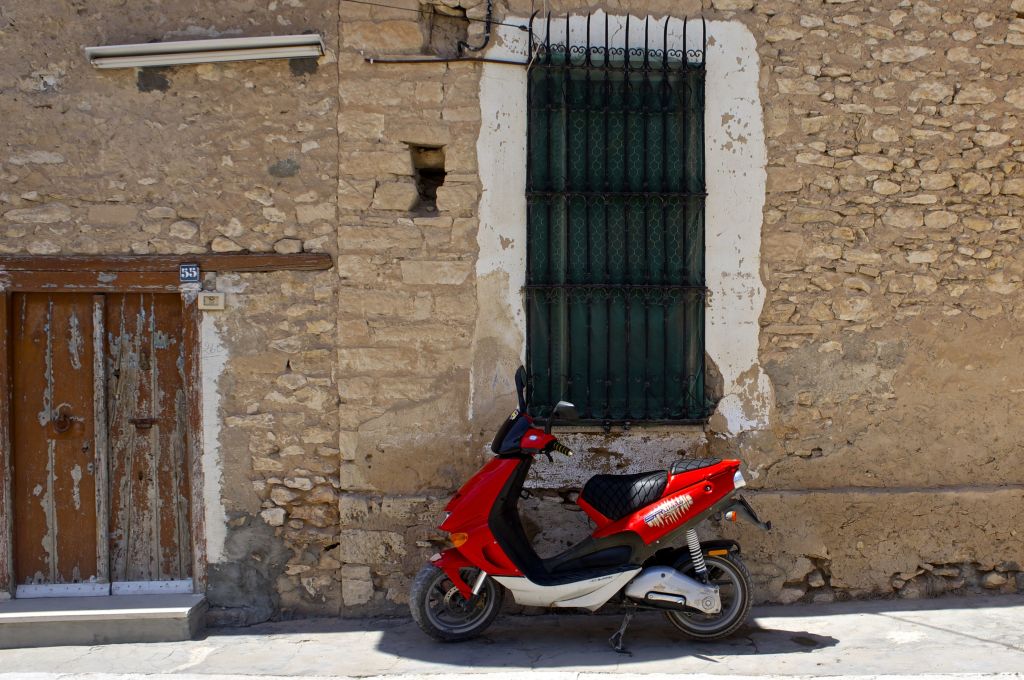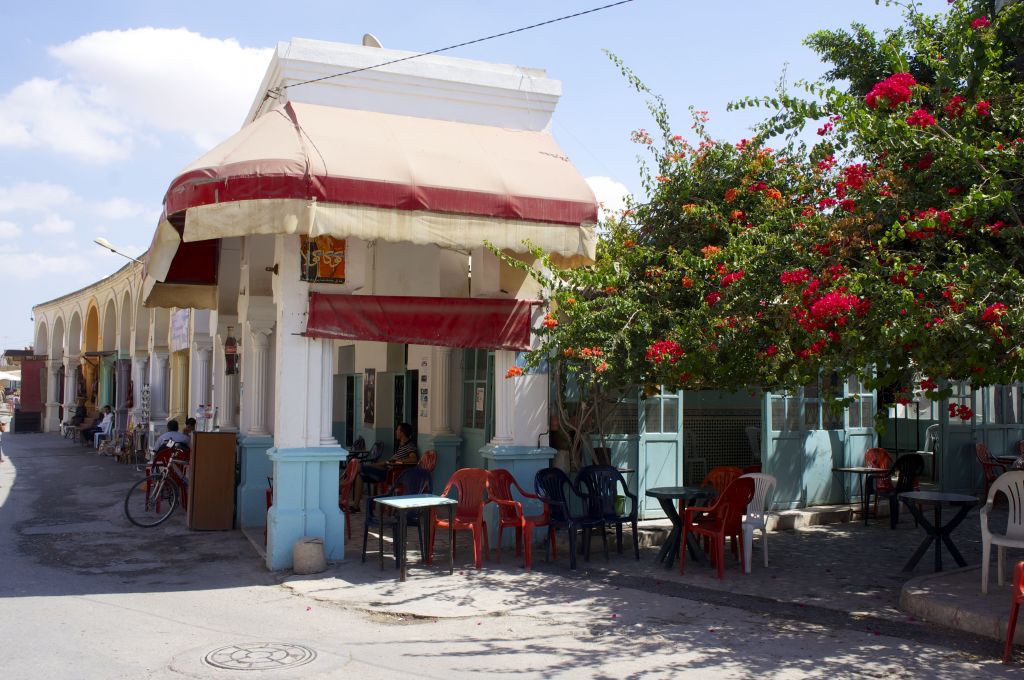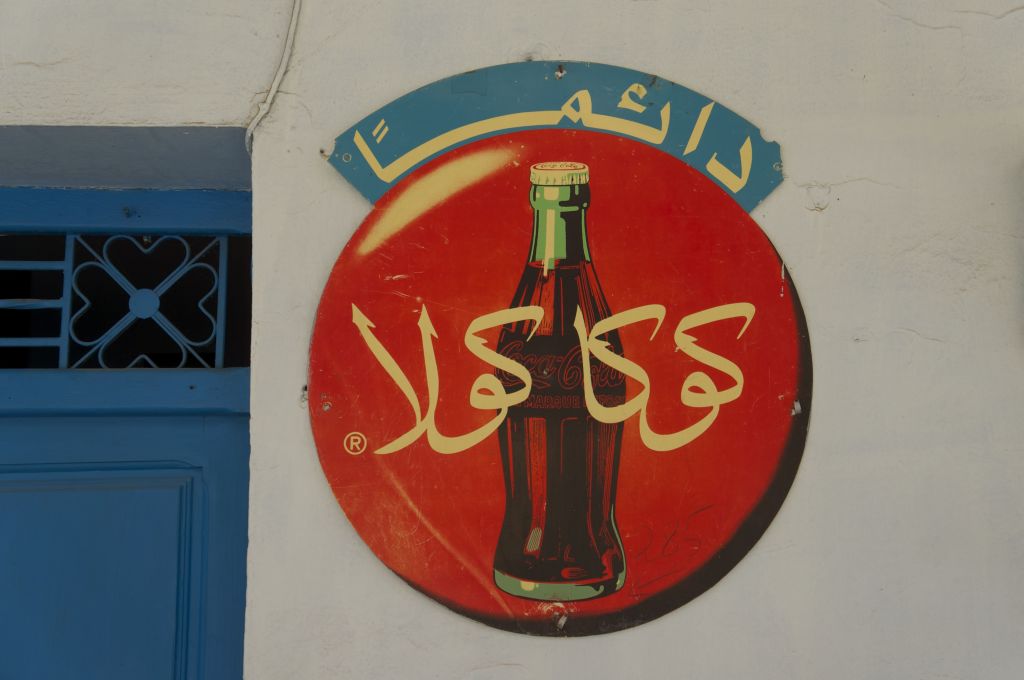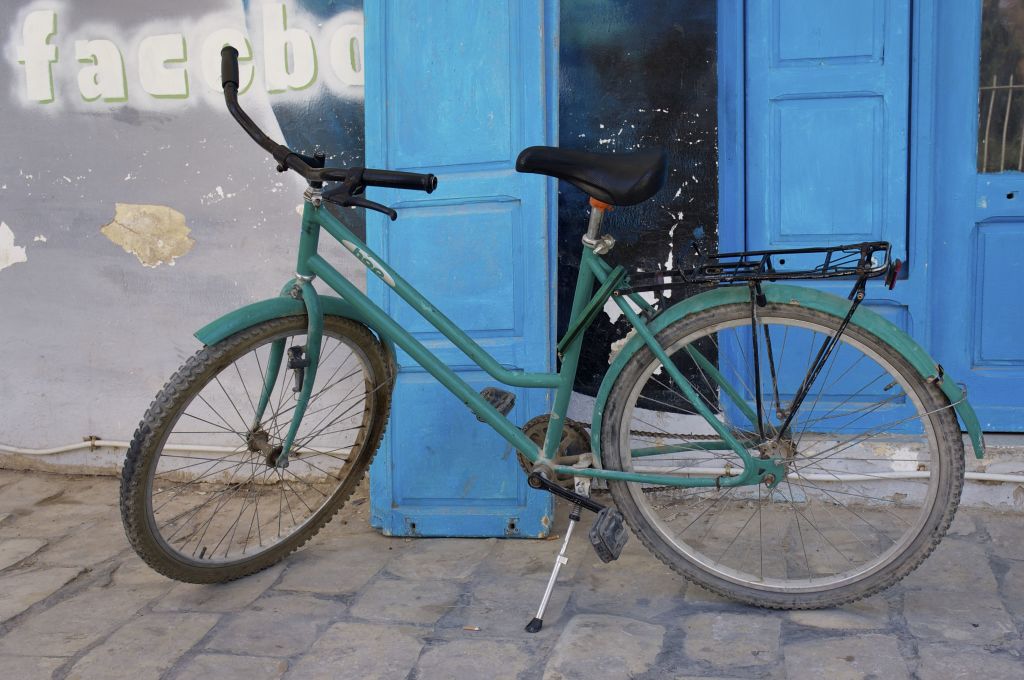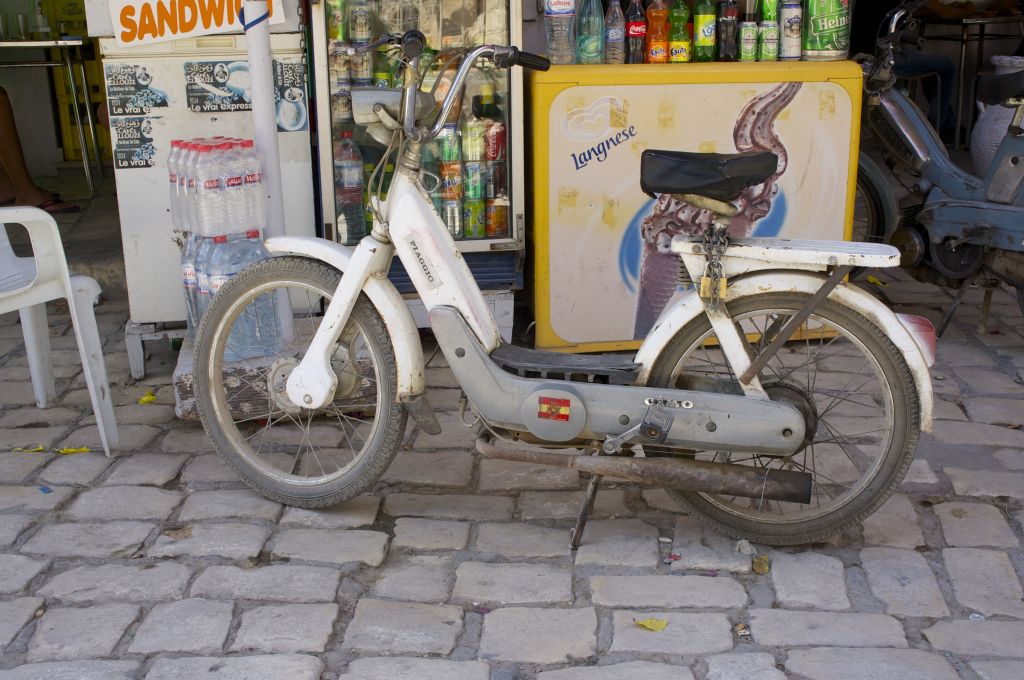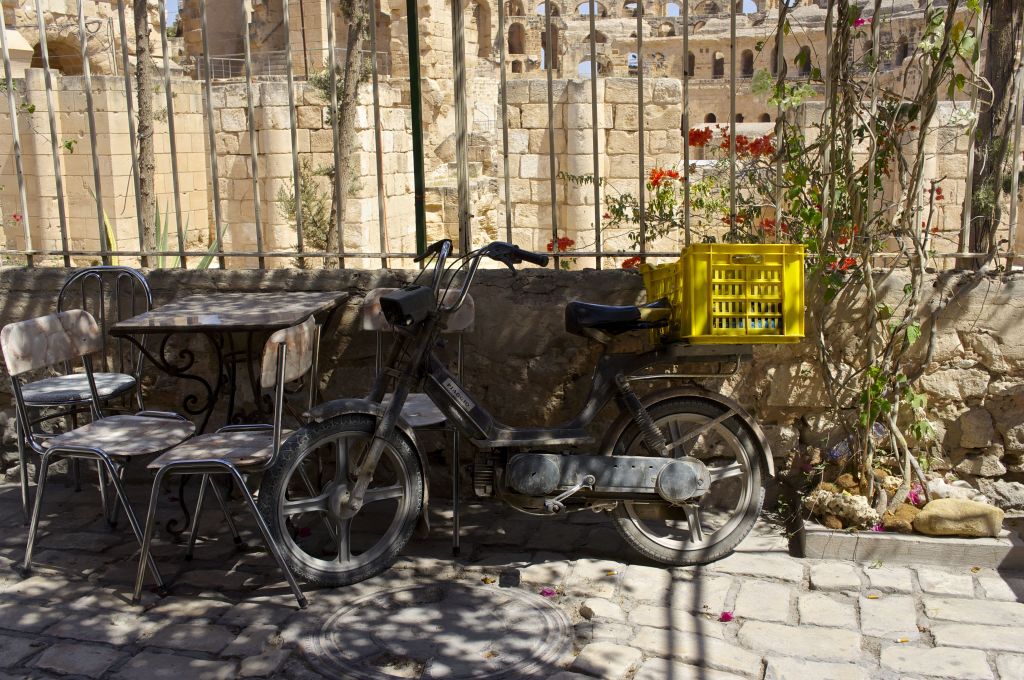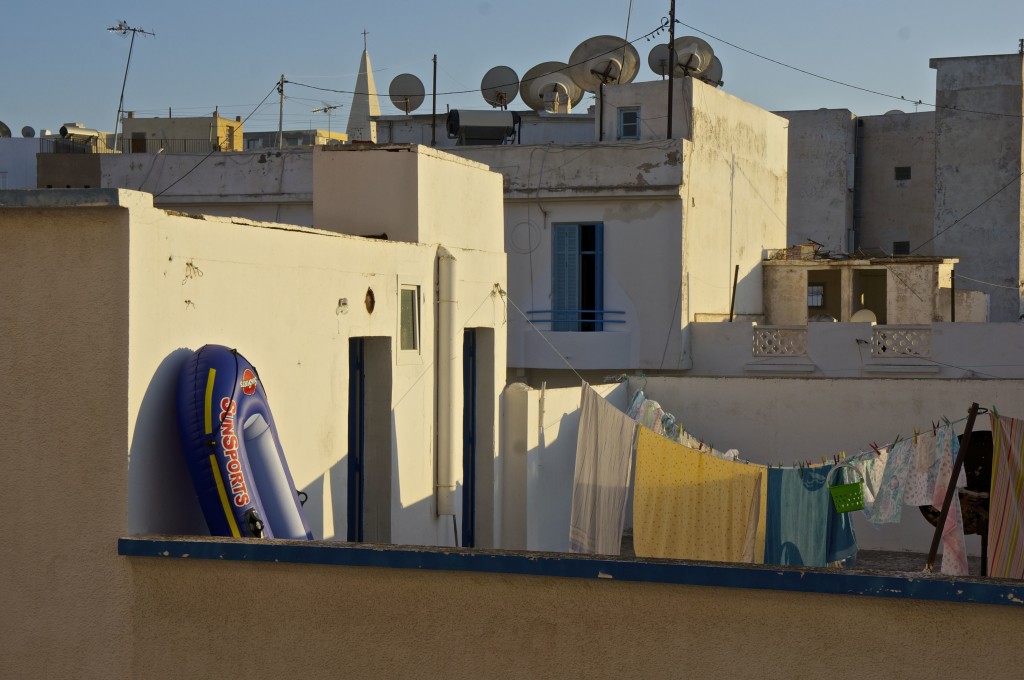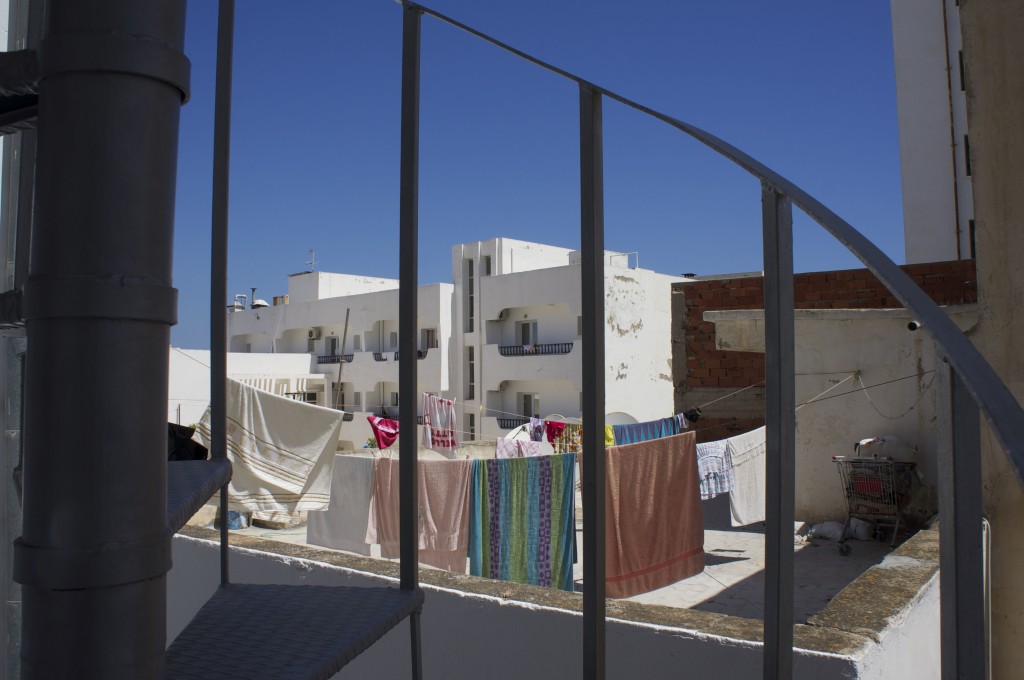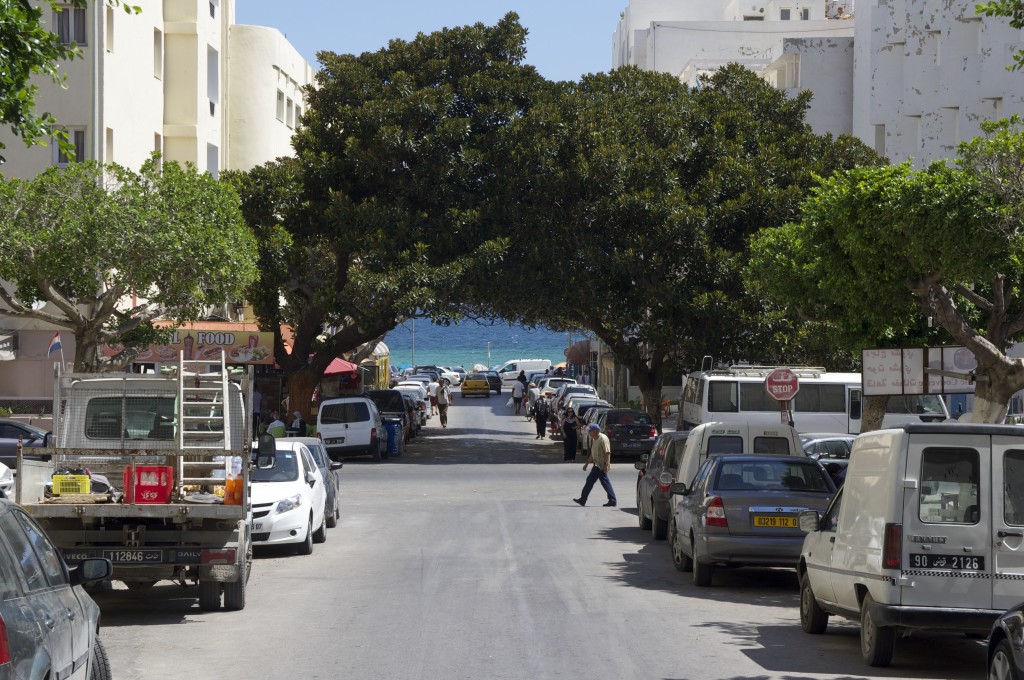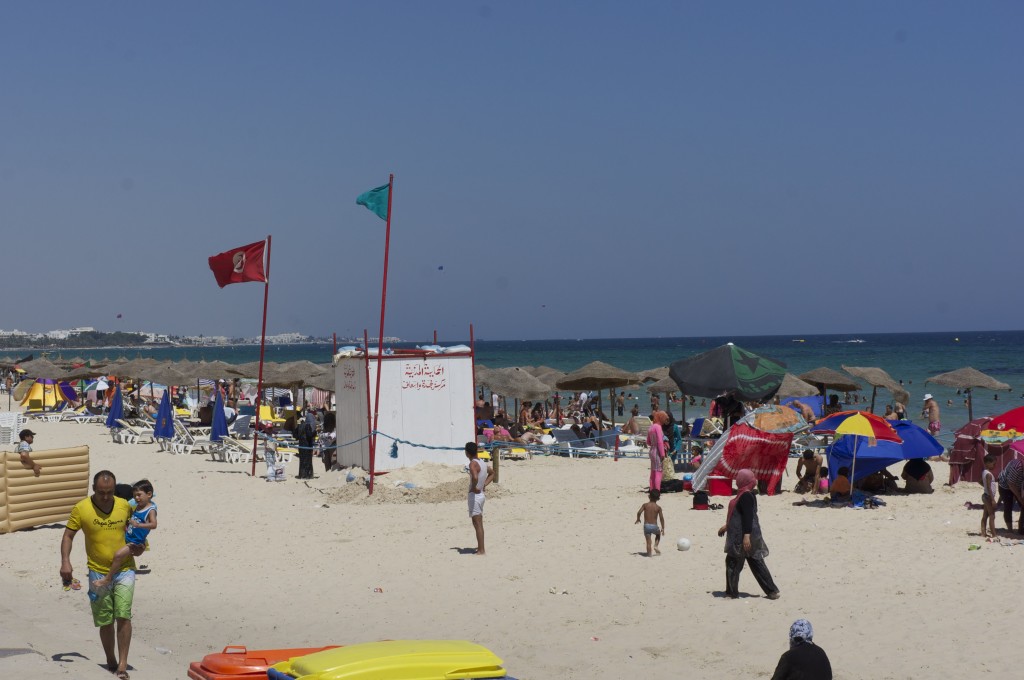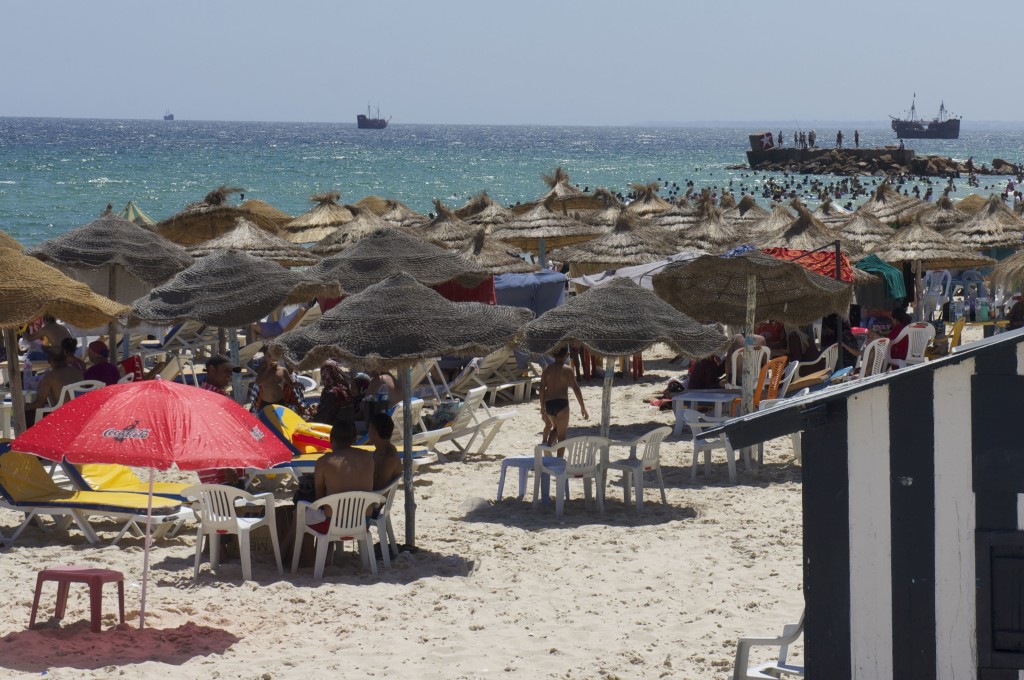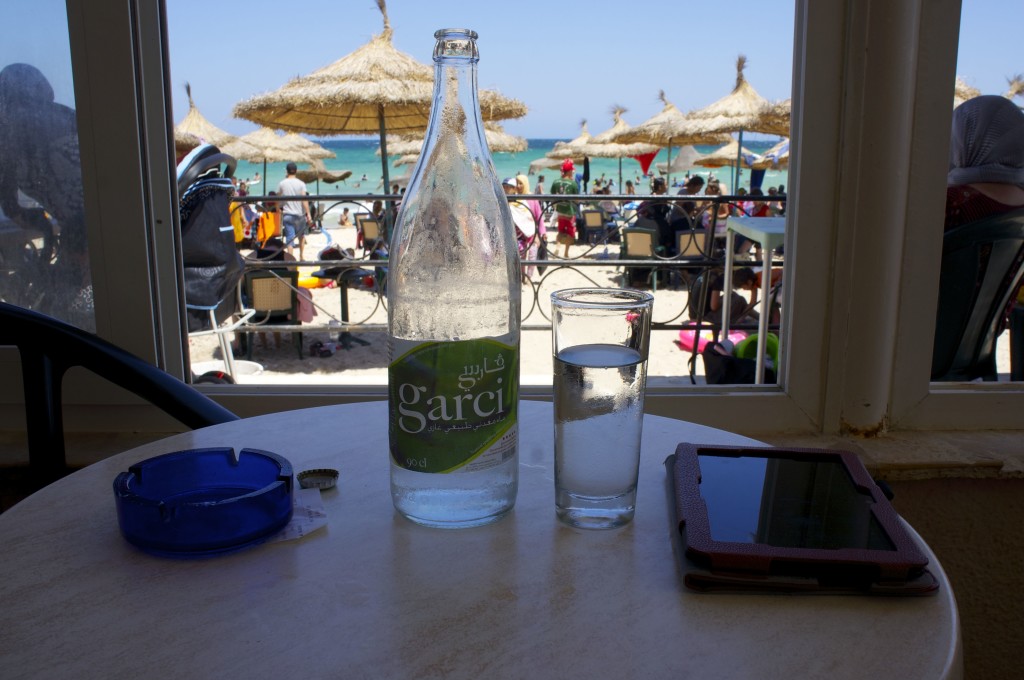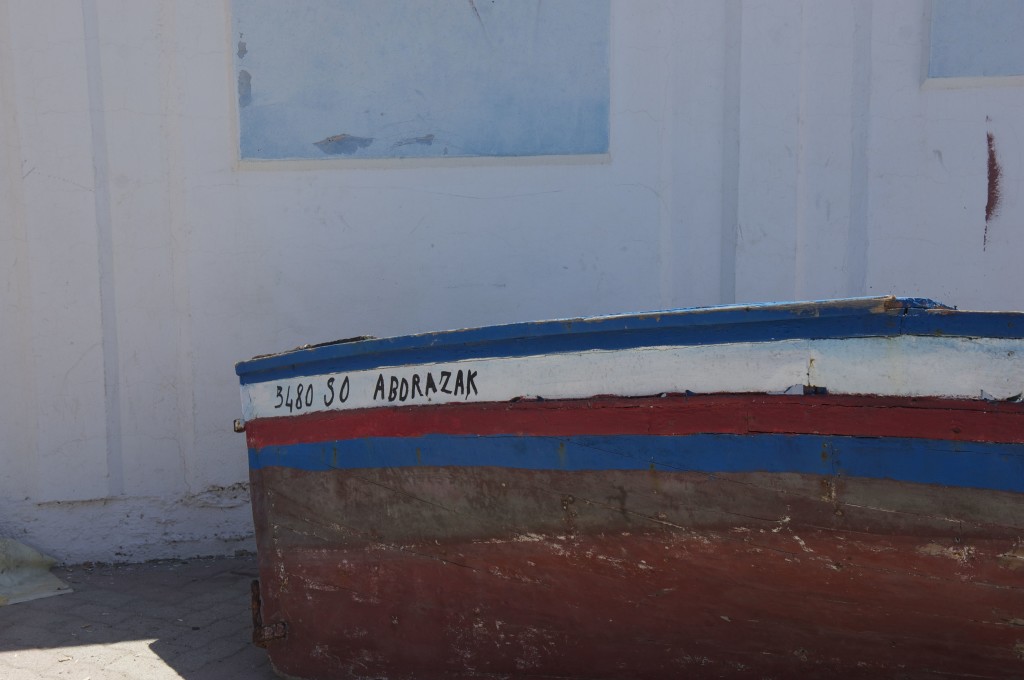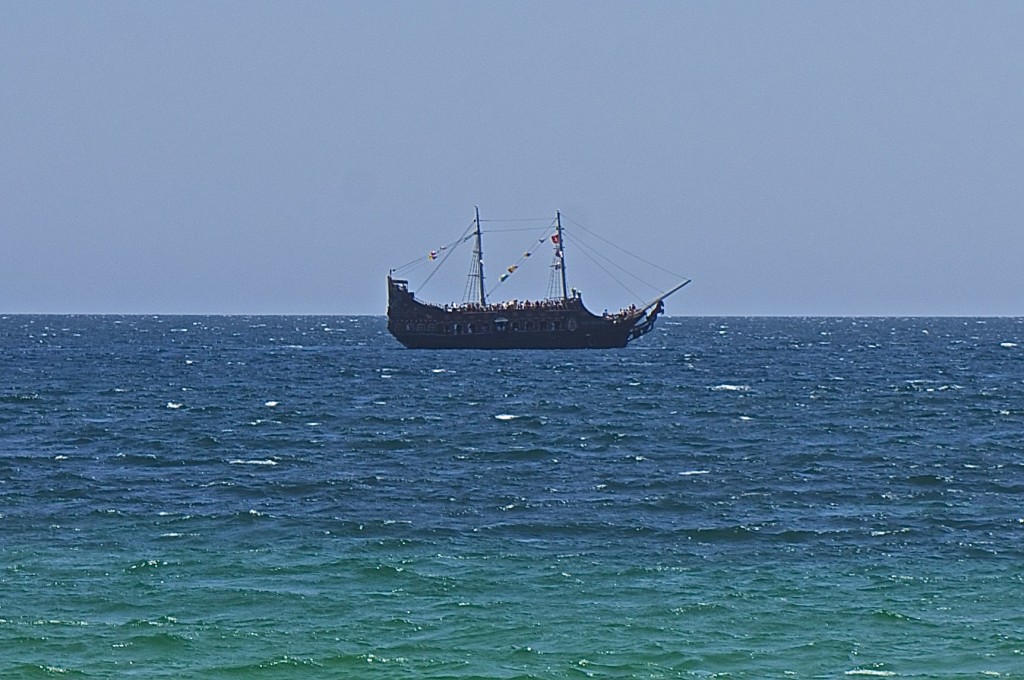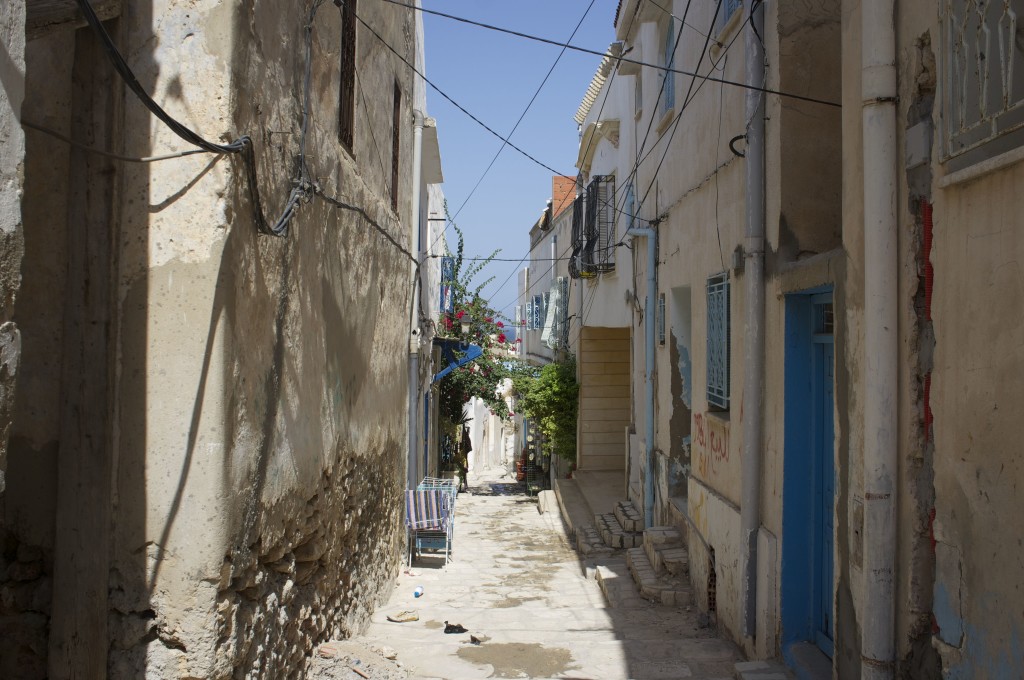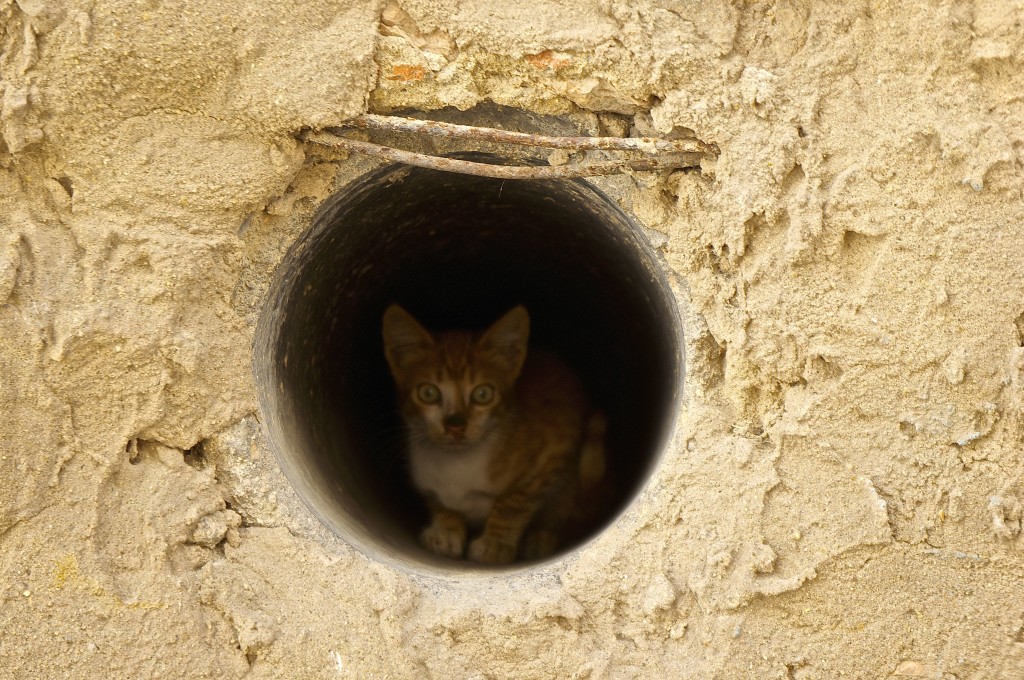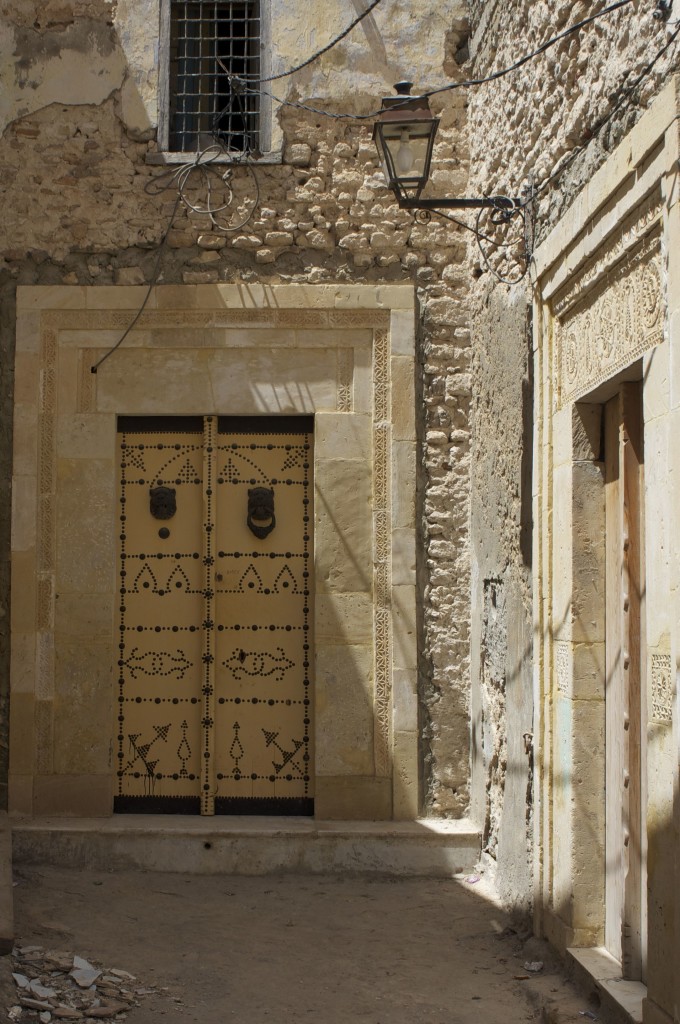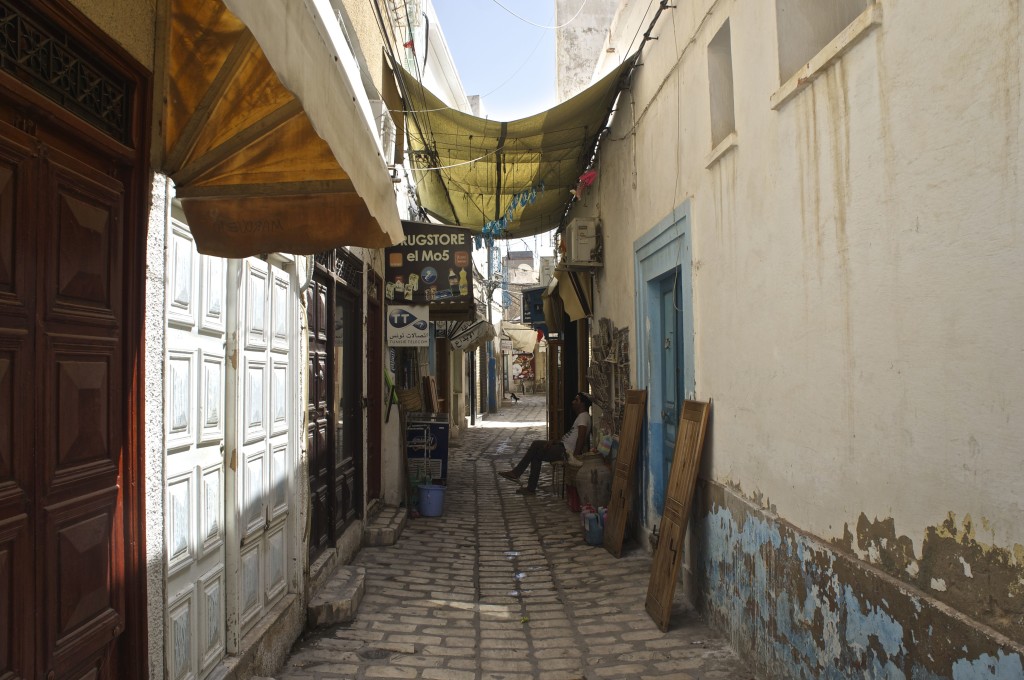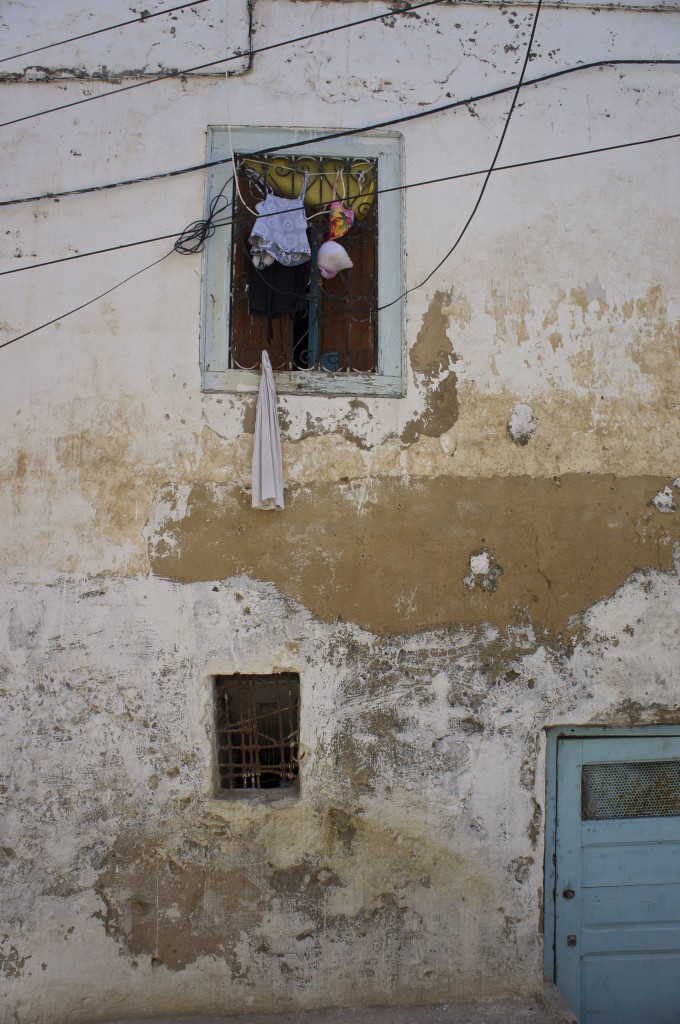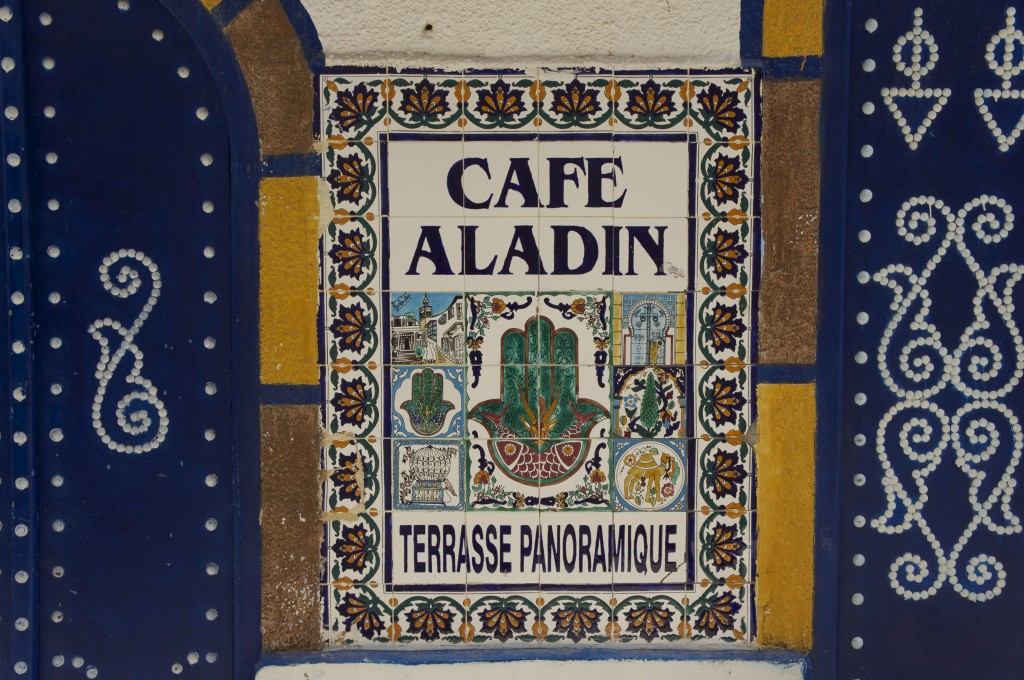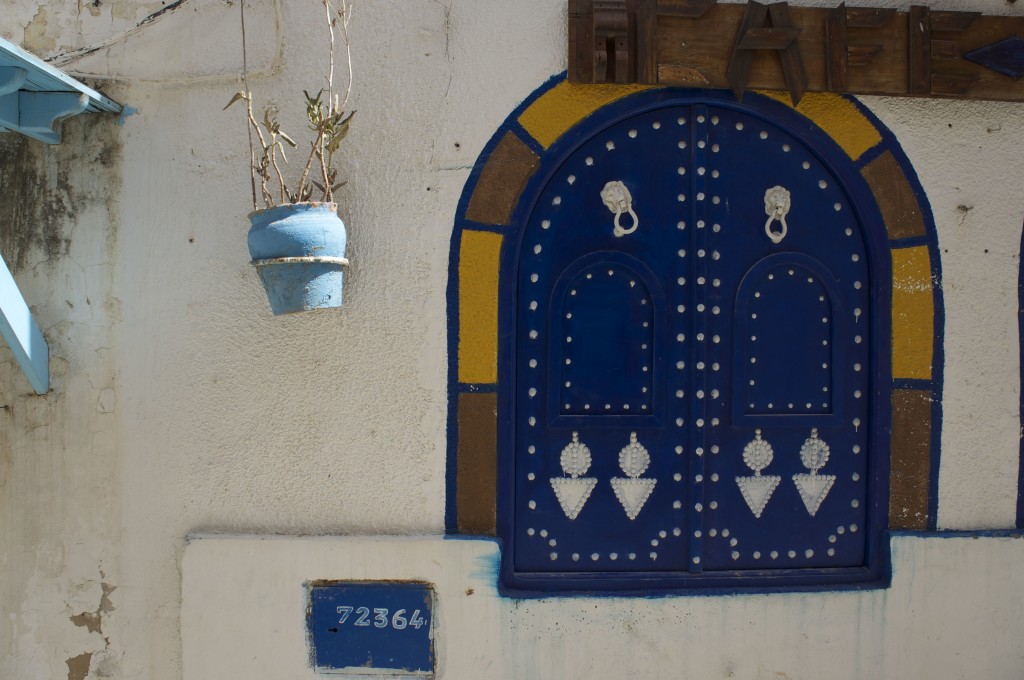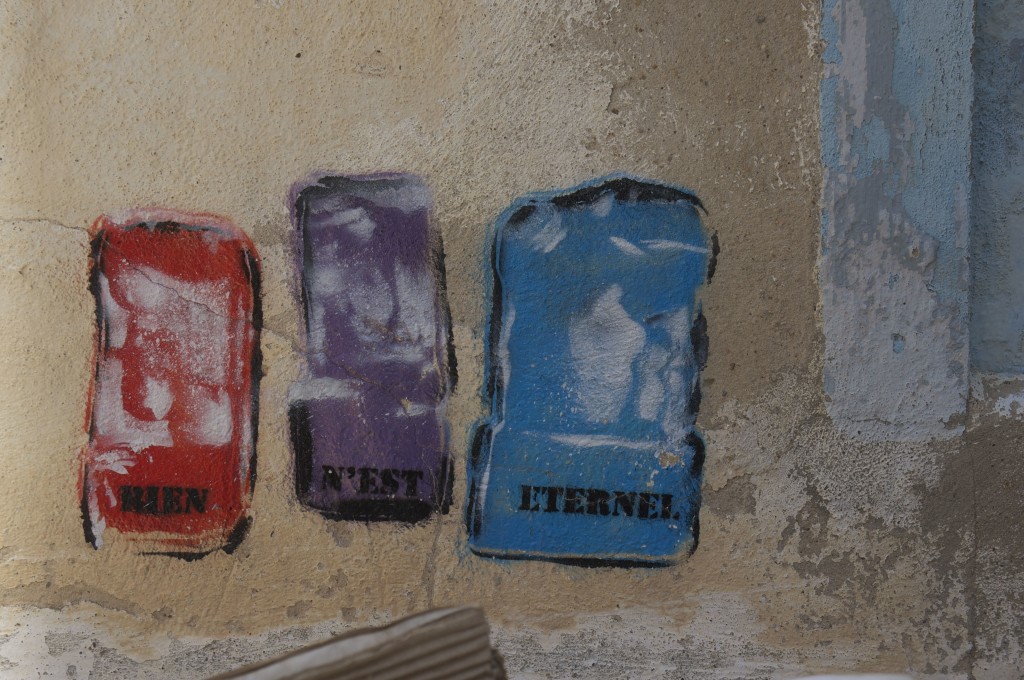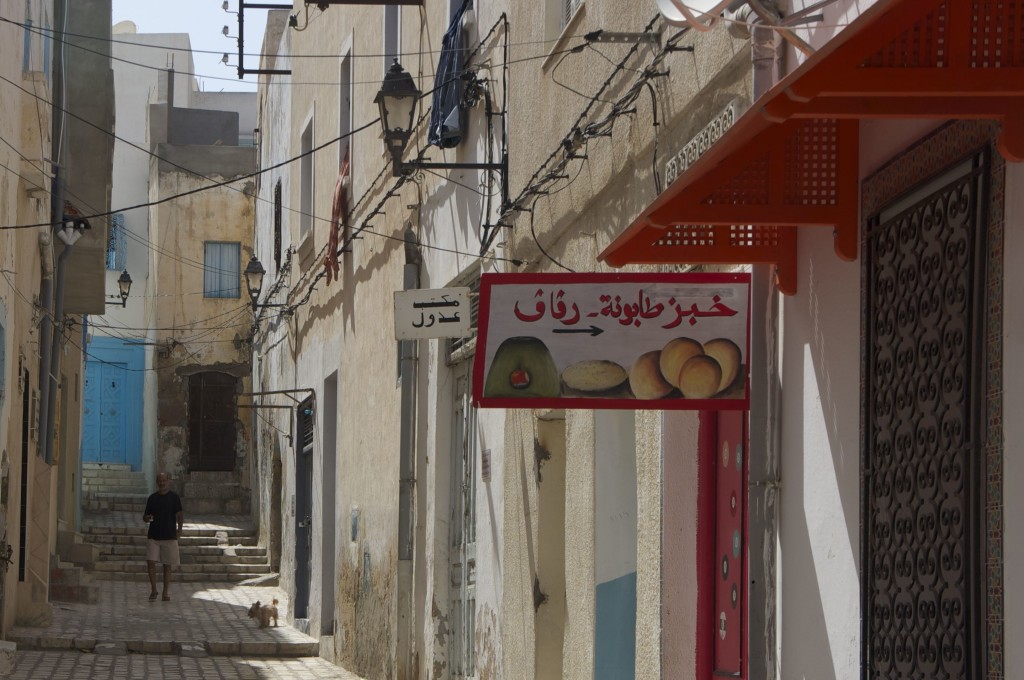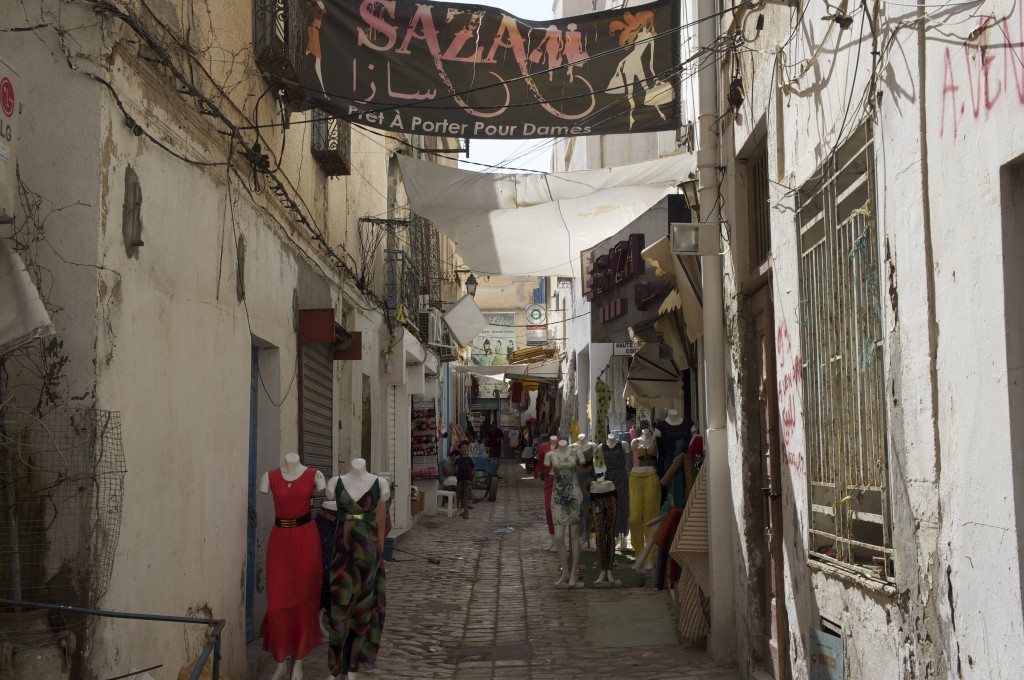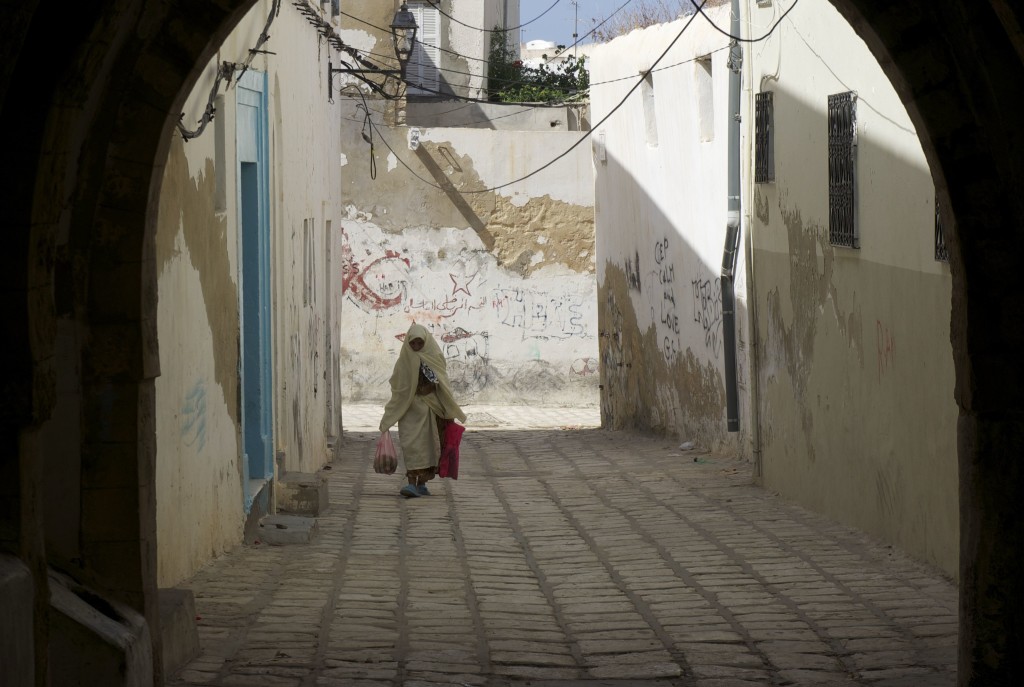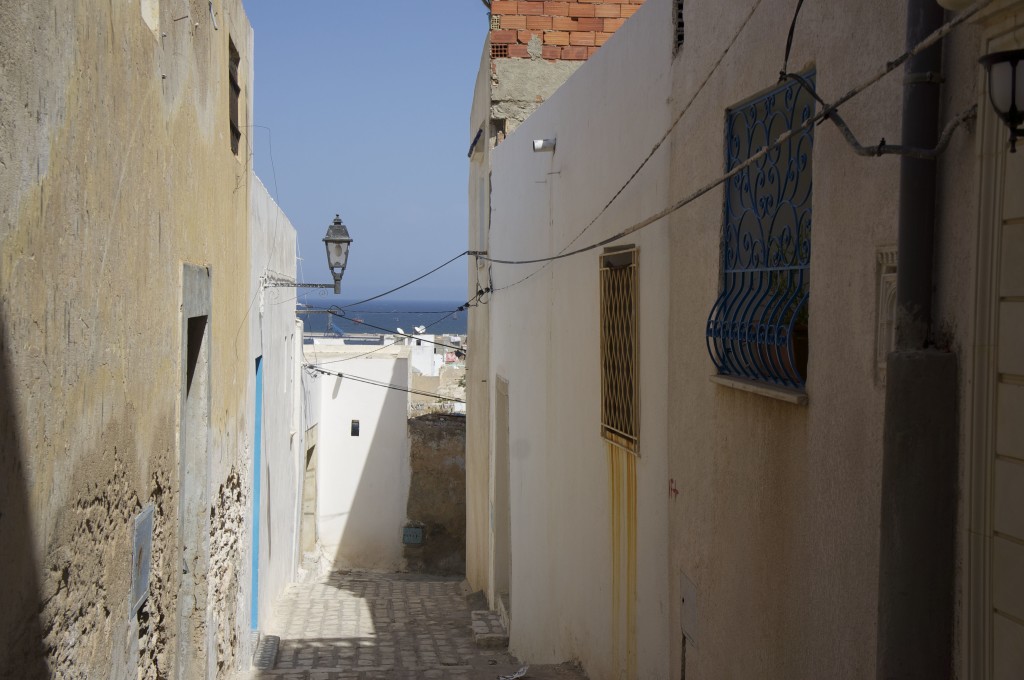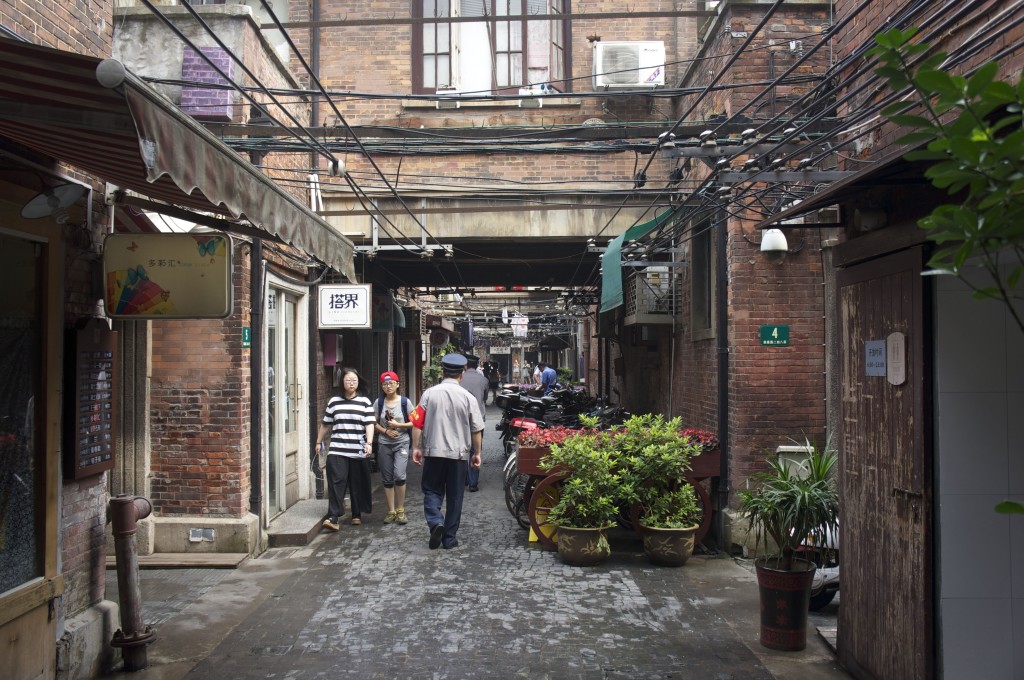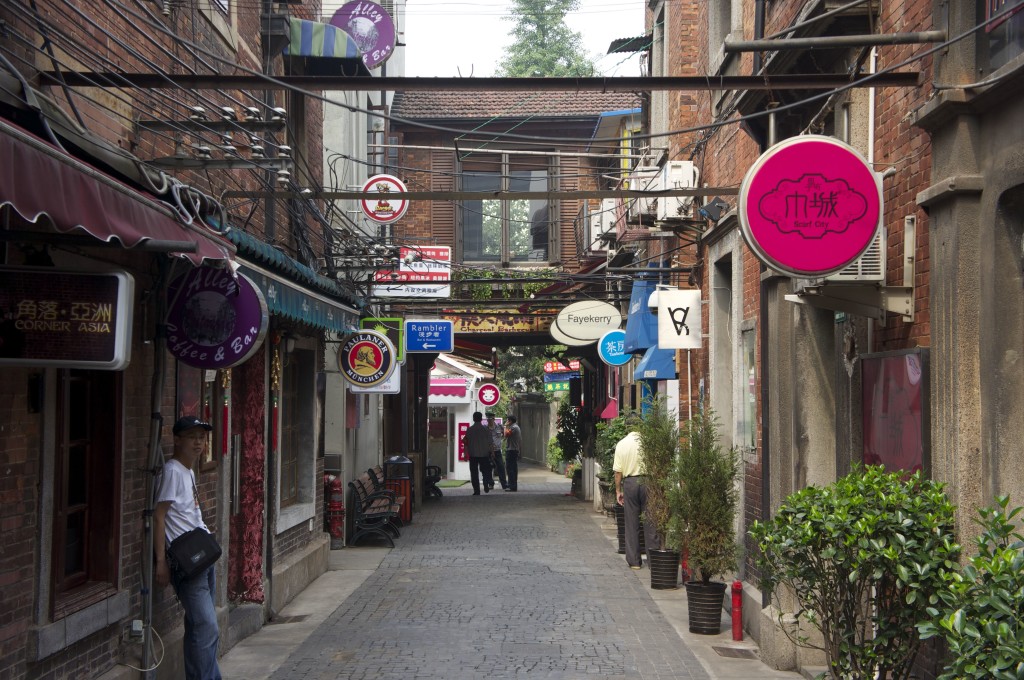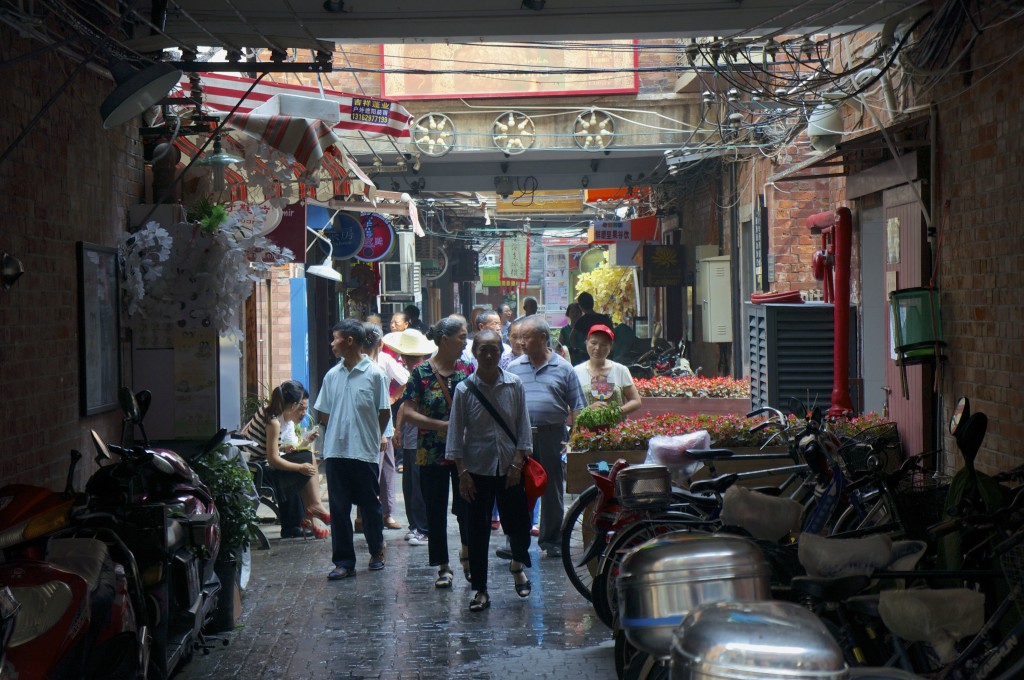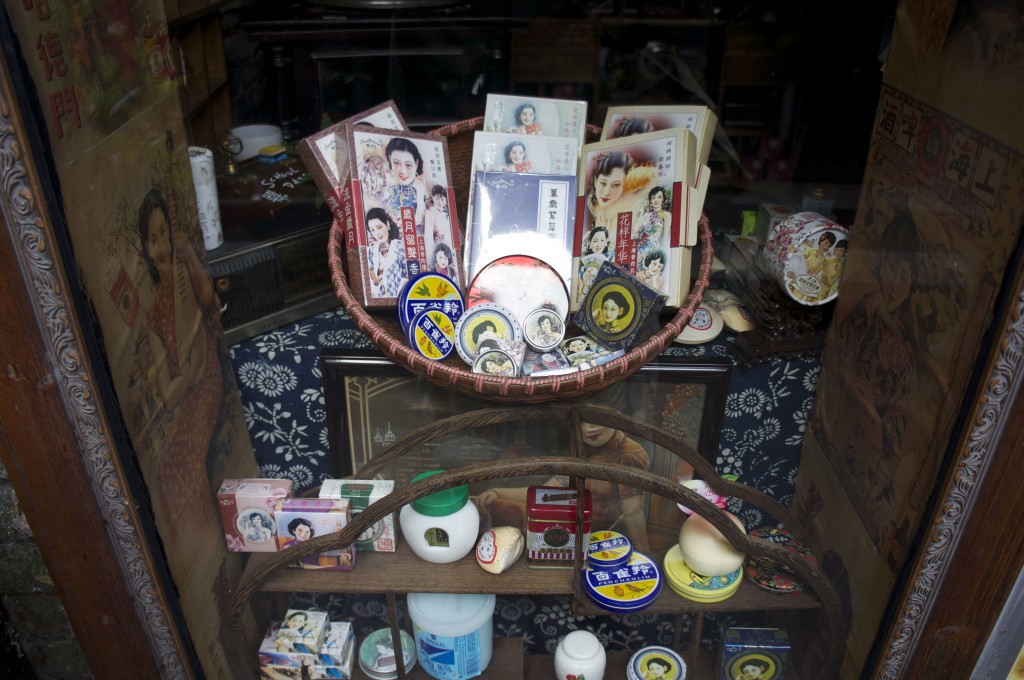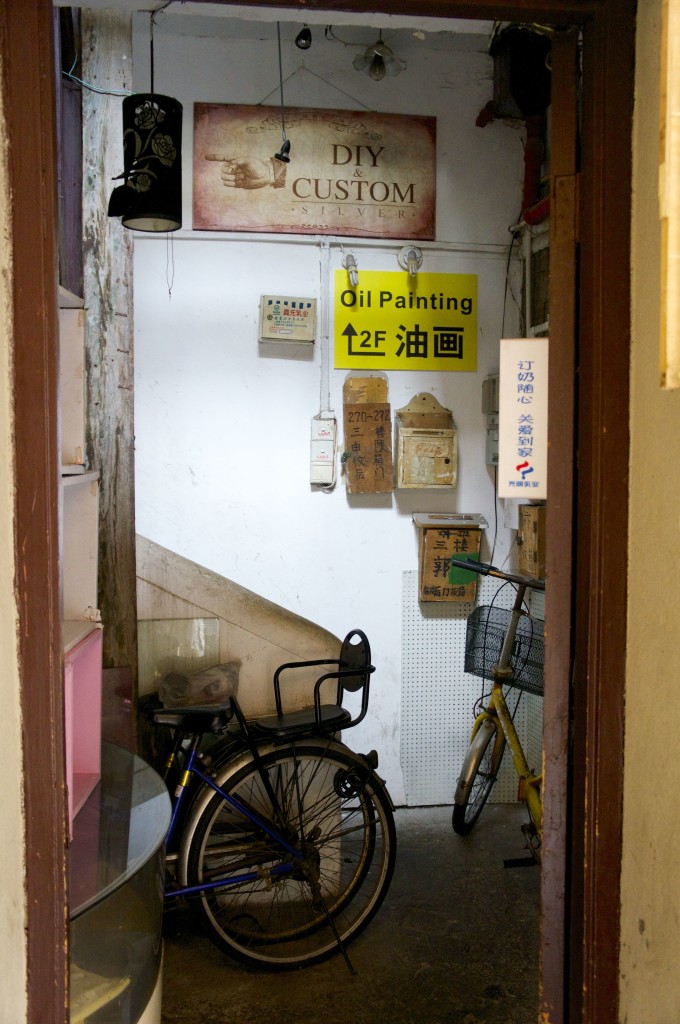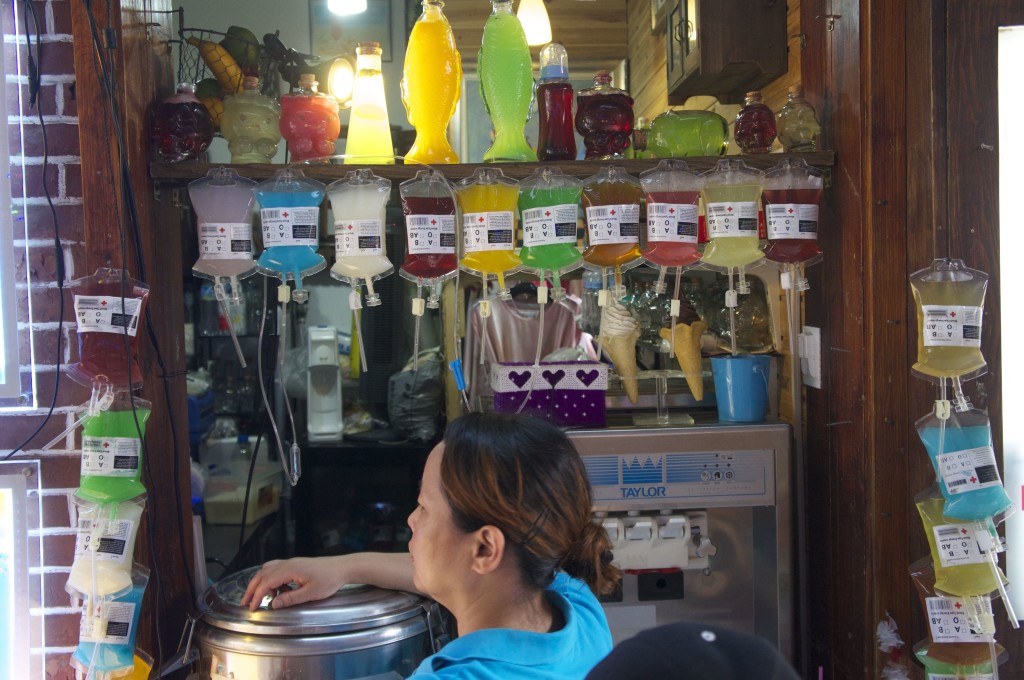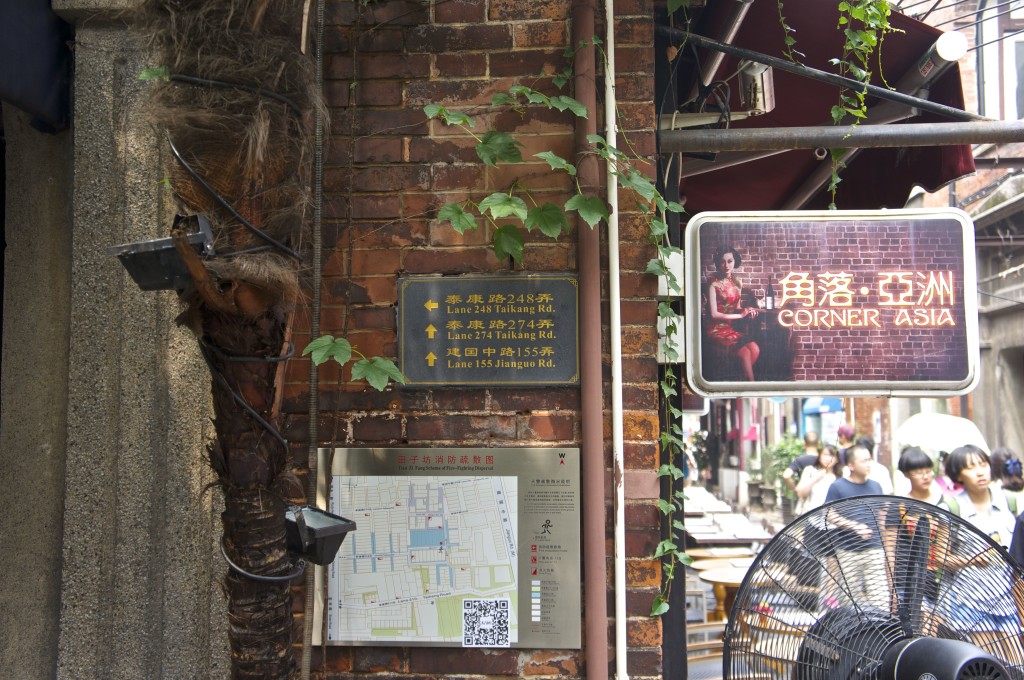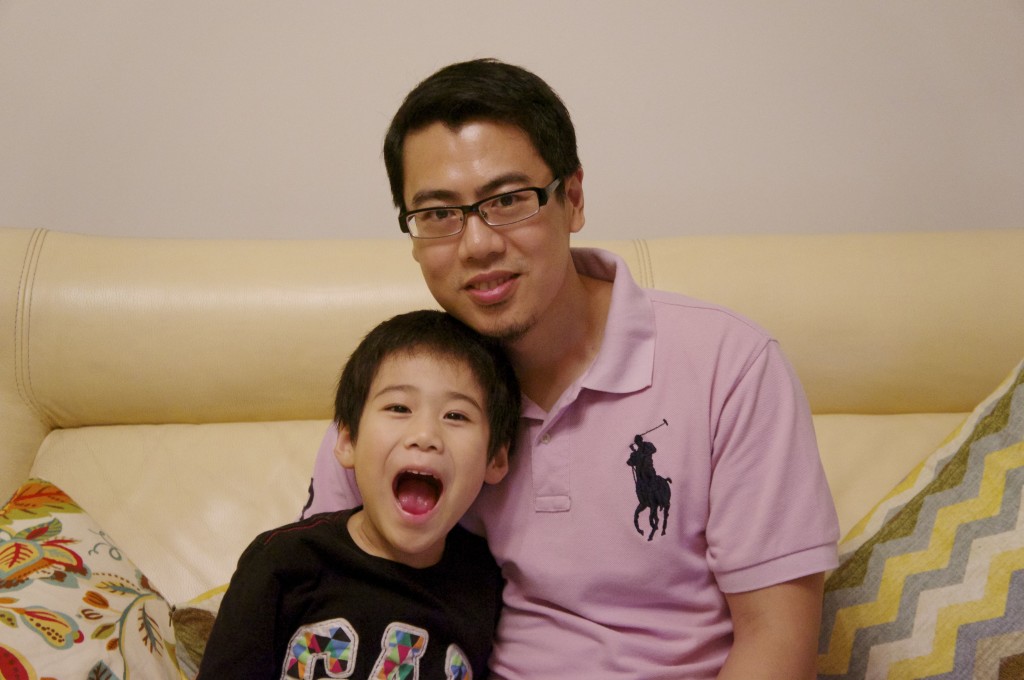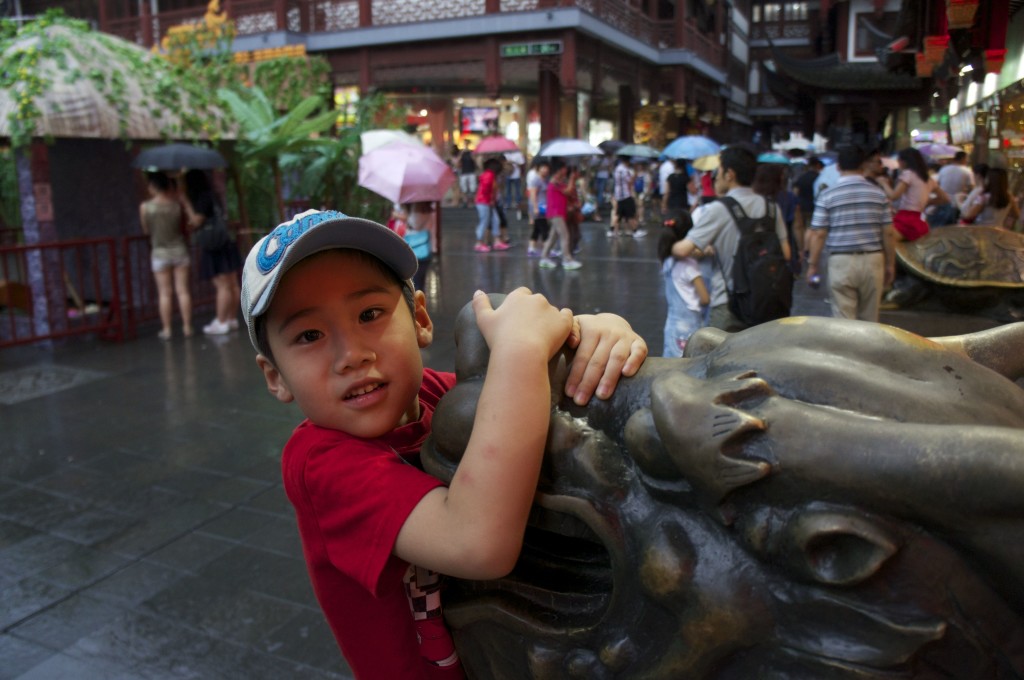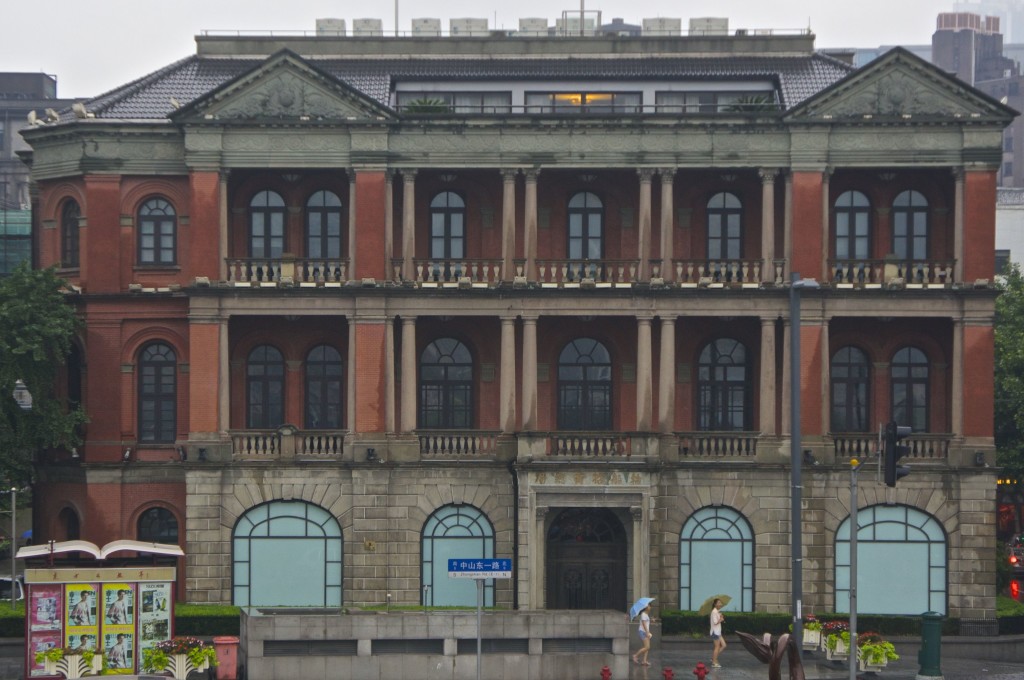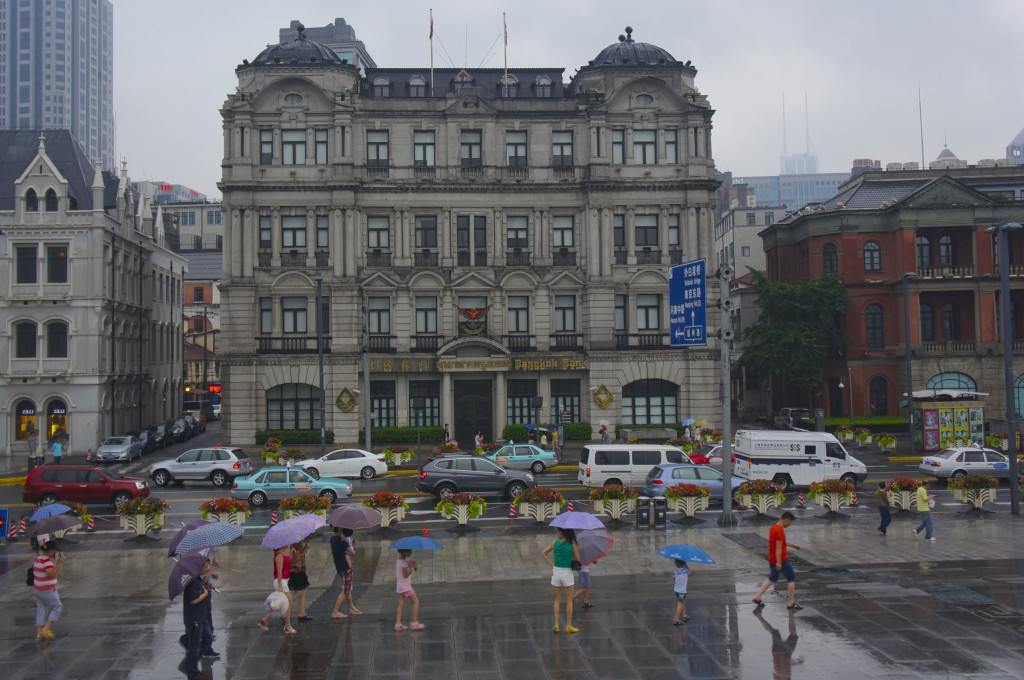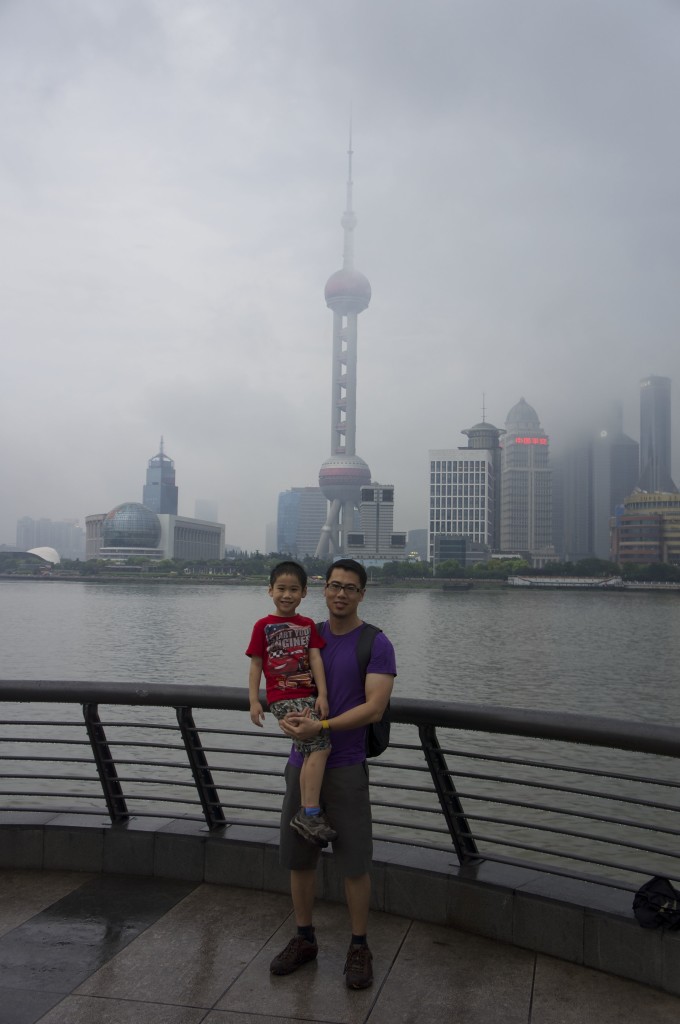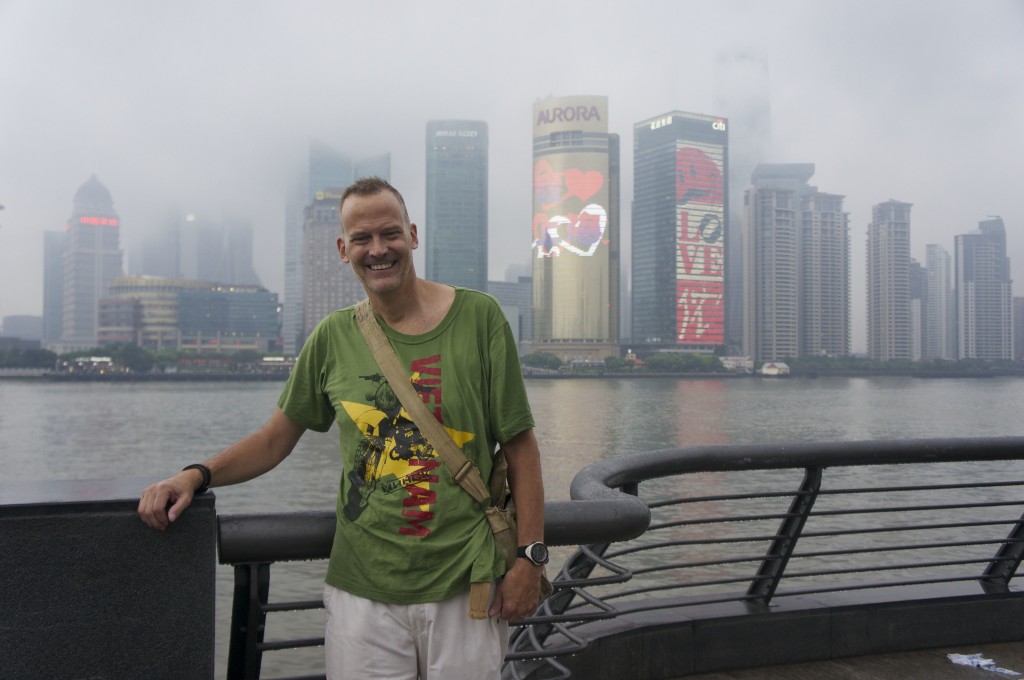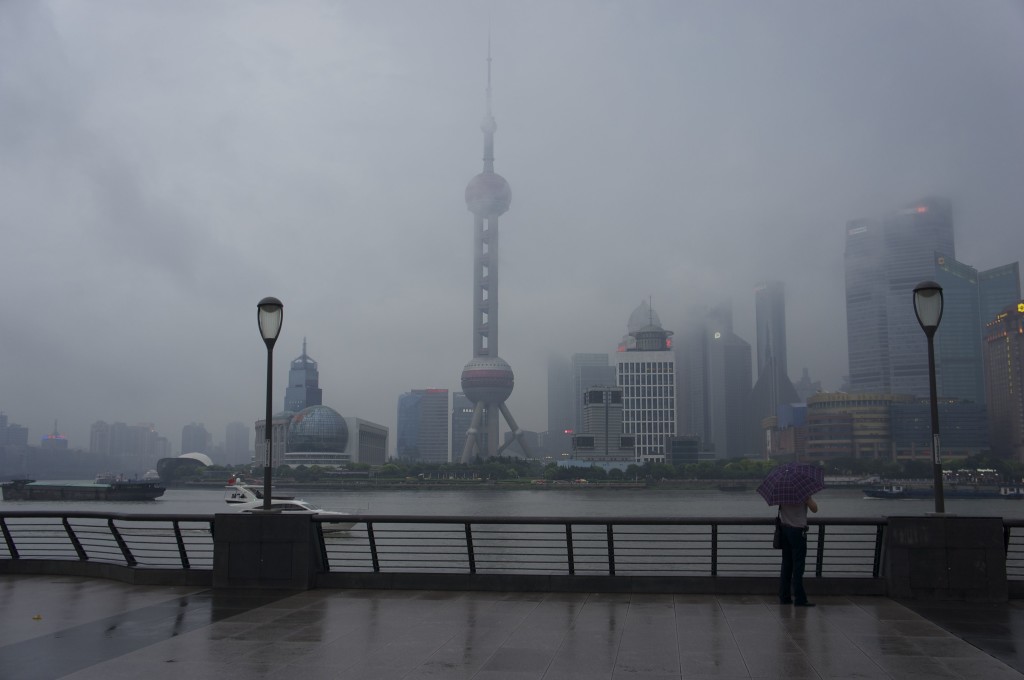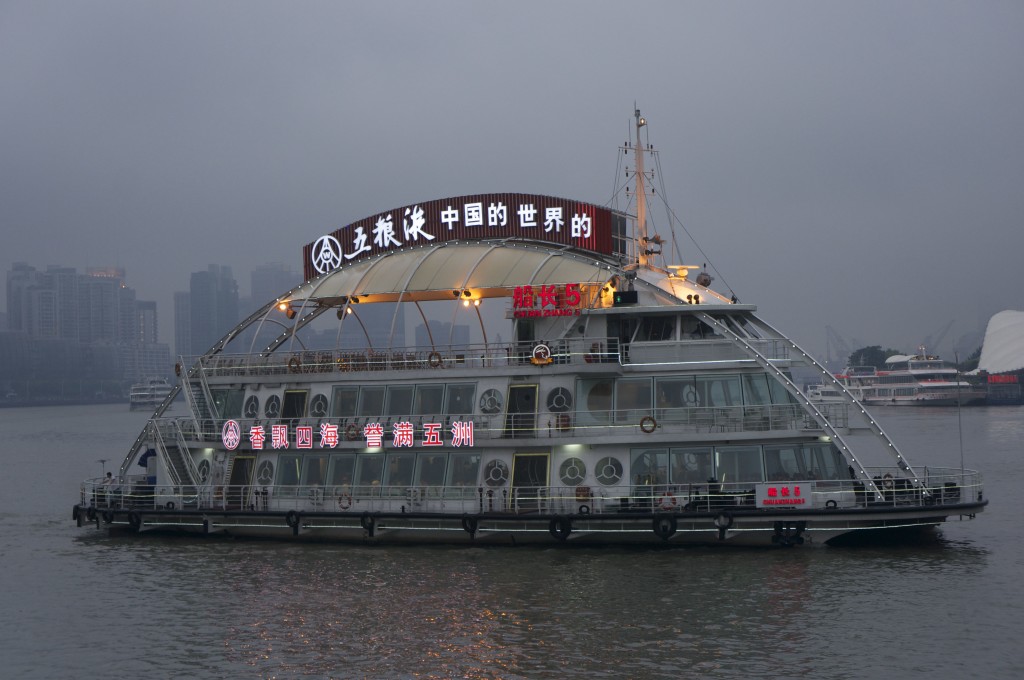The area around Sidi Bou Saïd was settled in ancient times. There are fragments of some Punic flooring here, suggesting that there were villas there even in the third century BCE. It’s located amid what remains of Carthage, a great metropolis before it was destroyed by Rome in 146 BCE. The town was established in the 13th century, but the buildings that stand here today generally date back only to the 19th and 20th centuries. The main street winds up a hill to a cliff from which I looked out across the Bay of Tunis all the way to Cap Bon. It’s a well-scrubbed town, clean and well-kept. I tend to like a little more grit and decay, but there’s no denying Sidi Bou’s charms.
Sidi Bou Saïd: Around Town, Part 1
After touring the Dar El Annabi, I went walking around the town. In 1912, an eccentric French painter and musicologist, Baron Rodolphe d’Erlanger, built an enormous Moorish villa in town and then compelled the town to adopt a by-law mandating that all houses be painted blue and white. The result is either charming or a bit de trop, depending on one’s point of view. The town presents dozens of picture-perfect scenes, but it’s also a tourist trap where the souk sells the same t-shirts and mass-produced ceramics that can be bought elsewhere in Tunisia. Even so, Sidi Bou is well worth the trip.
Sidi Bou Saïd: The Dar El Annabi
On Sunday, I traveled by taxi, train, bus, and light rail trolley to Sidi Bou Saïd, a pretty town nestled on the coast amid the few remnant ruins of Carthage. This trip was not about ancient archaeology, but about the artists and writers who visited or stayed and, for a time, made Sidi Bou Saïd famous among the continental intelligentsia. Paul Klee, Simone de Beauvoir, Albert Camus, Andre Gide, Flaubert, and Cervantes all made their way there.
Almost as soon as I arrived, I toured the Dar El Annabi, a traditional Tunisian house originally owned by a local mufti. Some of its 55 rooms are still occupied by the mufti’s grandson, a cardiologist. It’s a fascinating look at Tunisian design and artistic sensibilities. These pictures were all taken inside his house.
And for those wondering where Sidi Bou Saïd is, I was here:
Musée Archeologique d’El Jem
After exploring El Jem’s Roman amphitheater and the town that surrounds it, we went to the archaeological museum. Roman mosaics excavated nearby constitute 95% of its exhibits. That single-mindedness works, since what the museum lacks in breadth it more than makes up for in breadth. Again I was struck by how long these pieces have endured and wondered what of our own culture will be exhibited two thousand years from now.
El Jem: The Roman Amphitheater
In the second century CE, Tunisia was part of the African breadbasket of the Roman Empire. El Jem, in this pre-Arab world, was called Thysdrus and was something of a vacation spot for merchants who had gotten rich from the olive oil trade. As the wealthy are wont to do, they compelled the government to erect grand public works that would bring fame and prestige to their town. And so a Roman amphitheater with an audience capacity of between 30,000 and 43,000 was constructed in what even then was a small town, making it the Foxboro Stadium of its day. According to The Rough Guide to Tunisia, it is now “the single most impressive Roman monument in Africa.”
The tallest building in today’s El Jem is two stories tall. It’s therefore a jolt to walk around a corner and see the monumental ruins of the amphitheater. It makes me wonder whether any of the grand structures we build today will still be around in 1,800 years.
The amphitheater is still used for concerts and other performances, most notably the summertime International Festival of Symphonic Music. The festival recently closed for the season, but I hope to return for a concert next year; the amphitheater would be a spectacular place for an evening concert. The ruins have also been used as a location for various movies, including Monty Python’s Life of Brian.
My traveling companions were AMIDEAST’s fixer extraordinaire, Malek, and his friend Amine. The three of us paid our admission fee (as Tunisian nationals, they paid only 8 dinars while I had to pay 10) and began to explore.
The guidebooks I’ve consulted agree that the El Jem amphitheater is better preserved than the Colosseum in Rome. Not having been to Rome, except to change planes, I wouldn’t know. But it was amazing to see the hundreds of interior stone arches that are precisely fitted, as opposed to mortared, together.
According to local legend, the amphitheater was where Kahina, a Berber queen, led an heroic last stand against the Arab invaders in the seventh century. The structure was damaged again by war in the seventeenth century. Today it is a UNESCO World Heritage Site.
Below is some of the oldest graffiti I saw carved into the ruins. I searched for obscene Roman scrawls (maybe something like “Lavinia futui vult in asino”), but in vain.
There are tunnels running under the complex where wild animals were kept in cages, which could then be hoisted up to the stage so that the crowds could enjoy the spectacle of watching them tear each other (or hapless people) apart. The wildlife present now is considerably tamer.
Day Trip to El Jem
I took advantage of a day off to go to El Jem, a town about an hour south of Sousse by train. The main attraction there is a very well preserved Roman amphitheater from the third century BCE. But the surprise for me was the town around the ruins, a small settlement with nice cafes and antique shops. It looked like this:
I was here:
Siem Reap is #7
I was pleased, but not surprised, to read just now that Siem Reap, Cambodia, was rated the seventh friendliest city in the world by Conde Nast Traveler.
When I was there in late April, I was so impressed with place that I wrote “After a few days there, I left thinking that even if Angkor was not just a tuk tuk ride away, Siem Reap would be a fine place to visit or to live.” Nice to see that the posh readers of Conde Nast think so too.
First Look at Sousse
After my unexpectedly costly journey from Tunis to Sousse, I woke up Saturday morning determined to look at my new hometown through fresh eyes.
This is what I saw.
Here’s the view from my hotel room balcony. Note the church — an unexpected find in this Muslim country.
As I walked out of the hotel lobby, this was my view of the Mediterranean Sea at the end of the street.
The beach is not a Beautiful People’s playground; it’s much more of a local family scene. The sand is fine and the water is clear and unimaginably blue.
I made my first foray into the medina, a UNESCO World Heritage Site, a huge walled city-within-a-city.
I didn’t explore ten percent of it, but I’m sure I’ll be back often.
I was here:
A Low Point
My travel luck ran out last Friday on the train from Tunis to Sousse.
It was six in the morning and I was jet-lagged, insufficiently caffeinated, and burdened by two heavy suitcases, a heavy leather duffel, and a bulging nylon shoulder bag.
As I struggled to board the train, a fellow pushed by me. Then he feigned confusion, turned around, and pushed by me again. And again.
My only thought at that time was “what a rude idiot.” It never even occurred to me that he was actually a smart thief.
It wasn’t until I got to my seat and saw a zippered compartment of my shoulder bag open that I realized what had happened: I’d been robbed of an cash envelope that had been in my bag.
The only other time I was ever robbed while traveling was in Bath, England, about 25 years ago, at a very posh B&B. I suppose I can bear it once every quarter century.
I think of my loss now as tuition in the College of Hard Knocks & Unmindfulness. Last Friday, though, I was pretty miserable. And my first look at Sousse was colored by the loss of my hard-earned cash. I thought seriously of turning around and heading back to the US or to China.
I’ve since recovered most of my usual good humor and curiosity about Tunisia and the world around me. But in my last 14 months of travel to ten different countries, I have never felt so low.
Shanghai 2
The two highlights of my trip to Shanghai were walking through the neighborhood around Tianzifang Street and seeing my old friends and students.
It can be hard in Shanghai — and elsewhere in China — to find older buildings that have been well-preserved and are still in use. China is currently building new museums by the hundreds, and while I enjoy museums, I enjoy living history even more. I found my fix on Tianzifang Street, a neighborhood in the former French Concession of two-story red brick buildings, picturesque alleys, and vintage electrical wiring (which often doubles as clothes line).
The area is now given over to artists, boutiques, craft shops, and comfortable bars and restaurants, but it is still a residential area too. It reminds me of an Asian version of parts of Boston such as Back Bay, the South End, or Beacon Hill. Yes, it’s heavily touristed (much as those Boston sites are), but even the groups of out-of-town Chinese following their flag-bearers through the alleyways there couldn’t kill the essential charm of the place for me.
My final day in Asia was spent with the people who inspired me to go live in China: Wu Gang, Wang Wei, and their son Max. When they lived in the Toledo area, I tutored them in English once or twice a week. Soon I felt like an adopted member of their family. They were warm, fun, smart, thoughtful, and caring. Watching them successfully adjust to the shock of moving from Shanghai to Haskins, Ohio gave me the idea and the courage to do something similar. It was fitting, then, that seeing them again was the capstone of my thirteen months in Asia.
Unfortunately, Wang Wei was not feeling well during my visit, but her absence from the pictures I took does not connote an absence from my heart.
Wu Gang and Max took me to the Bund, the row of colonial-era banks, shipping companies, law firms, and import/export houses that made Shanghai into one of the largest commercial and financial centers in the world. On a misty, rainy evening, we walked along an esplanade by the bank of the Huangpu River. To our left were the historic buildings of the Bund.
To our right and across the river lay Pudong, where so many of the now-iconic contemporary buildings of Shanghai touch the clouds.
It was a magical moment. The experience of walking with friends on my last night in China and seeing the past glories of the Bund to my left, the contemporary dynamism of Pudong to my right, and ships on the river heading out into the big wide world seemed to sum up my life at that moment.
Thirty six hours later, I touched down in Detroit for a brief return to the U.S. before heading to Tunisia, where I will be living for the next year.
Stay tuned . . . .
